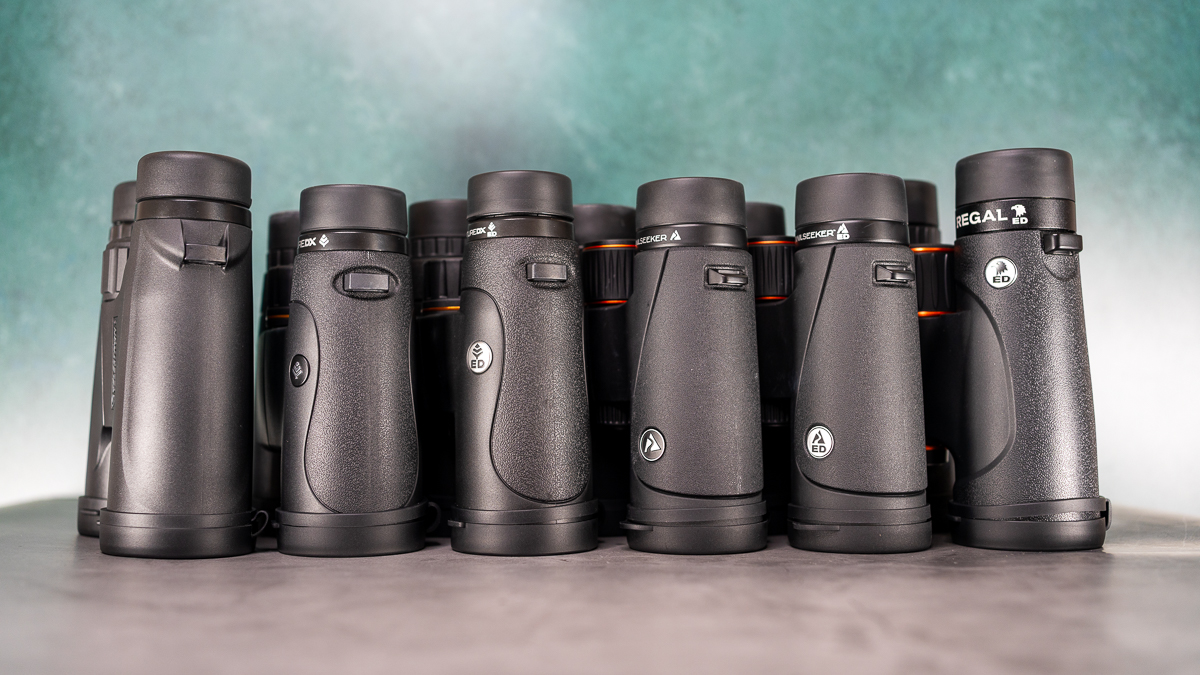Best Garmin watches 2025: From fitness bands to adventure smartwatches
Whether you're an outdoor adventurer, runner or occasional exerciser, these are the best Garmin watches to snap up this holiday season.
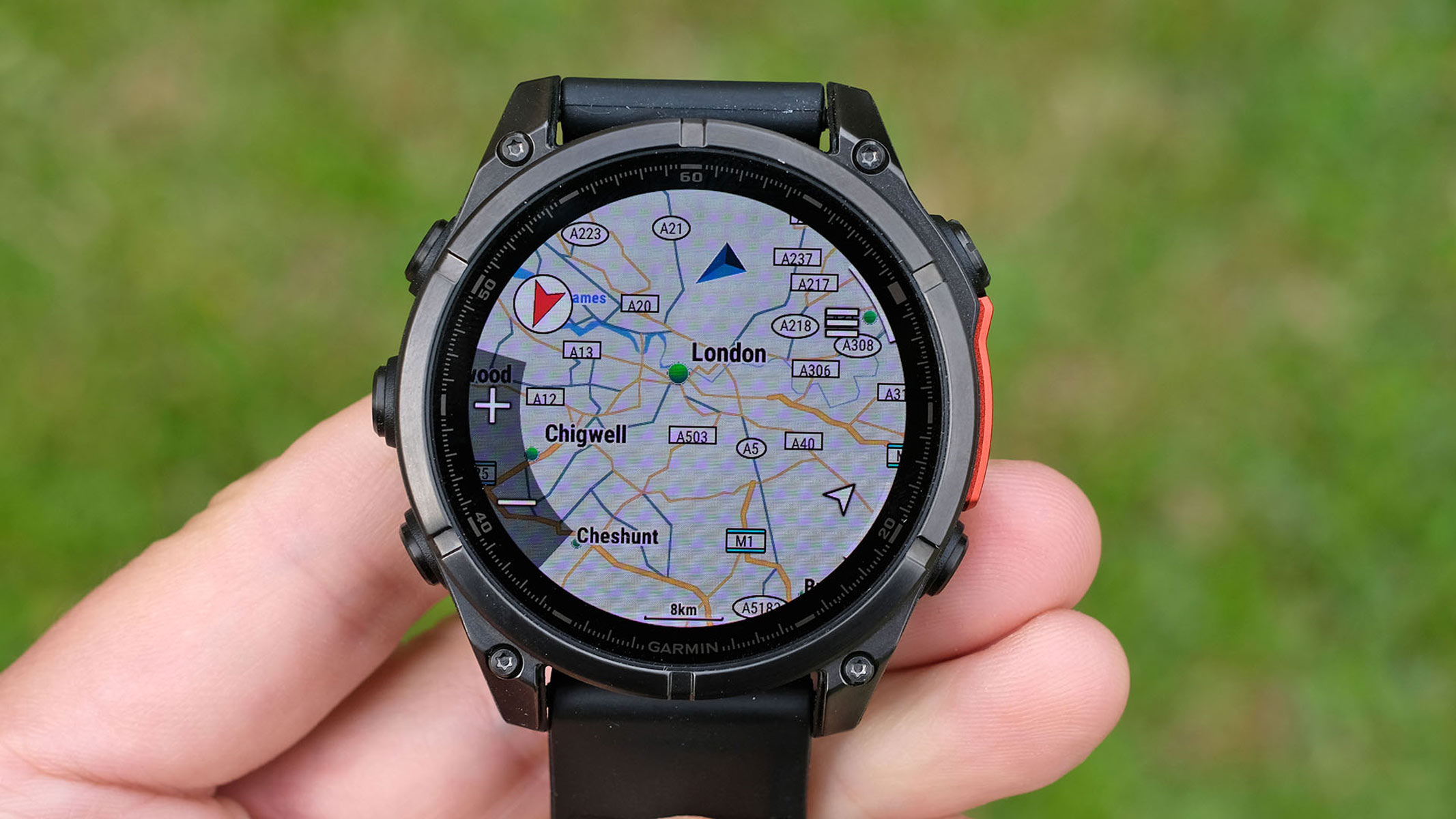
Whether you're an indoor or outdoor exerciser, one of the best Garmin watches can help you track your progress and remain focused on your fitness goals. With their refined tracking tools, Garmin watches often feature in our best fitness trackers guide and can help take your workouts to new heights.
There are many Garmin watches to choose from, with different models being better suited to different sports or exercise. Understanding which one may suit your needs can be a difficult feat, so we've tried and tested numerous Garmin watches to give you the lowdown. This guide shows you the best Garmin watches available while also highlighting which purpose they suit best. If you snap up one of these tech gems in the holiday sales, you will surely not regret it.
We test all of our fitness trackers using the same testing protocols so we can attest to the advantage that a well-picked Garmin watch can have over many other excellent models. Unsure what to even look for? Our Garmin watches FAQs may be of help here. And if Garmin is out of your price range, check our guide to the best budget fitness trackers for more useful buying advice.
The quick list
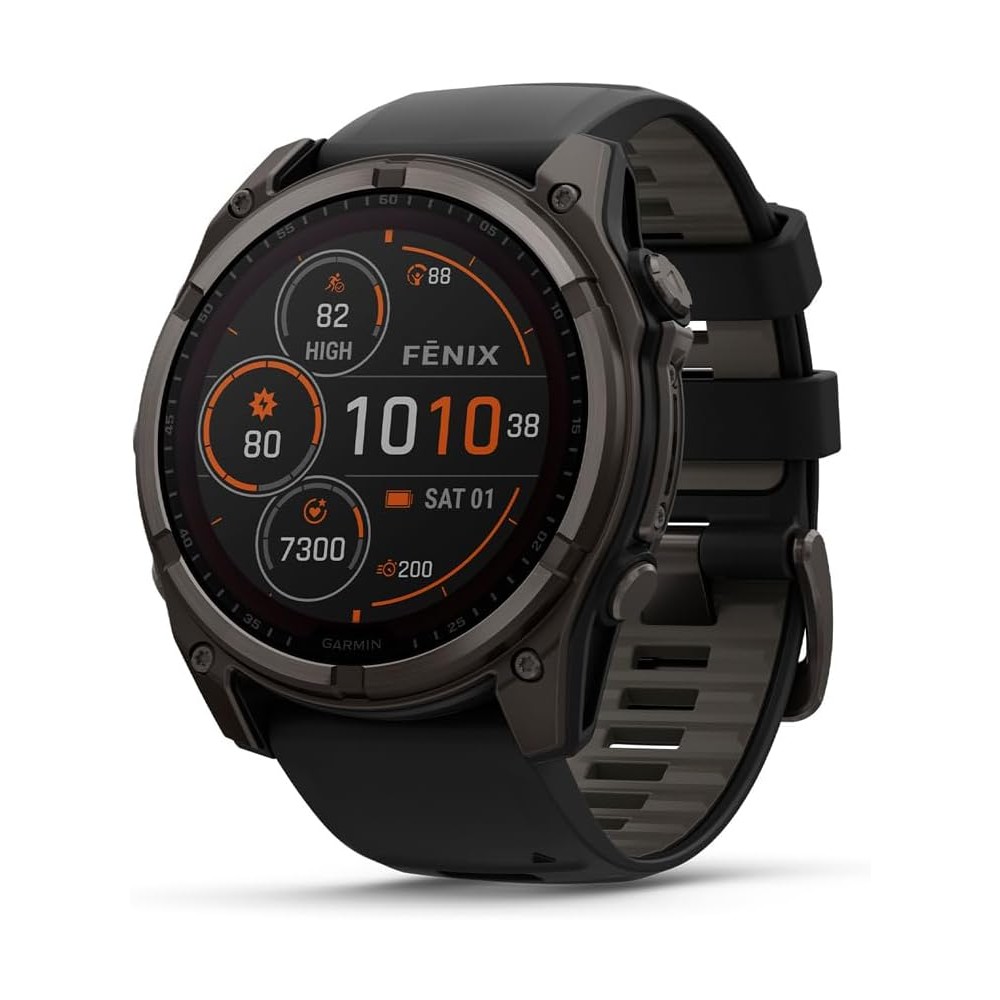
Best overall
Sturdy, thoughtfully designed and jam-packed with tracking features, this excellent all-rounder has everything you may ever want from a Garmin watch.
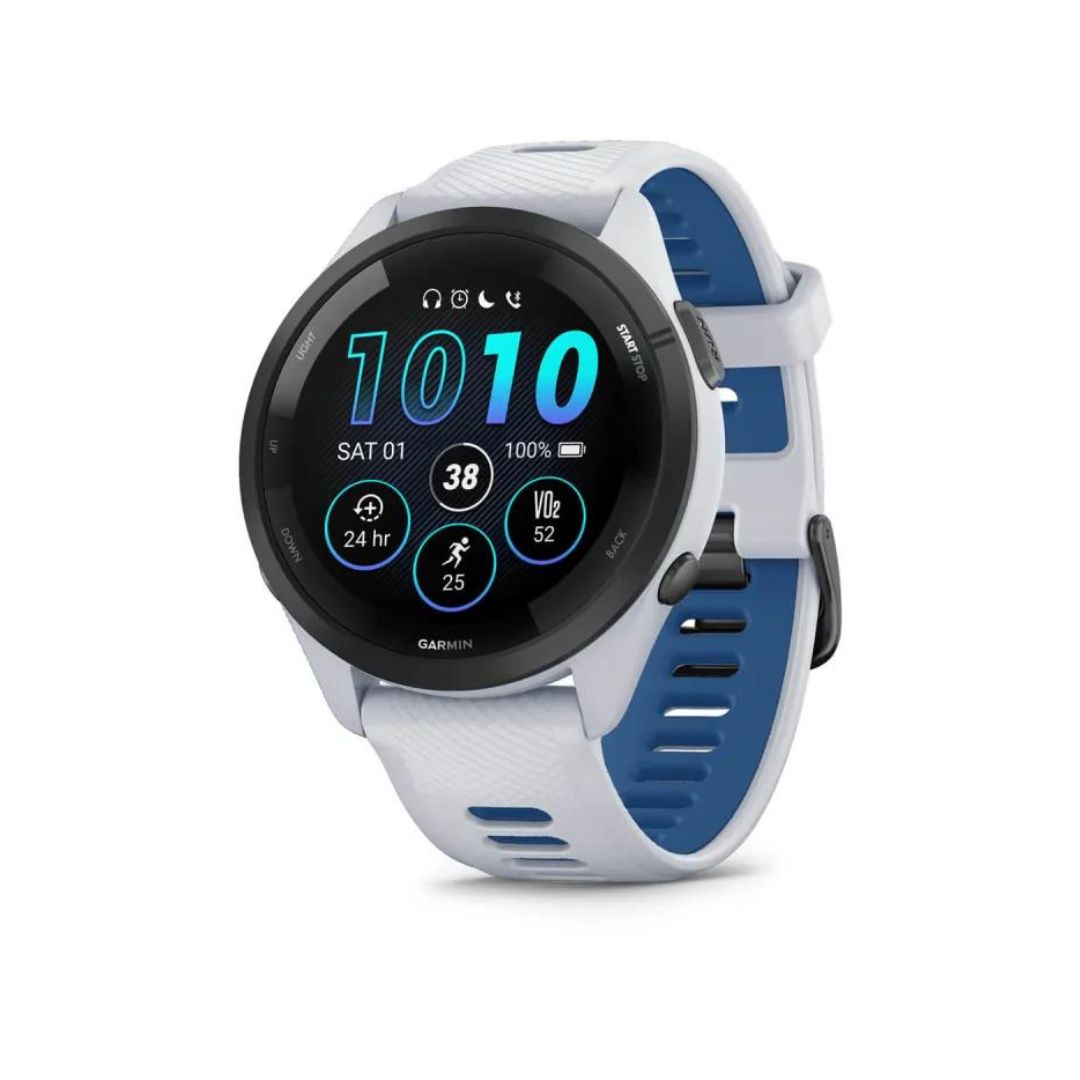
Best mid-range
Designed with fitness enthusiasts in mind, this watch offers plenty of excellent workout tracking features, without costing the earth.
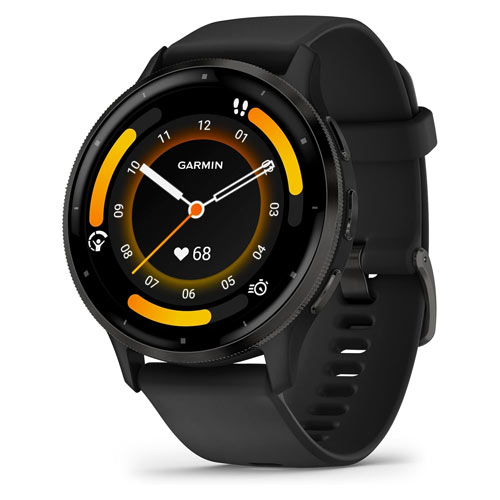
Best for daily use
Our reviewer called this Garmin "the most smartwatch-like wearable to date" and with it being so comfortable to wear, it's perfect for 24/7 use.
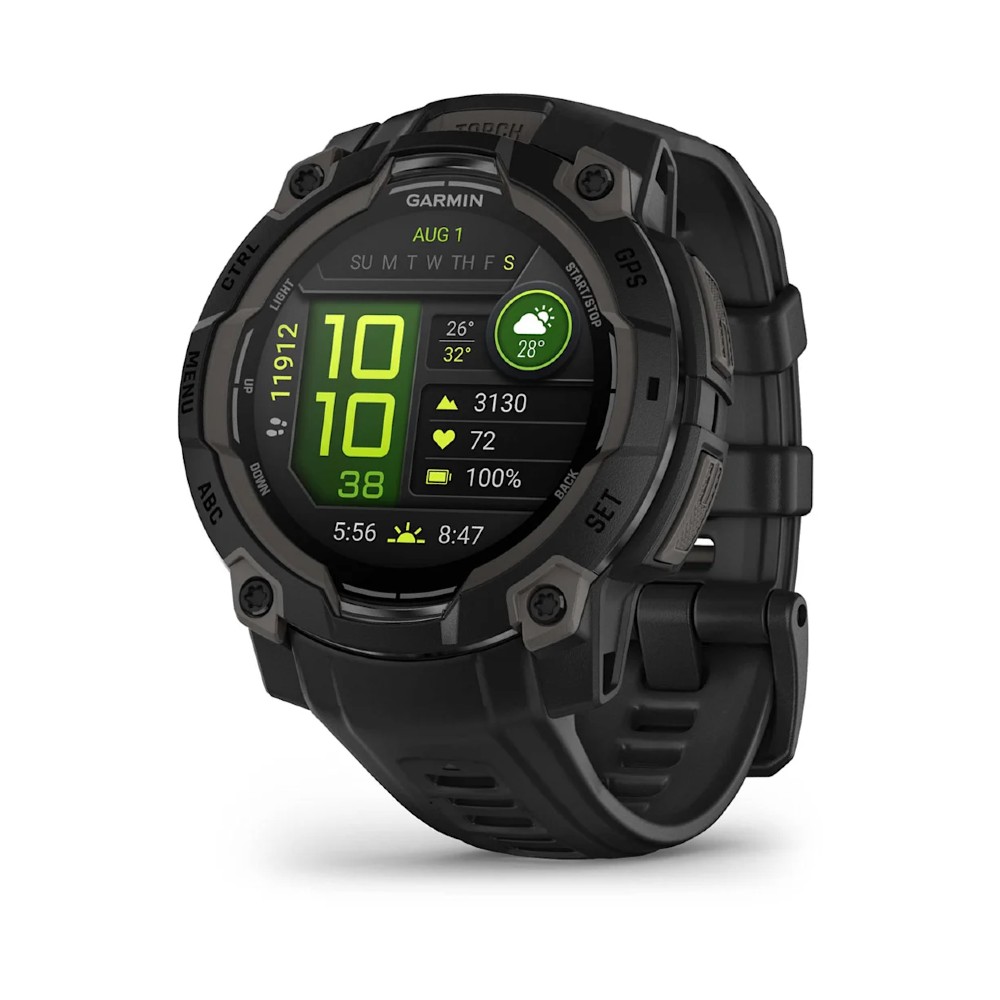
Best for triathletes
This solar-powered watch has everything a triathlete may want: a water-resistant design, excellent tracking accuracy and long battery life.
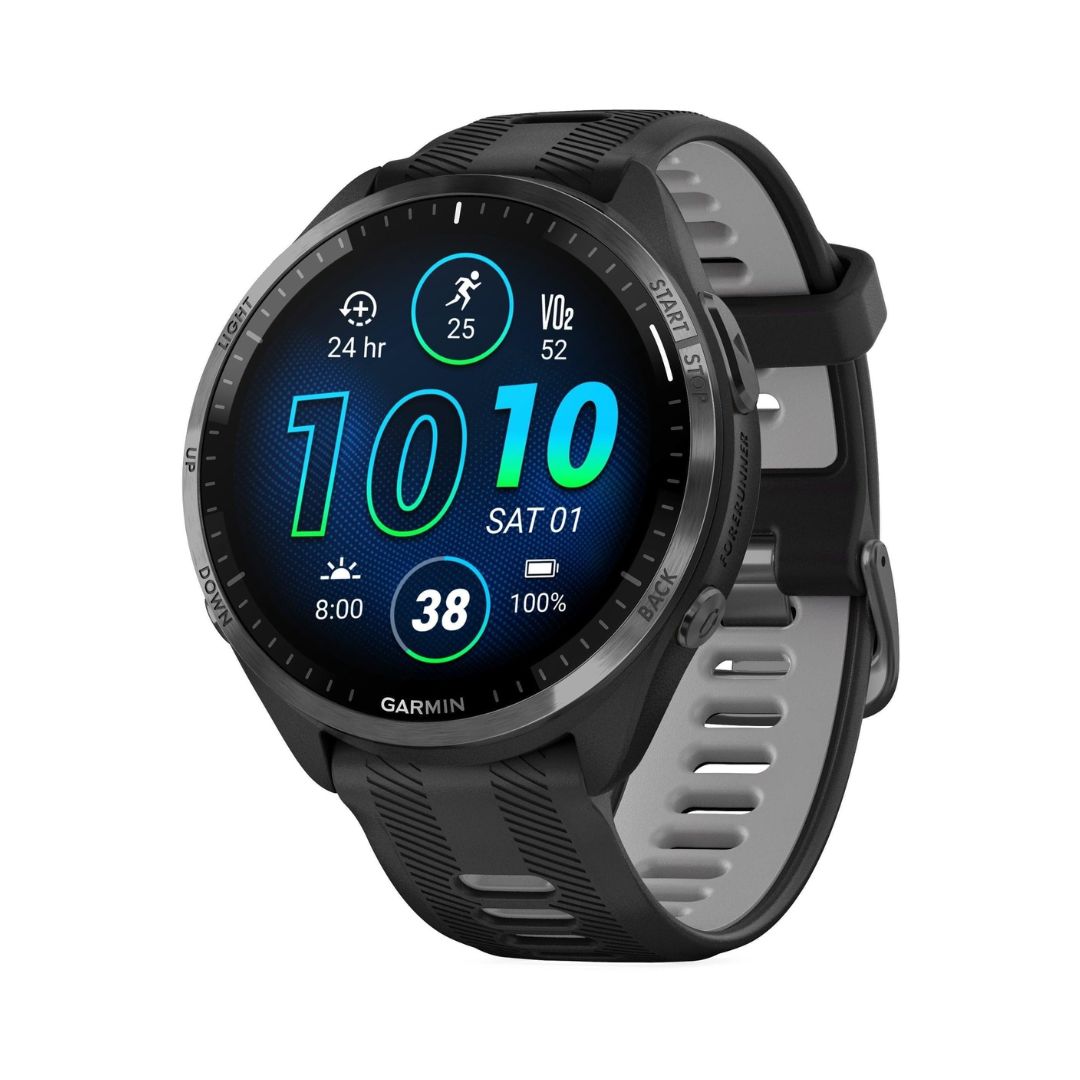
Best for high-end features
Want the traditional Garmin functionality, but not the rugged looks? This premium watch combines high-end features with a no-nonsense design.
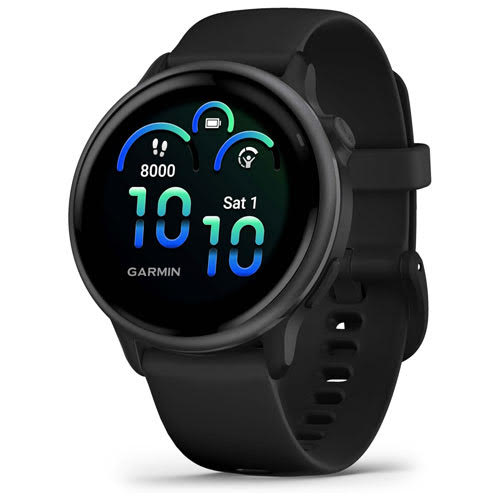
Best for hikers
A lightweight Garmin that accurately tracks your walks and location, offering suggested walking workouts for those new to exercise.
Load the next 4 products ↴
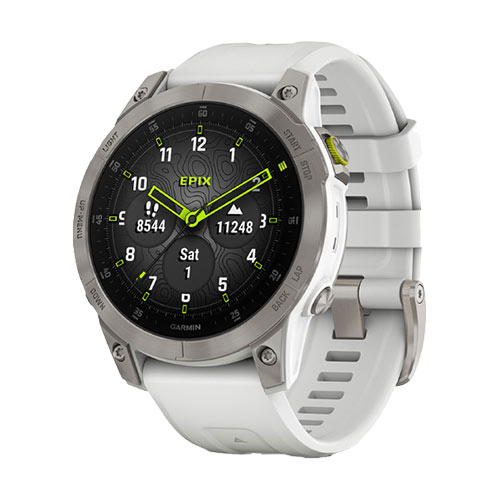
Best for smartwatch features
The immensely stylish Garmin Epix 2 offers an excellent combination of in-depth tracking features and smartwatch functionality, easily rivalling the Fenix 8. The caveat? A relatively high price tag.
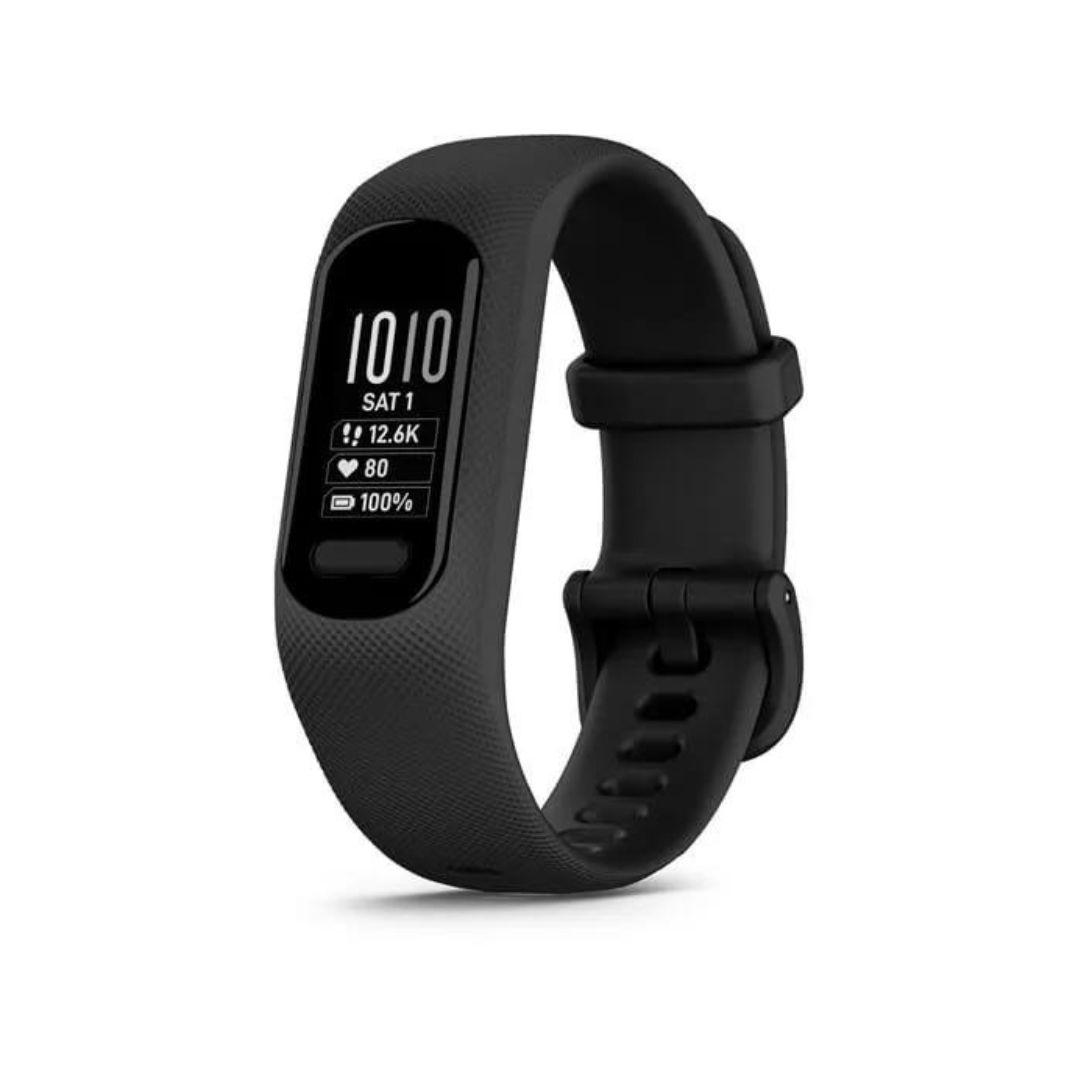
Best on a budget
While it is the lowest-rated Garmin watch in this guide, the Vivosmart 5 still offers excellent value for money if you can look past its plastic build, basic monochrome screen and limited features.
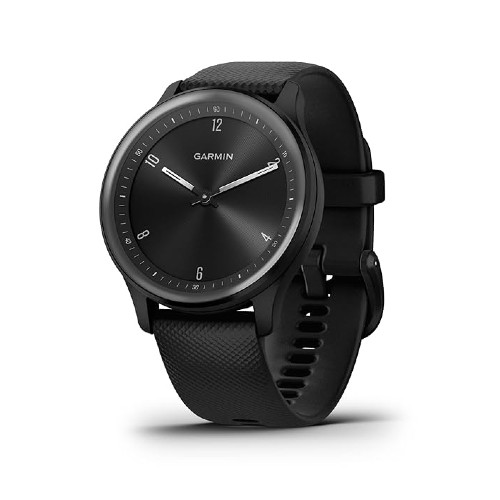
Best for occasional exercisers
Light, stylish and comfortable to wear, the Garmin Vivomove Sport is a perfect all-rounder for those looking to track basic gym-based workouts — and it is relatively affordable, too.
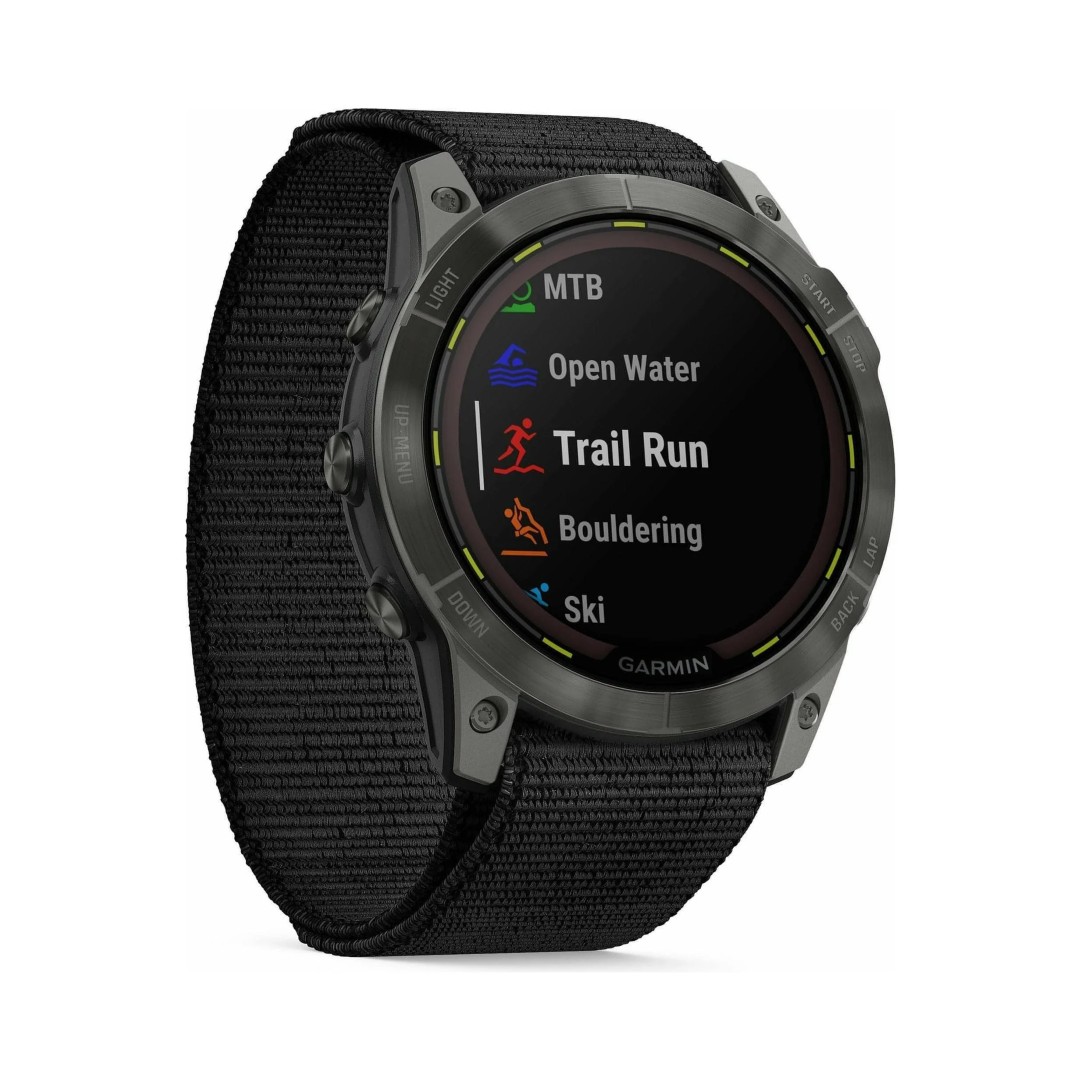
Best for long hiking trips
A perfect hiking companion, the feature-packed Garmin Enduro 2 can last up to 46 days on a single charge, and it comes with a reliable GPS and excellent on-watch maps.
The best Garmin watches we recommend in 2025: Fully tested by our expert smartwatch reviewers
Why you can trust Live Science
The best Garmin watch overall
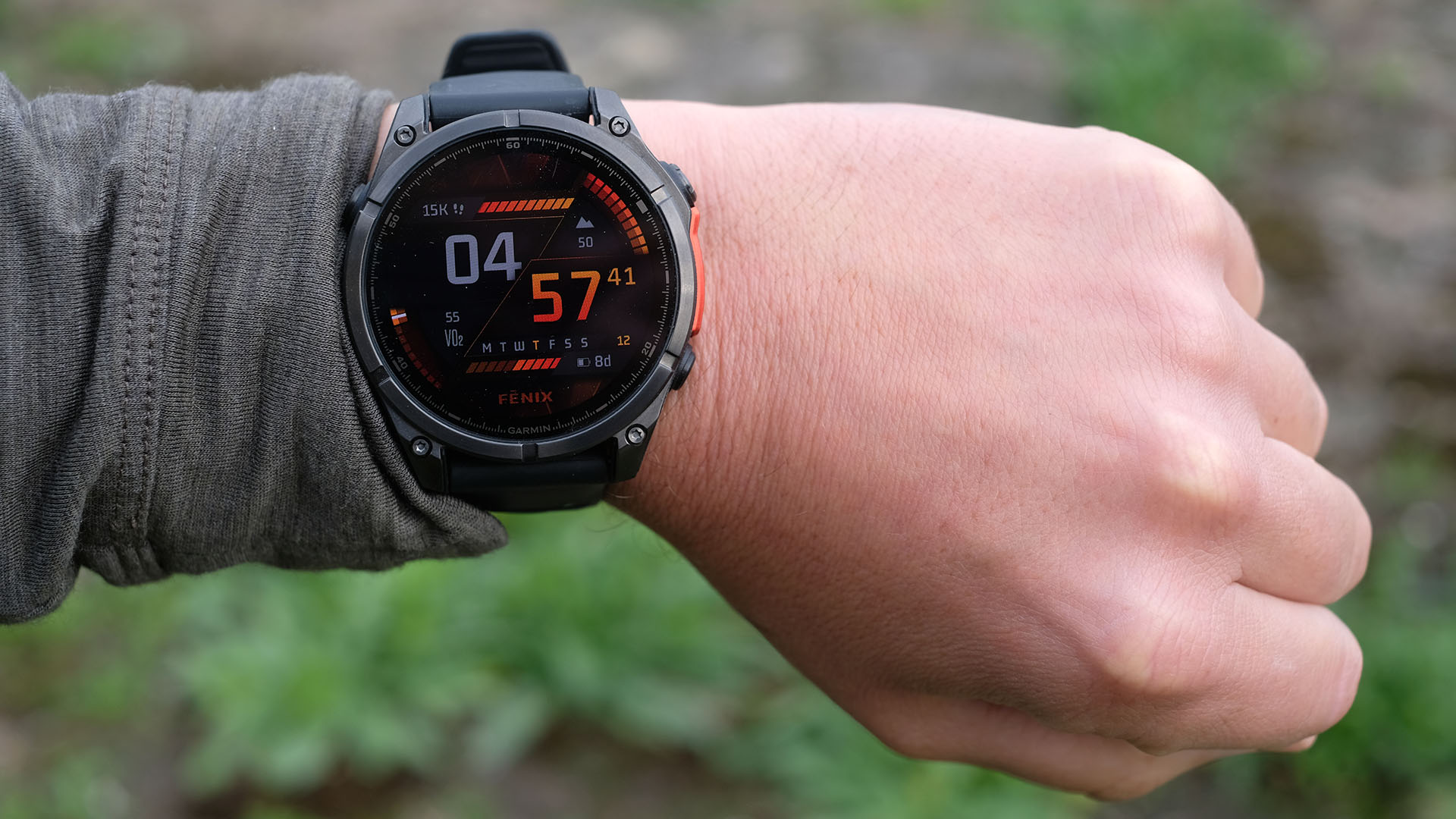
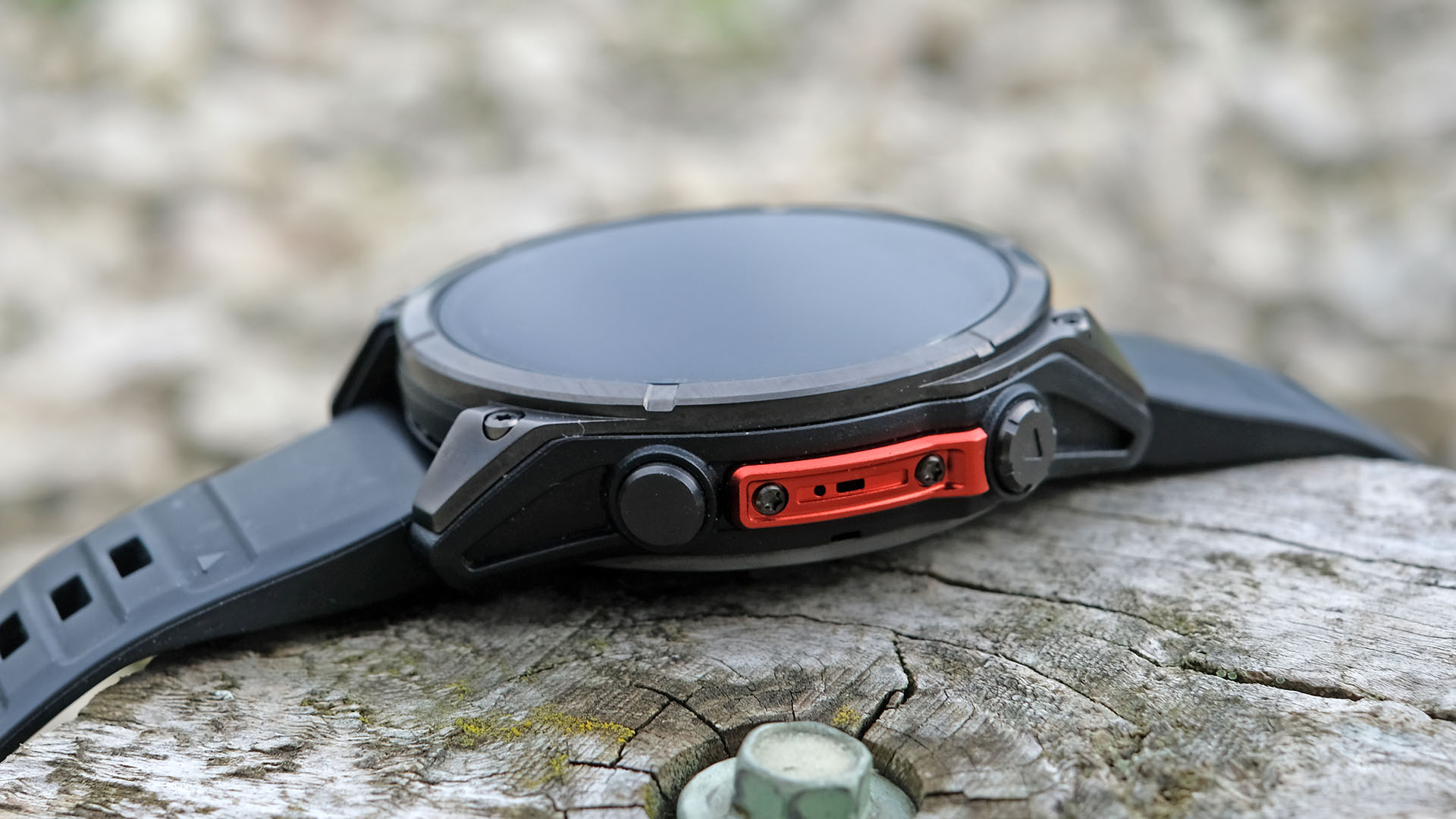
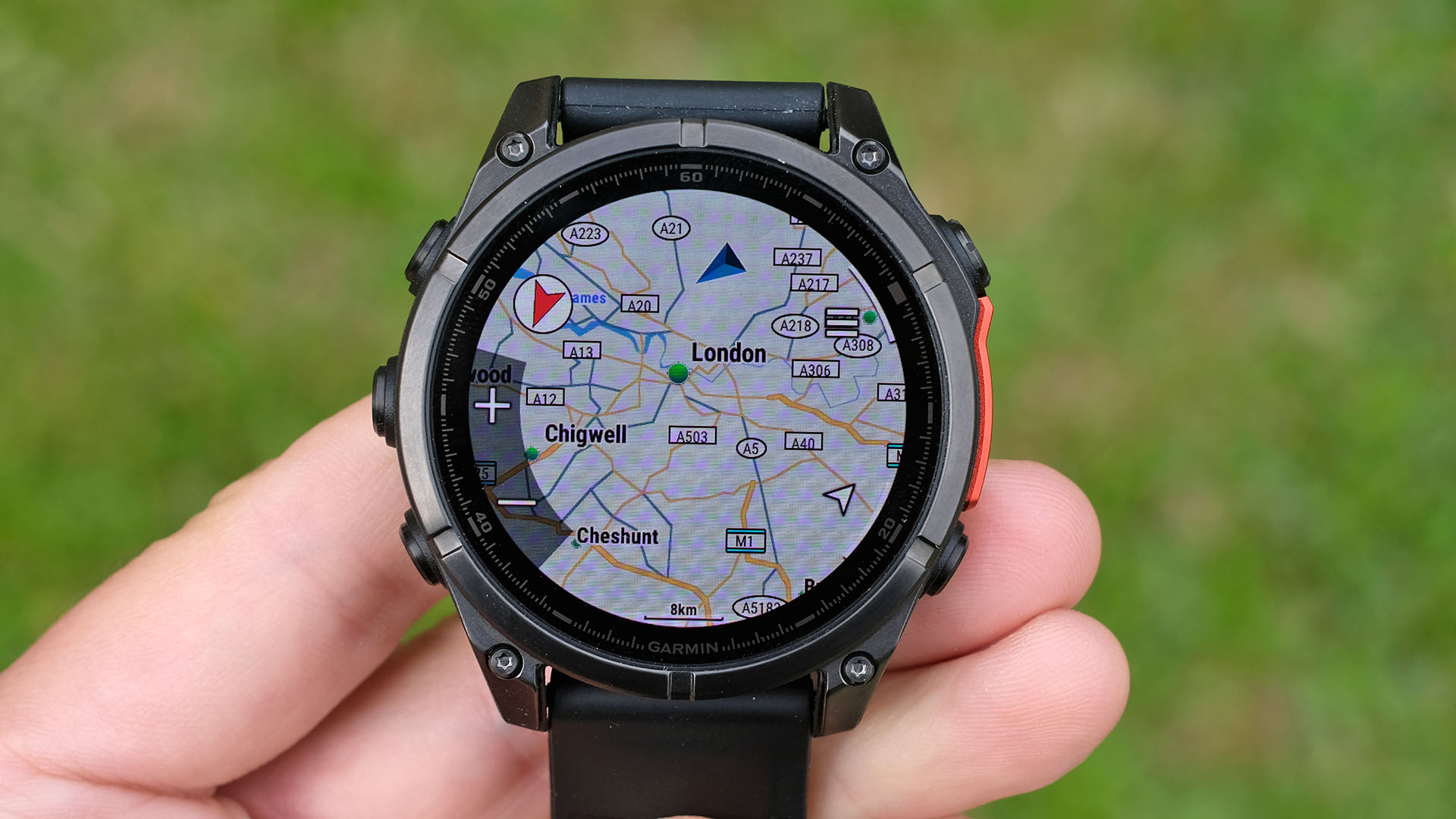
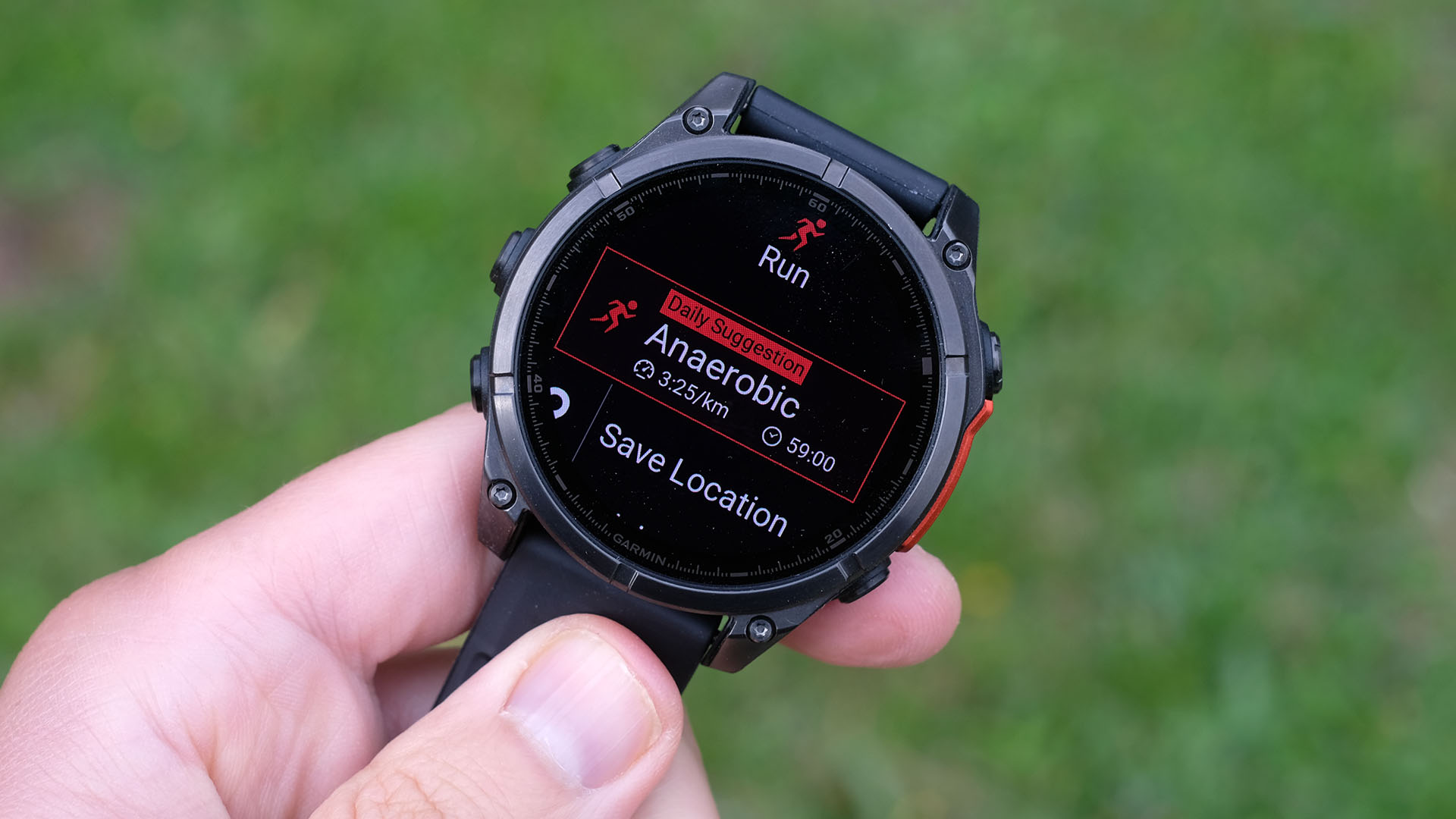
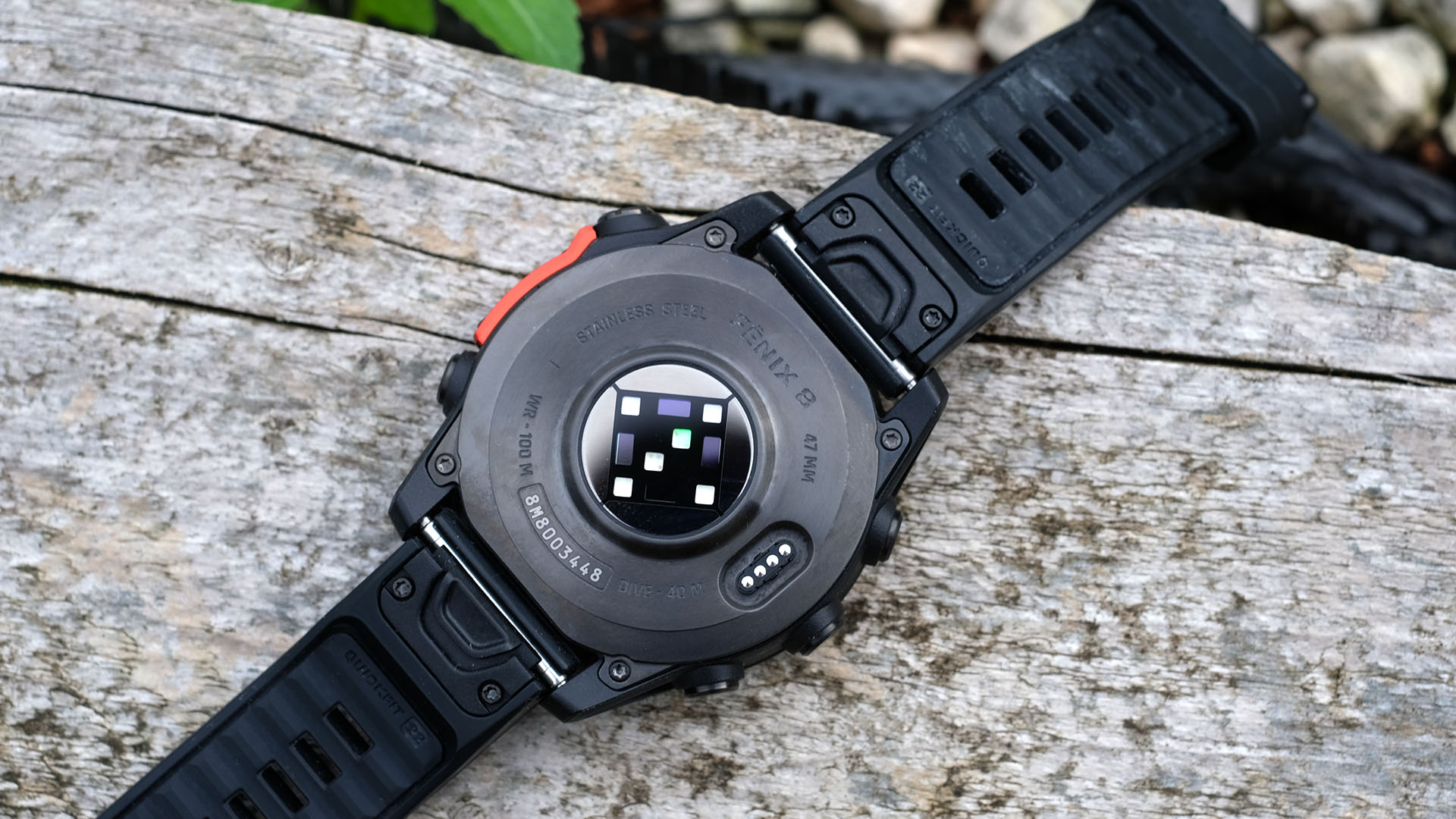
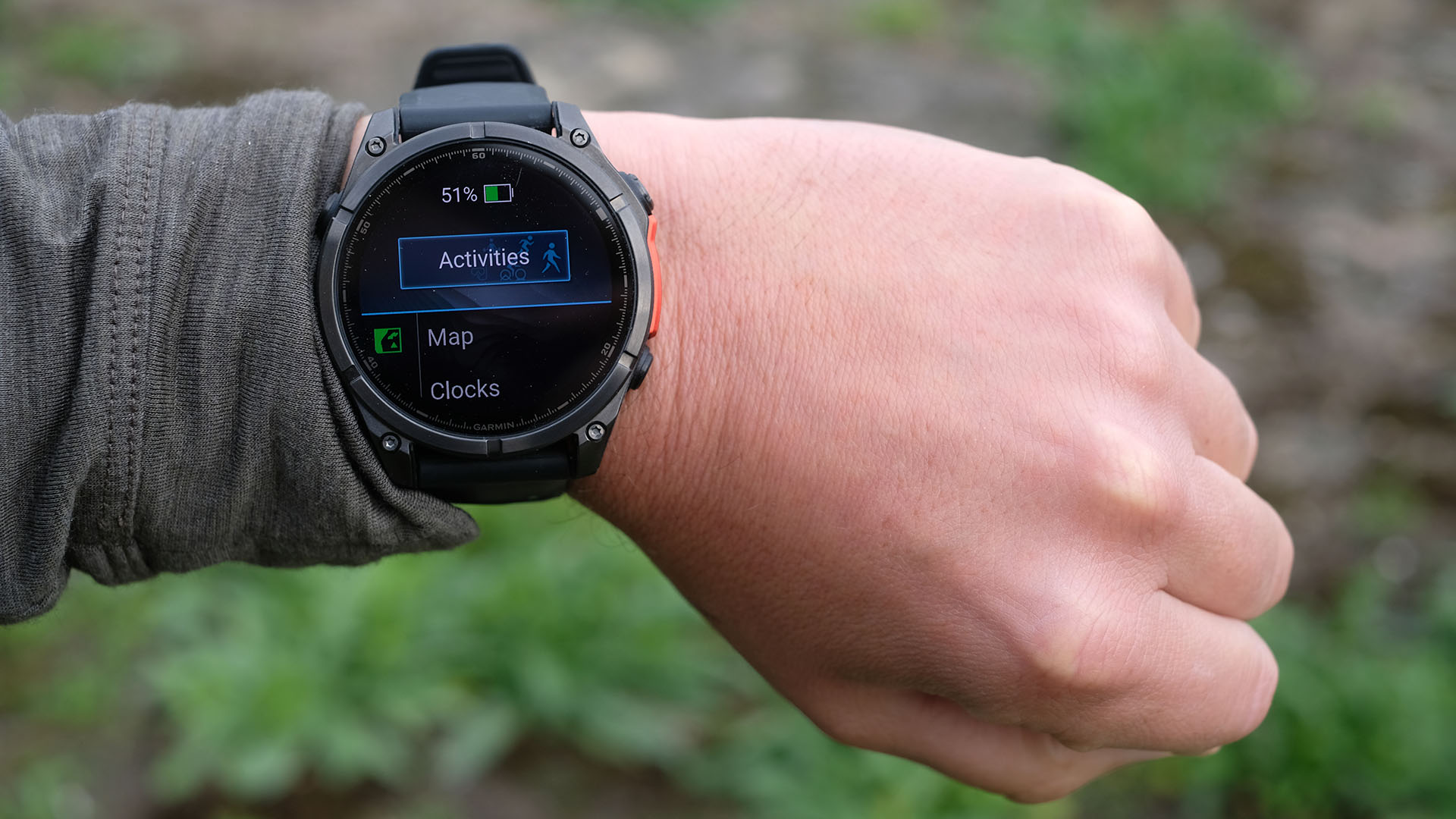
Specifications
Reasons to buy
Reasons to avoid
✅ You like water sports: It has 10ATM water resistance and can withstand dives up to 40 meters.
✅ You want a serious outdoor watch: It comes with on-watch maps, reliable GPS, good battery life and a sturdy design.
✅ You want in-depth health and fitness stats: The Fenix 8 is an excellent tool for athletes and veteran exercisers.
❌ You are on a budget: It costs between $1,000 and $1,200.
❌ You want something discreet: It is one of the biggest watches in this guide.
🔎 Garmin Fenix 8: Big, bold and beautiful, the Garmin Fenix 8 won our seal of approval with its excellent tracking performance, long battery life and stacks of features. We just wished it was cheaper. ★★★★½
If you want the encapsulation of what a Garmin watch is, the Garmin Fenix 8 will not disappoint you. It is sturdy, reliable and jam-packed with tracking features, and its tracking accuracy and battery life are truly top-class. Put simply, this watch was designed to perform no matter the circumstances, and it shows. True, it is hard to deny that the Garmin Fenix 8 is a steep investment (it costs between $1,000 and $1,2000, depending on the size of the model) and we could argue that it does not really stray that far from its older sibling (the excellent Garmin Fenix 7 Sapphire Solar that costs around $600), but its high-tech credentials are truly a class of their own.
There is plenty to like about this sleek wearable. Garmin Fenix 8 has excellent on-watch maps, plenty of internal storage, the latest generation of heart rate tech, and every tracking feature you can possibly think of. It also provides deeper connections to an outboard kit than, say, an Instinct 2. It can control a smart turbo trainer, for example.
For a beastly outdoor watch, it is also surprisingly light and comfortable to wear. Plus, the Garmin Fenix 8 is more waterproof than its older sibling, making it more functional for water sports fans — you can take it scuba diving, for example. Not to mention, it does an excellent job as a fitness tracker and adventure watch.
During our full Garmin Fenix 8 review, we were impressed with its crisp display, long battery life and the general accuracy of its tracking features, especially when it came to heart rate and GPS. We also liked how user-friendly it was. Our Garmin Fenix 8 was easy to use and control during workouts, its advanced features were useful and well presented, and we found it genuinely helpful for boosting our exercise performance. Our only gripe was that the GPS was quite slow at times.
The Garmin Fenix 8 is an excellent watch but it may be an overkill if you just want to track your gym sessions or short runs a couple of times a week. A great alternative is the Garmin Epix 2 offering similar features to the Garmin Fenix 8, only lacking in voice commands and dive capabilities in comparison. The Epix 2 also comes in at a fraction of the price of the Garmin Fenix 8.
- Read our full review of the Garmin Fenix 8
Second-best Garmin watch
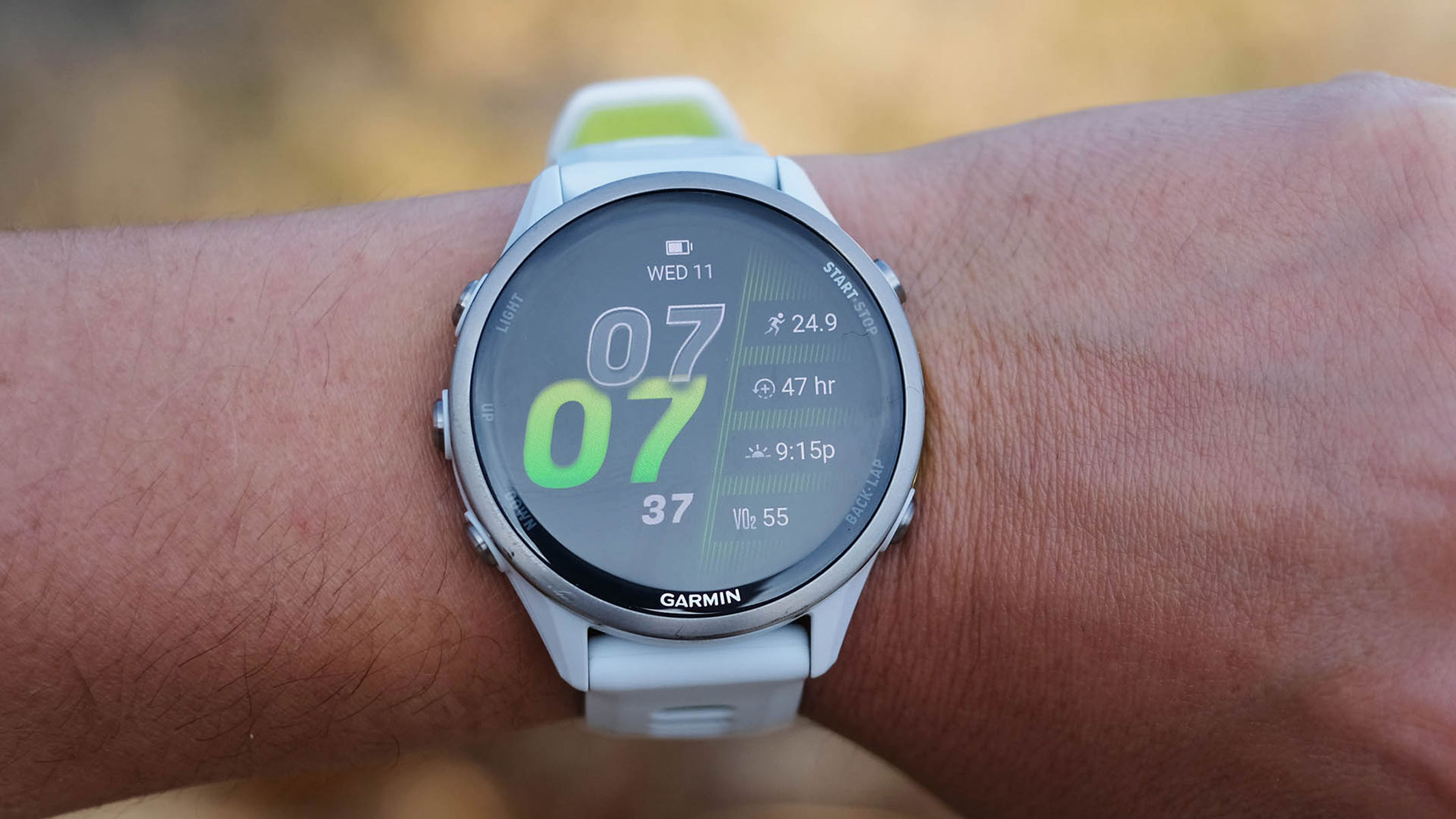
Second-best Garmin watch
The Garmin Forerunner 970 is an excellent alternative to the Fenix 8 — it is just as sleek, durable and jam-packed with high-end features (including an LED flashlight and voice assistant support), but it is slightly cheaper and more comfortable to wear. A world-class running and fitness watch, albeit still relatively pricey.
Pros
- Exceptional screen brightness
- Top-class workout tracking features
- Good stat accuracy
Cons
- Still relatively expensive
- No smaller size available
Best mid-range Garmin watch
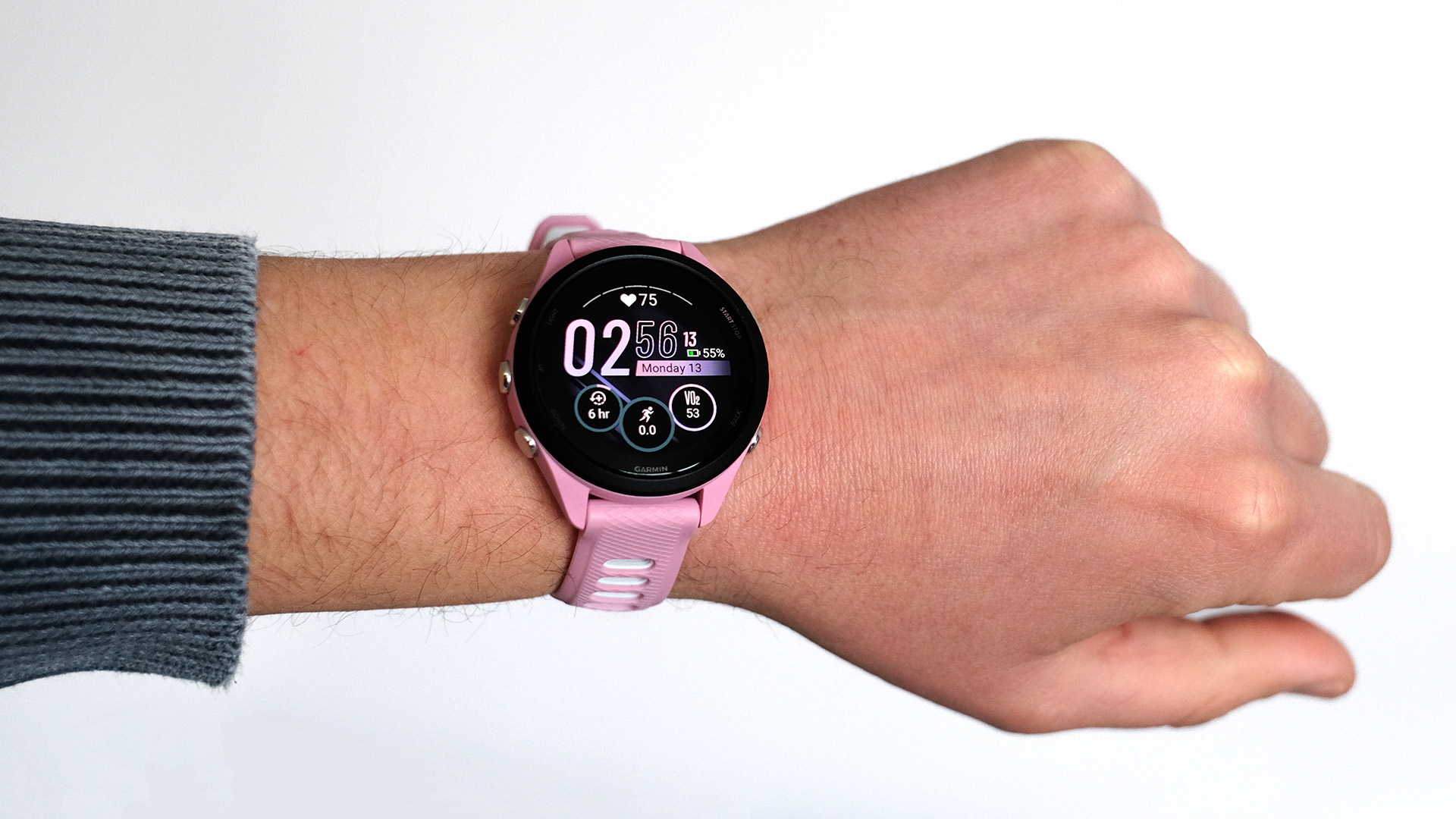
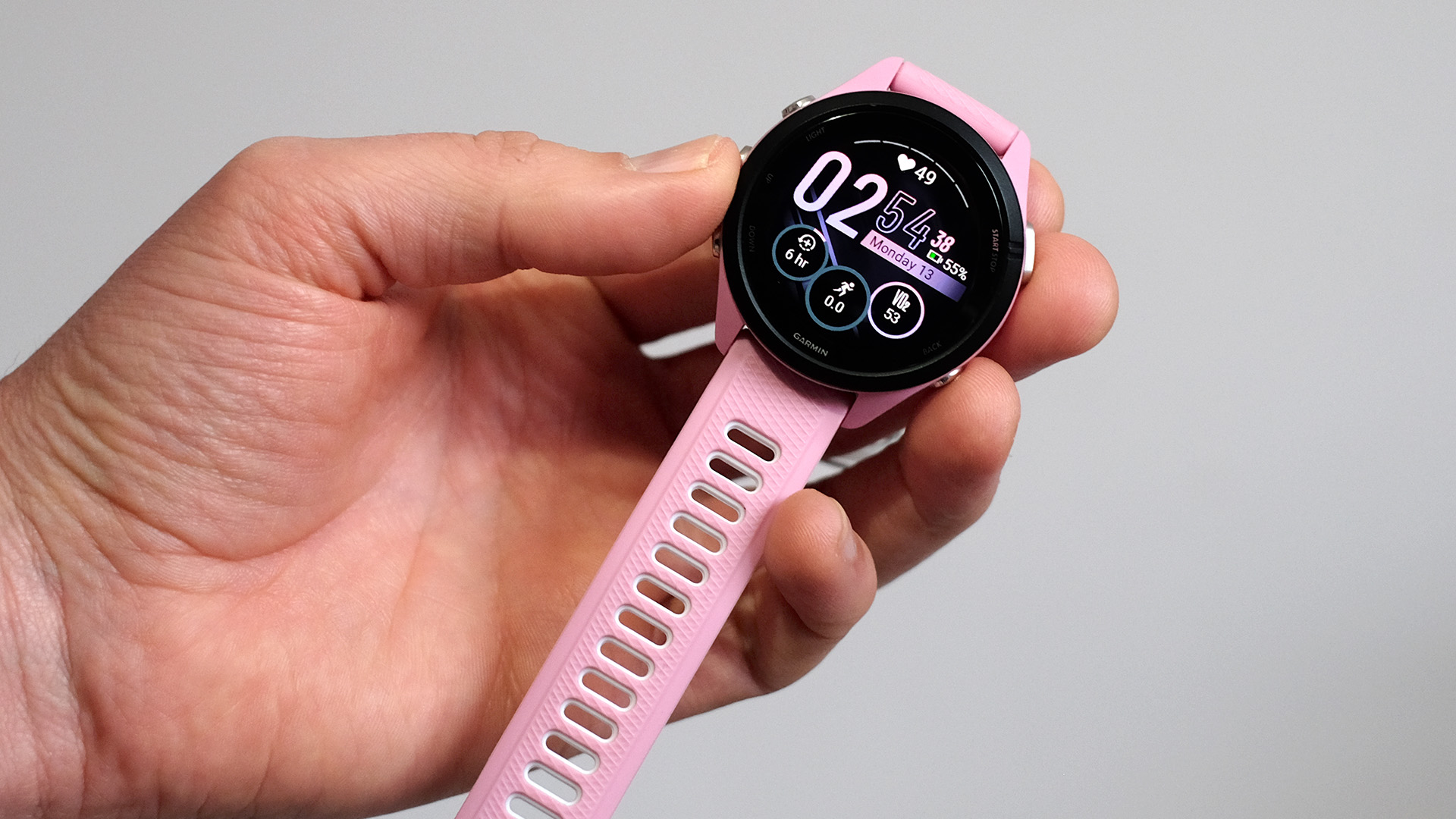
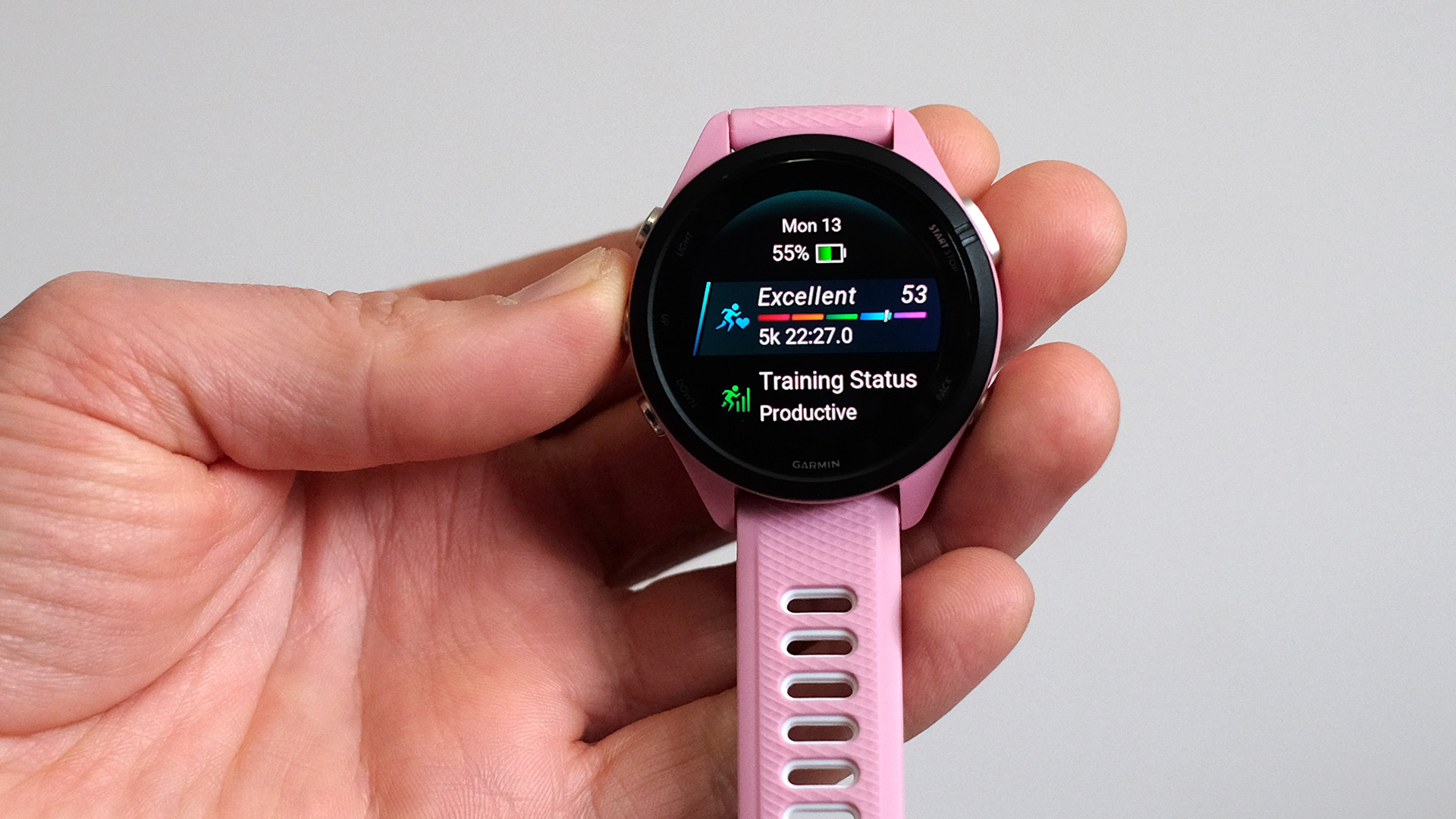
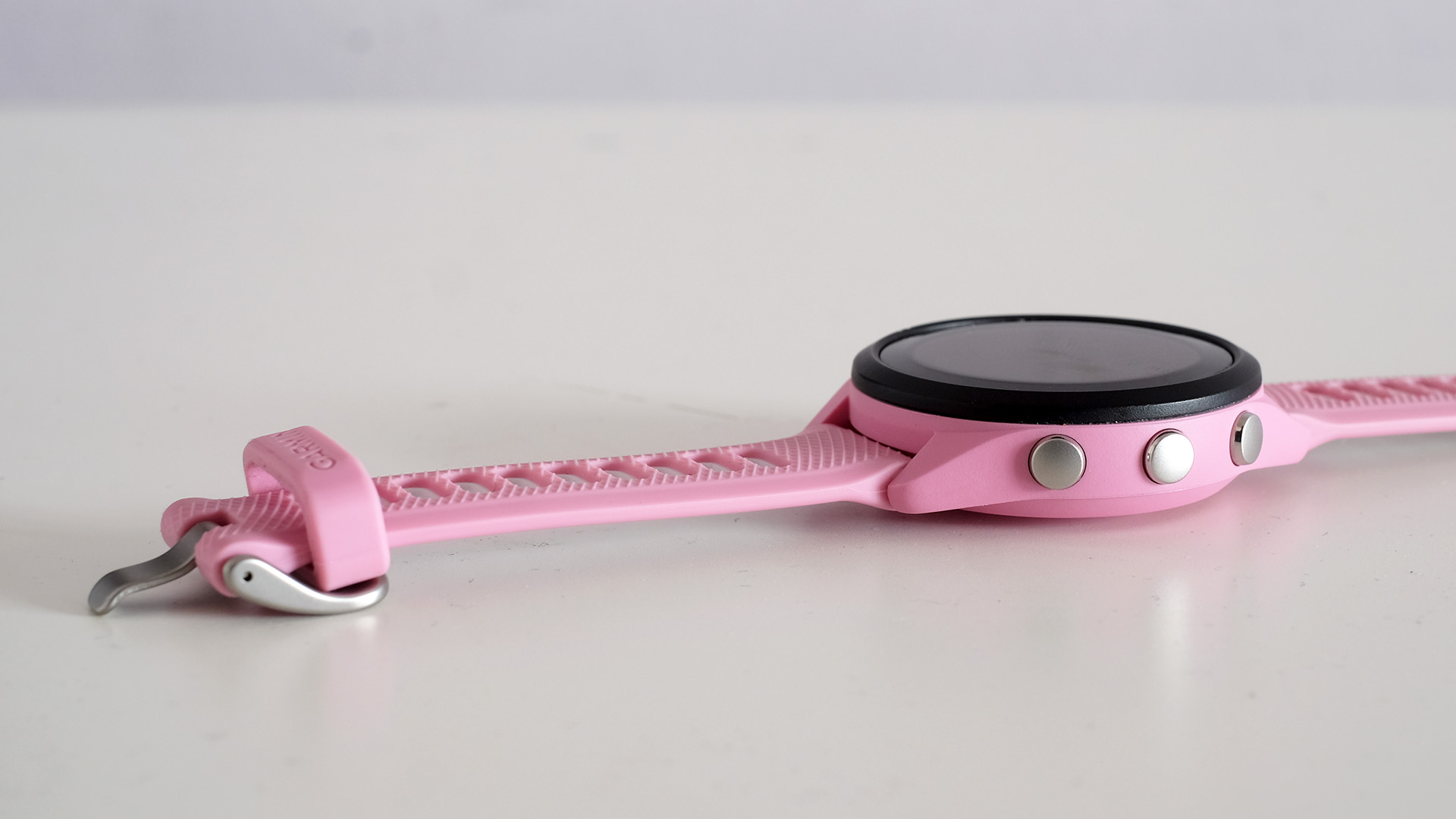
Specifications
Reasons to buy
Reasons to avoid
✅ You want in-depth workout tracking features: This watch tracks more than 100 activities and provides a detailed overview of exercise performance.
✅ You are looking for a running watch: It is light and comfortable to wear.
❌ You want exceptional durability: Its casing and bezel are made of plastic.
❌ You want downloadable maps: This watch will show you your 'breadcrumb' trail, but it will not store the data on the watch itself.
🔎 Garmin Forerunner 265: This beautifully designed fitness tracker offers the best of Garmin's features at a reasonable price — but it is not as durable as the pricier models. ★★★★½
The Forerunner 265 is an enthusiast fitness watch that has an OLED screen instead of the transflective style seen in almost all Garmins until recent years. An athlete-grade fitness watch with brilliant fitness tracking features, we rated it highly in our Garmin Forerunner 265 review, enjoying its versatility as a sports watch.
Wondering how it fits in the range? The Forerunner 265 is a Forerunner 255 with OLED. It is a Garmin Epix alternative that puts much less of a dent in your savings. Or it is a Garmin Venu 2 that trades in a little design gloss for some more advanced fitness features.
We reviewed the pink Forerunner 265S 42mm, the smaller alternative to the standard 46mm version. It is still larger than the Pixel Watch.
The watch is very similar to the Forerunner 255. Its casing and bezel are plastic — fiber-reinforced polymer as Garmin calls it — and the screen is toughened glass. It is an older type, though, Gorilla Glass 3. You lose the stainless steel bezel of the Venu 2 series, but this does help keep the weight low.
Weighing 40g, the Forerunner 265S is 6g lighter than the standard Forerunner 265. As a result it is a comfortable watch, although you can likely improve it further by switching out the strap. The supplied silicone strap does a great job during sports activities, but if you tighten it up for a more precise heart rate reading, it may leave a trail of indentations on your wrist. We found it somewhat hard not to over-tighten this watch, for some reason.
The screen is the star of the show here, though. It is a 1.1-inch 360 x 360 pixel OLED, or a 1.3-inch 416 x 416 pixel one in the Forerunner 265. While it does not fill out the front of the watch like the Apple Watch Series 8’s display, this little screen has everything we are looking for.
It is very sharp, super-colorful, and easily bright enough to work for outdoor exercise sessions on sunny days. This screen’s job is to make an argument for itself over the Forerunner 255’s transflective screen, and it is pretty persuasive, particularly when it is a touch display too. The Forerunner 255’s is not.
While we love the Forerunner 265, you may be looking for a similar watch that is more premium. If that's the case, the Garmin Forerunner 965 may be a better option. Offering an AMOLED display, more advanced training features and full map capabilities than the Forerunner 265, the 965 may appeal to those training for a specific event.
- Read our full Garmin Forerunner 265 review
Second-best mid-range Garmin watch
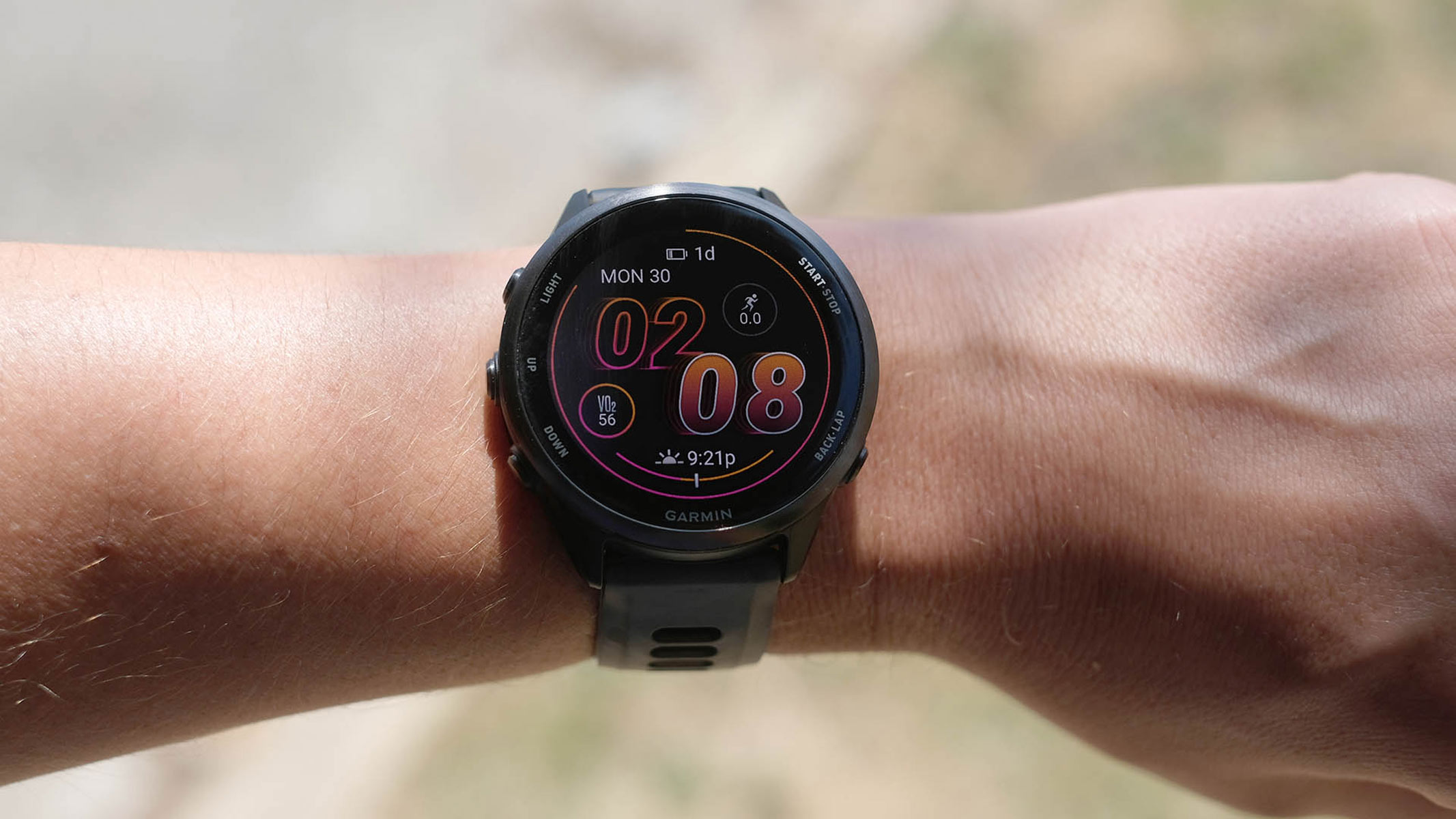
Second-best mid-range Garmin watch
If you do not mind spending approximately $100 more, consider the Garmin Forerunner 570 instead. It is just as sleek and feature-packed as the Forerunner 265, but it comes with a brighter display, a more durable bezel, a built-in microphone and speaker for calls and voice commands, making it an excellent option for outdoor athletes. The caveat? Shorter battery life.
Pros
- Very bright screen, perfect for outdoor athletes
- Accurate and feature-packed
- Light and comfortable to wear
Cons
- As little as 3-day battery life with frequent use
- Relatively expensive
- Can become intermittently unresponsive in high heat
Best Garmin watch for smartwatch features
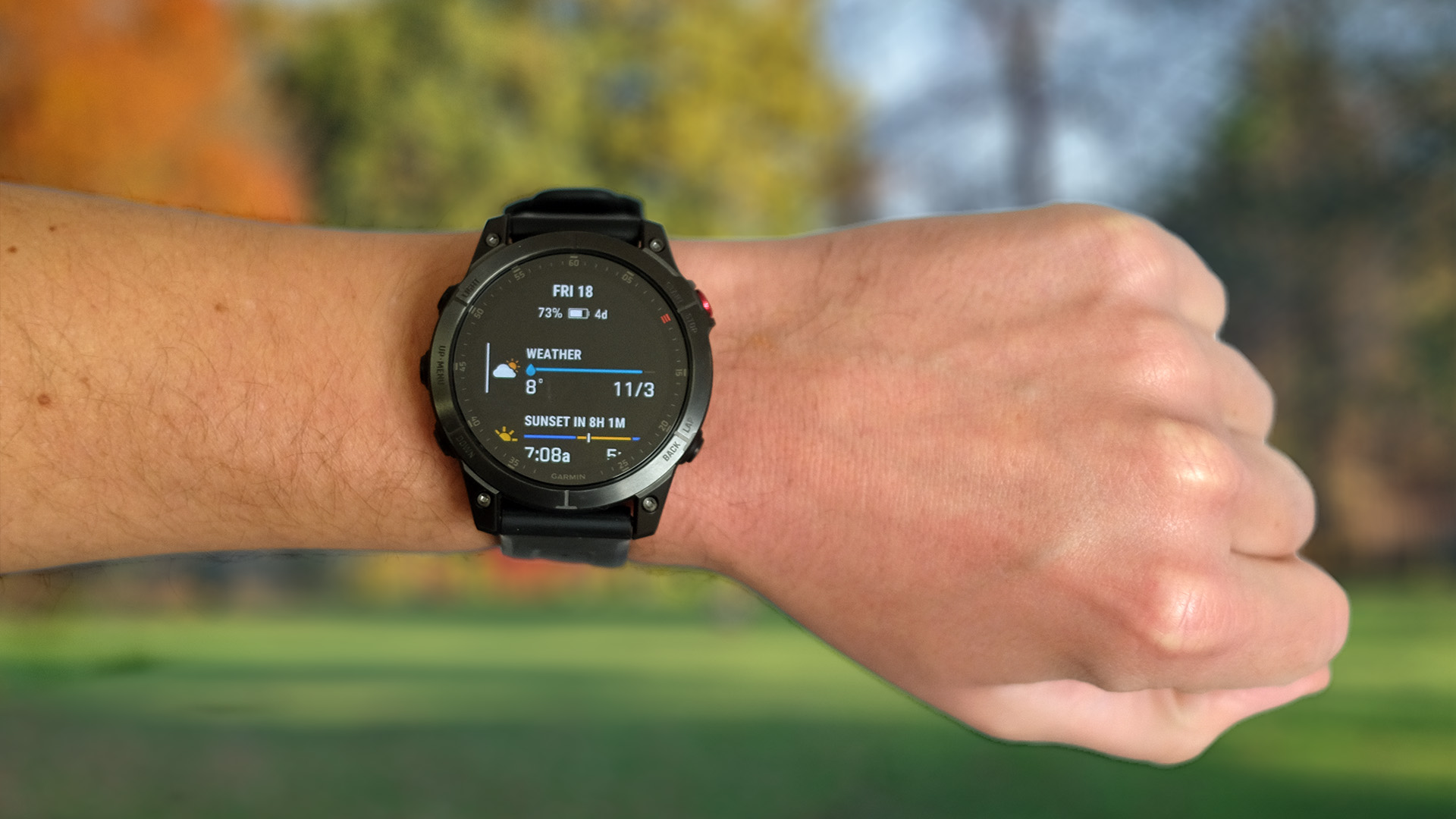
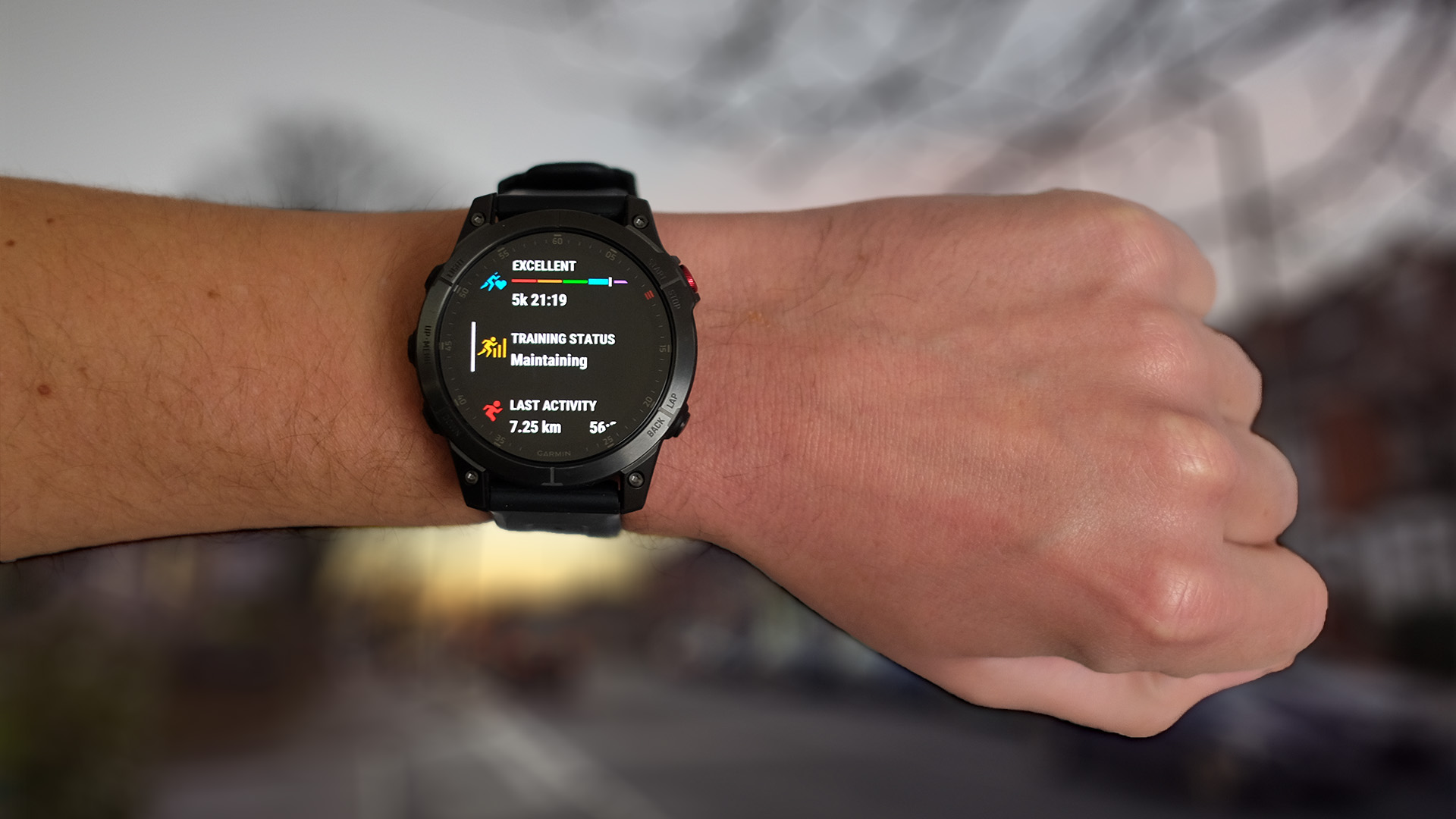
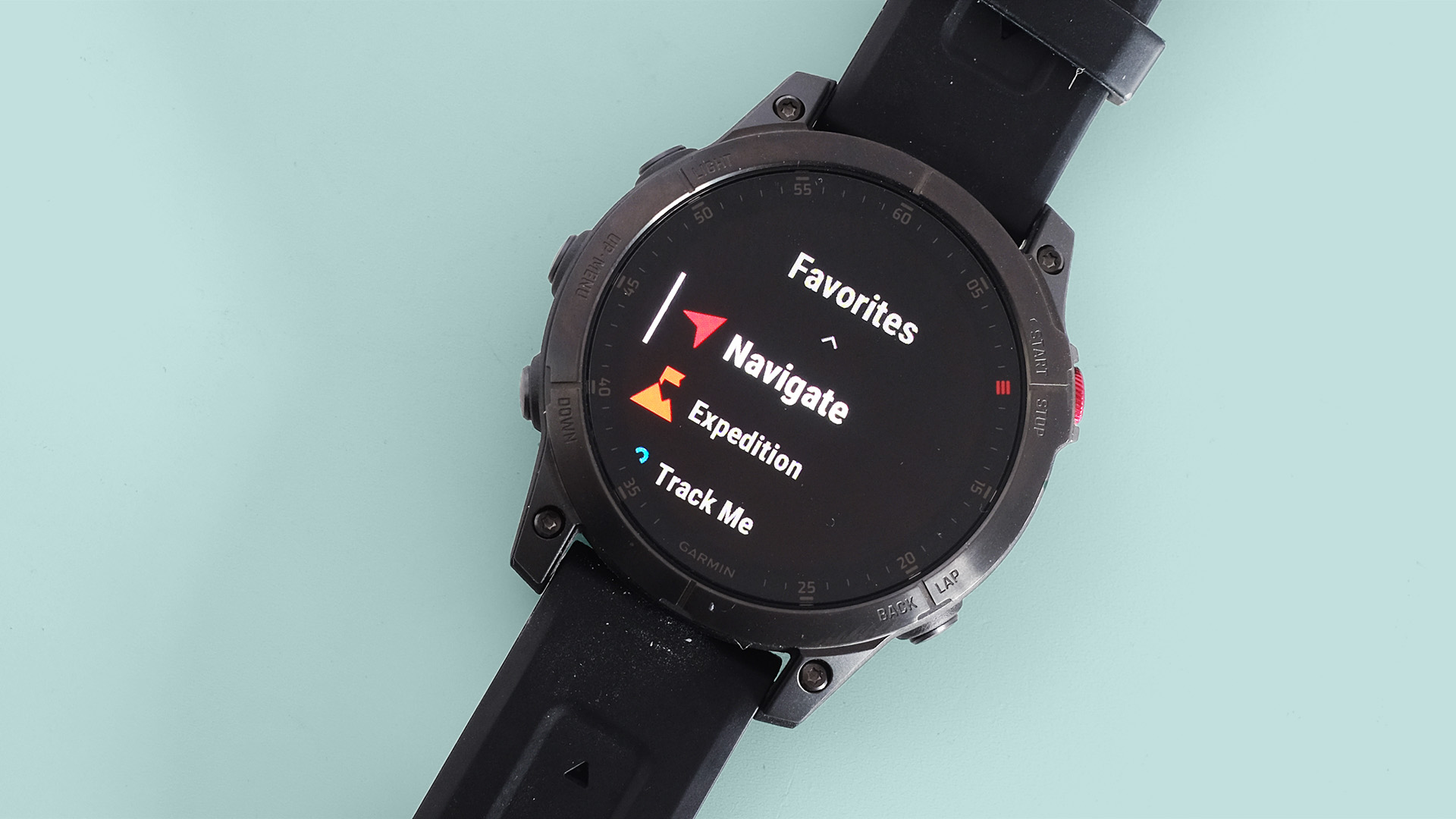
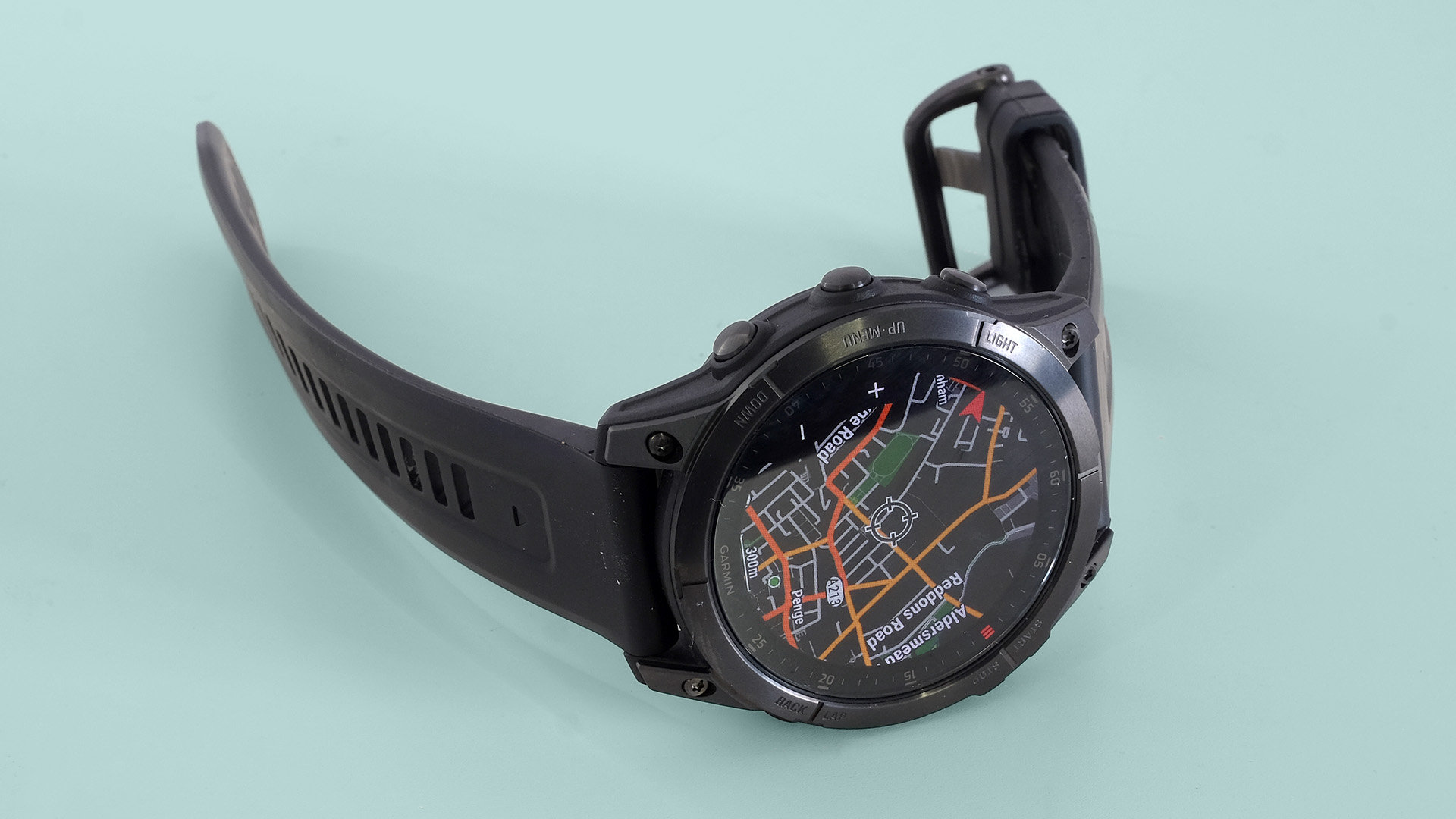
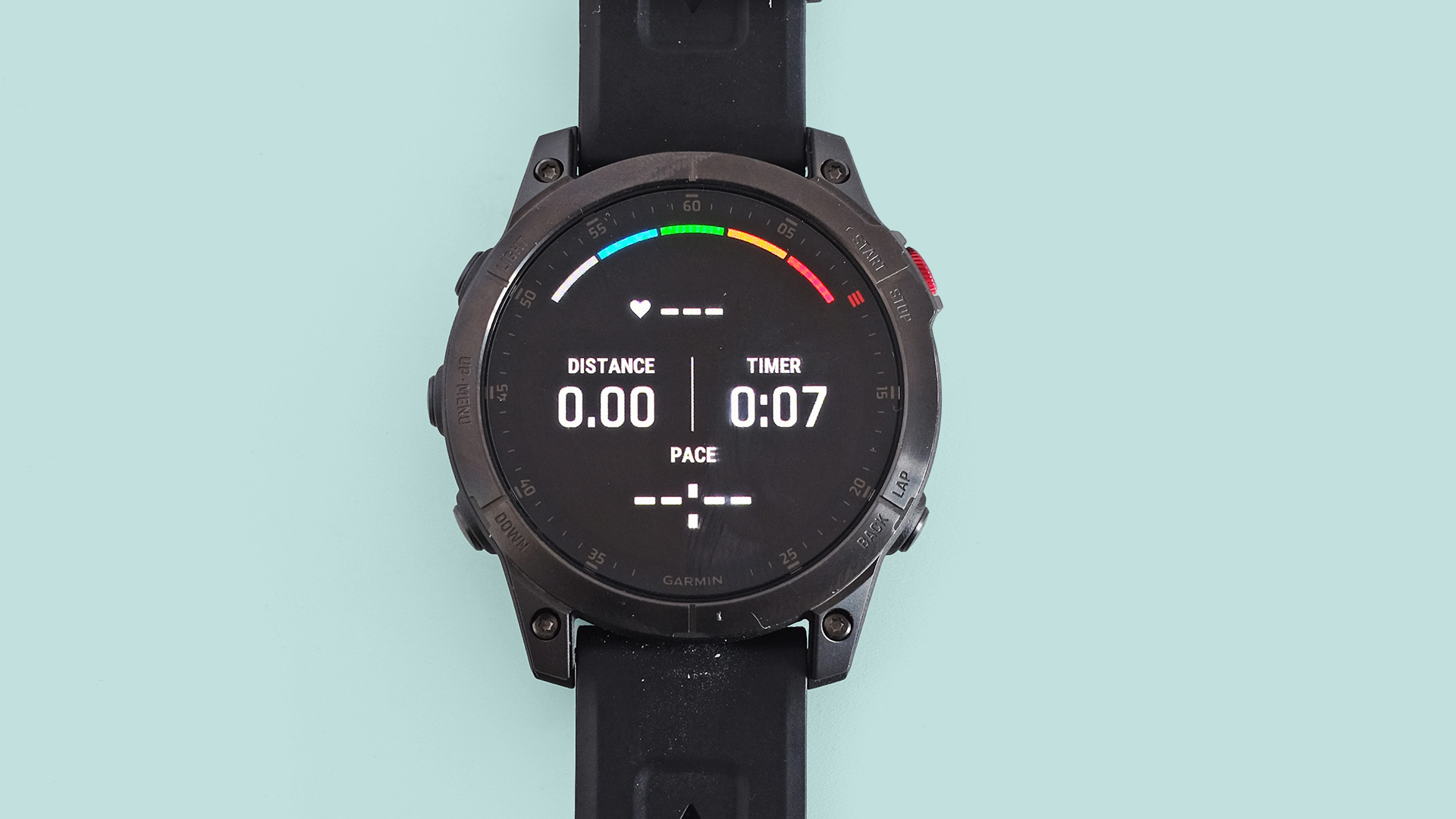
Specifications
Reasons to buy
Reasons to avoid
✅ You are looking for a swimming watch: It features 10ATM water resistance.
✅ You want a reliable outdoor watch: The Epix 2 offers excellent on-watch maps.
✅ You want a stylish smartwatch: It works just as well with casual wear as it does with gym gear.
❌ You are on a budget: It costs from $600 to $1100.
❌ You want exceptional battery life: This watch lasts around a week on a single charge.
🔎 Garmin Epix 2: This sleek running watch offers a crisp AMOLED display, plenty of features and the unbeatable Garmin's tracking accuracy — but it comes with a steep price tag. ★★★★
For more than five years, the original Garmin Epix was the watch to buy for hikers who needed on-watch maps. You can now get great maps in other watches, so the second iteration of this flagship model is best described as a Fenix 7 with a lovely OLED screen. During our Garmin Epix 2 review, we were impressed by its combination of in-depth tracking features and smartwatch functionality.
It is sharper, bolder and more colourful, and this helps how those maps look on-screen, too. However, after a few weeks of living with the Epix 2, we appreciated its OLED screen most when at home. It makes the Garmin Epix 2 a flashier-looking, more smartwatch-like watch than the Fenix 7. All the main features are the same, though. You get great depth and heart-rate accuracy and GPS that is fast to connect.
Where’s the catch? The Garmin Epix 2 is pricey, starting much higher than the base Fenix 7. Were they priced the same, the Epix would be sitting at the top of this list.
One final thing: an OLED screen means the Epix 2 does not last as long as the Fenix 7 in its always-on mode, where the screen stays lit. It lasts around six days between charges, not the two weeks and change you will see from the Fenix. Some will find this off-putting, but we review full smartwatches that last a day or so regularly. In that context just under a week of use does not seem remotely off-putting.
If you're looking for a more premium smartwatch with similar features, the Garmin Forerunner 965 is a good contender, offering comparable training features and a larger display. It is also slightly lighter than the Garmin Epix 2 making it ideal for those who go on long hikes or runs.
- Read our full review of the Garmin Epix 2
Best Garmin watch for daily use
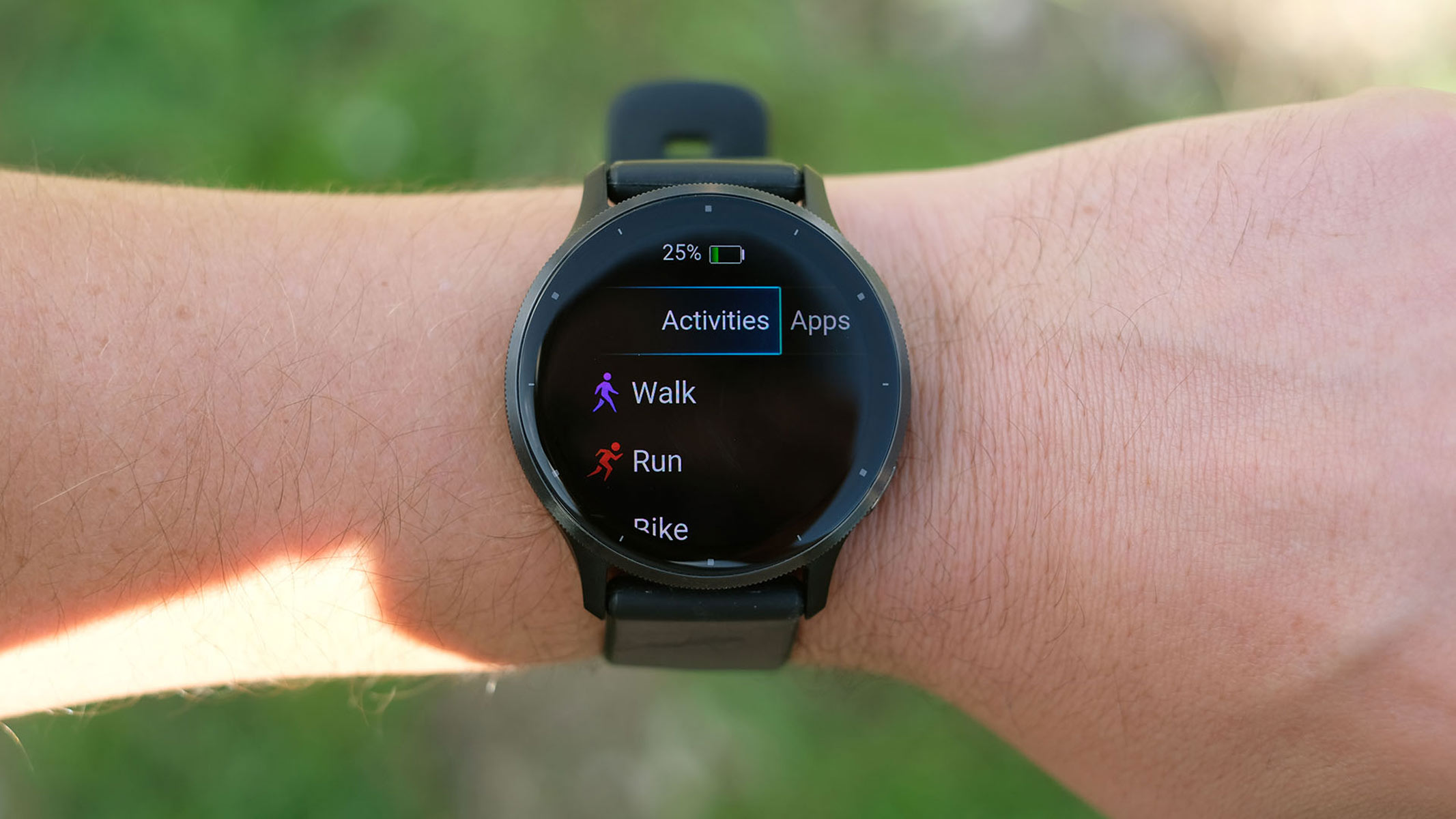
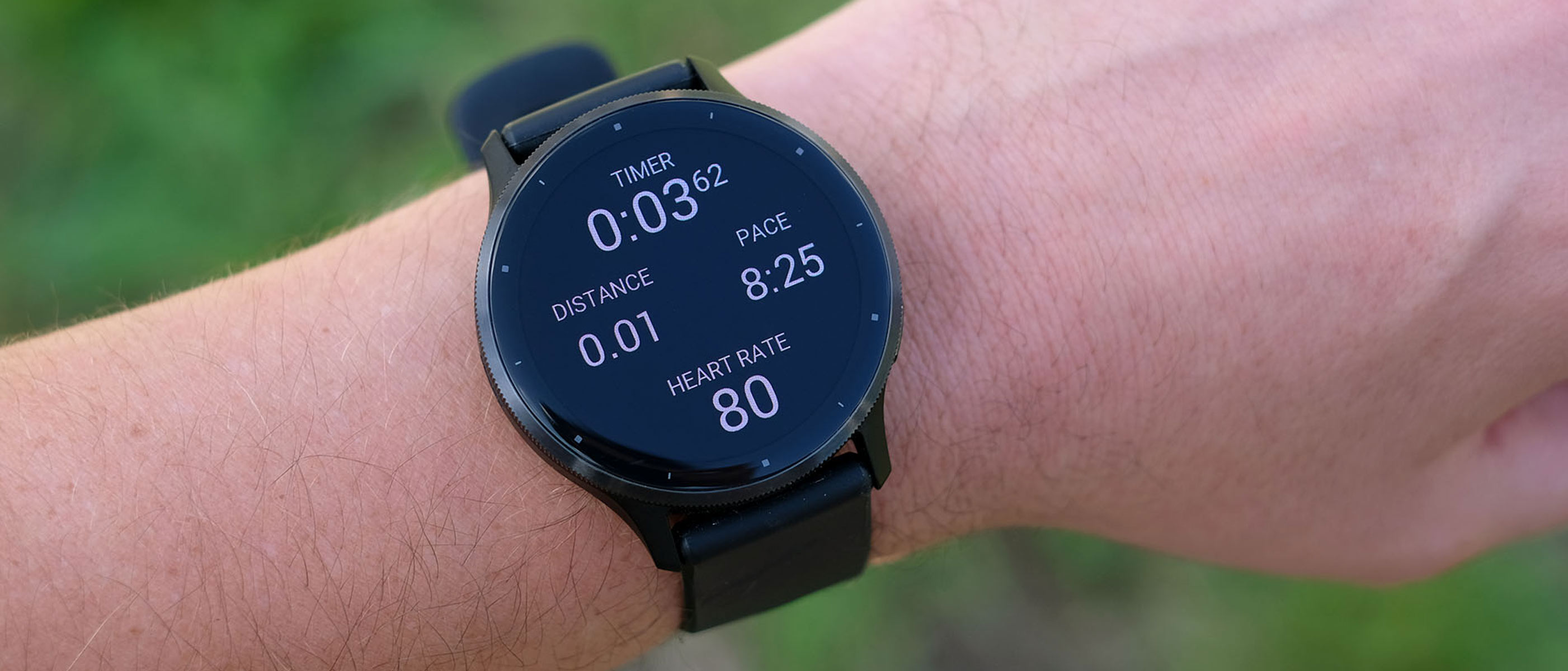
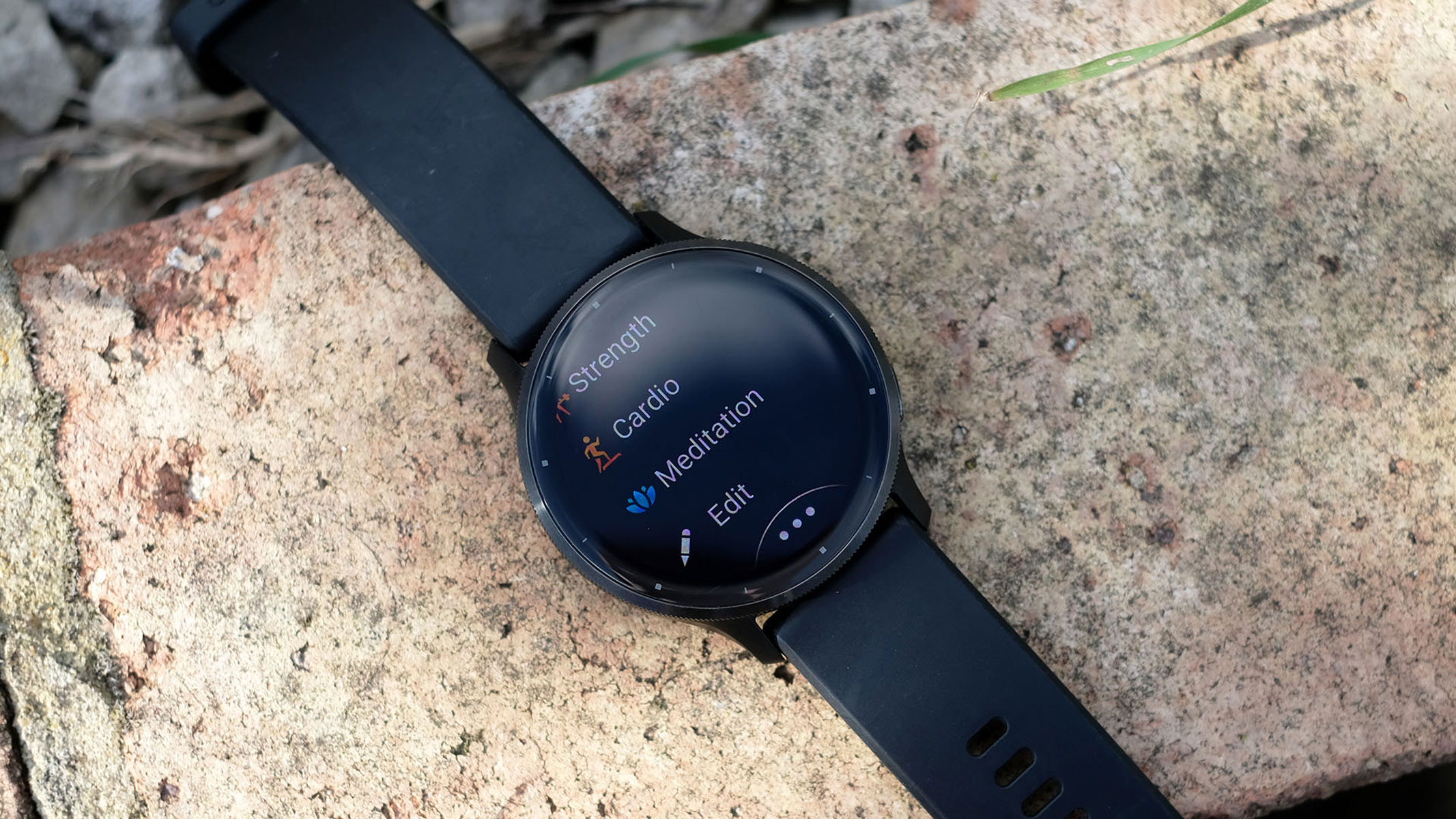
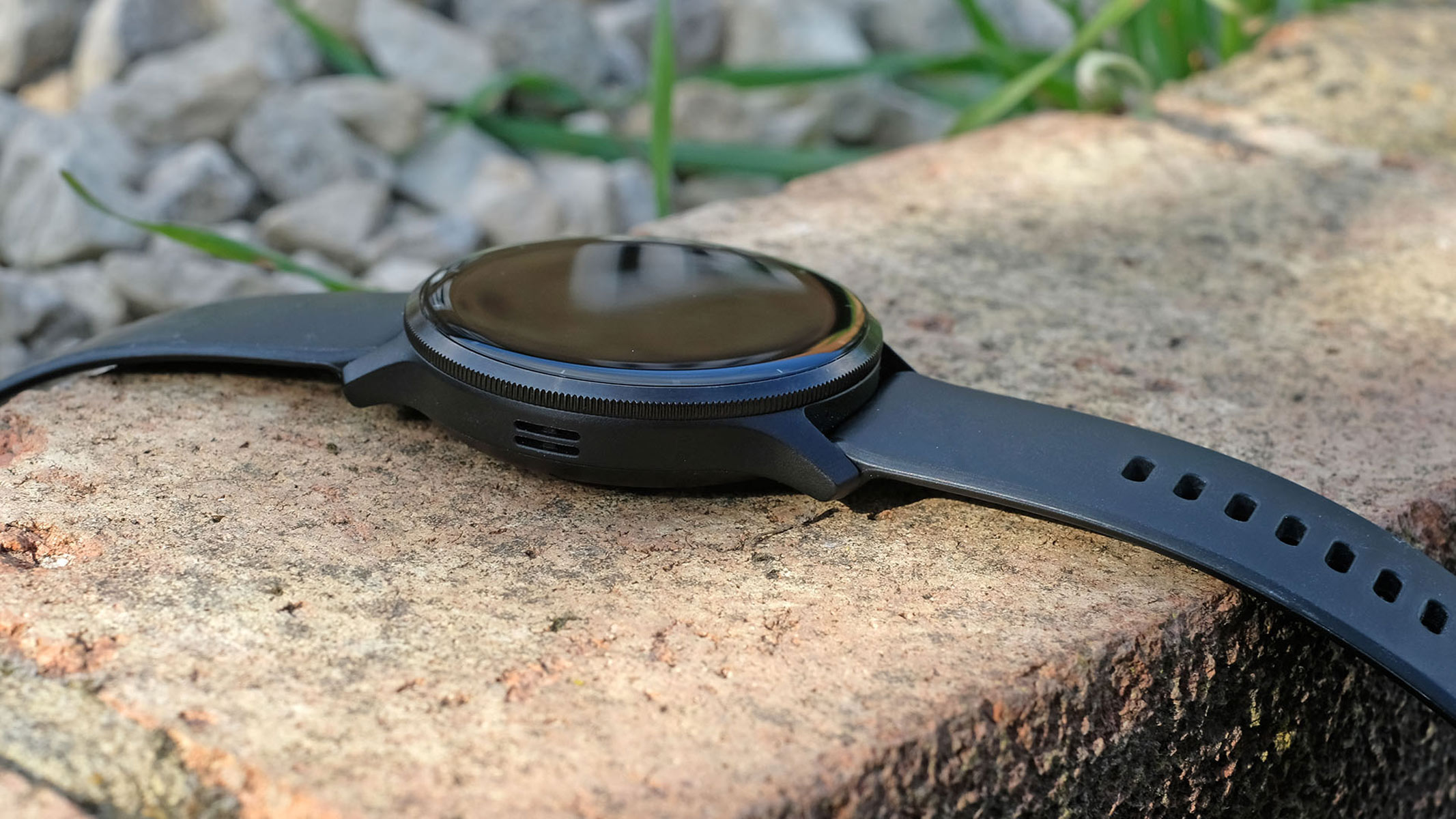
Specifications
Reasons to buy
Reasons to avoid
✅ You want a stylish wearable: This Garmin is a bit sleeker design-wise than the normal outdoorsy style of other Garmin watches.
✅ You want value for money: This watch boasts the same interface as other more expensive Garmins so you're not missing out.
❌ You want advanced exercise features: You'd be better off with the Forerunner or Fenix series if you're looking for this.
❌ You use GPS a lot: This watch's battery gets drained with heavy GPS use, meaning it will need charging around every five days.
🔎 Garmin Venu 3: A stylish and sleek smartwatch design that's lightweight, comfortable and offers great accuracy — perfect for daily use ★★★★
As with the Venu Plus 2, this wearable is slimmer, lightweight and more smartwatch-like than other Garmin watches on the market. With a comfortable silicone strap, this watch is comfortable to wear, day and night.
The OLED screen makes reading texts easy and gives a vibrant display. Plus, it times out quickly like other smartwatches, meaning it can easily be worn all day, every day, without it looking like you're constantly tracking your fitness.
While boasting the same interface as more expensive Garmin models, there are some missing features such as the advanced tracking features seen on the Forerunner and Fenix series. This is a shame if you need them but if you don't, this watch performs well and offers a lot.
During our Garmin Venu 3 review, we found this watch lacked the Performance Condition and suggested workouts offered on other Garmins. Alongside this, we also discovered you can't load routes onto the watch for navigation during workouts. If you aren't interested in these features, you won't miss them but if you rely on them, this watch won't work for you.
Although we liked this watch and its smartwatch features, sometimes interacting with the digital assistant felt cumbersome and the touchscreen did see us accidentally ending exercise sessions prematurely. However, we enjoyed the new Sleep Coach feature that helps you to improve your sleep patterns.
While it doesn't have multi-band GPS, we had no trouble with it tracking our locations and it performed excellently on this front. This was also the case with the heart rate monitoring. As mentioned before, heavy use of GPS does shorten the battery life considerably from two weeks to five days, from our testing. Overall though, we found the accuracy of the health stats on this watch to be excellent and would recommend it for most people wanting a wearable they can wear all day.
Depending on what you want your daily use smartwatch to track, an alternative to the Garmin Venu 3 is the Vivosmart 5. The Vivosmart 5 offers good tracking ability while also offering a slimline design, making it discreet and unobtrusive for everyday wear. It also comes in around $100 cheaper than the Venu 2, if you're looking to save some dollars.
- Read our review of the Garmin Venu 3 model
Best Garmin for triathletes
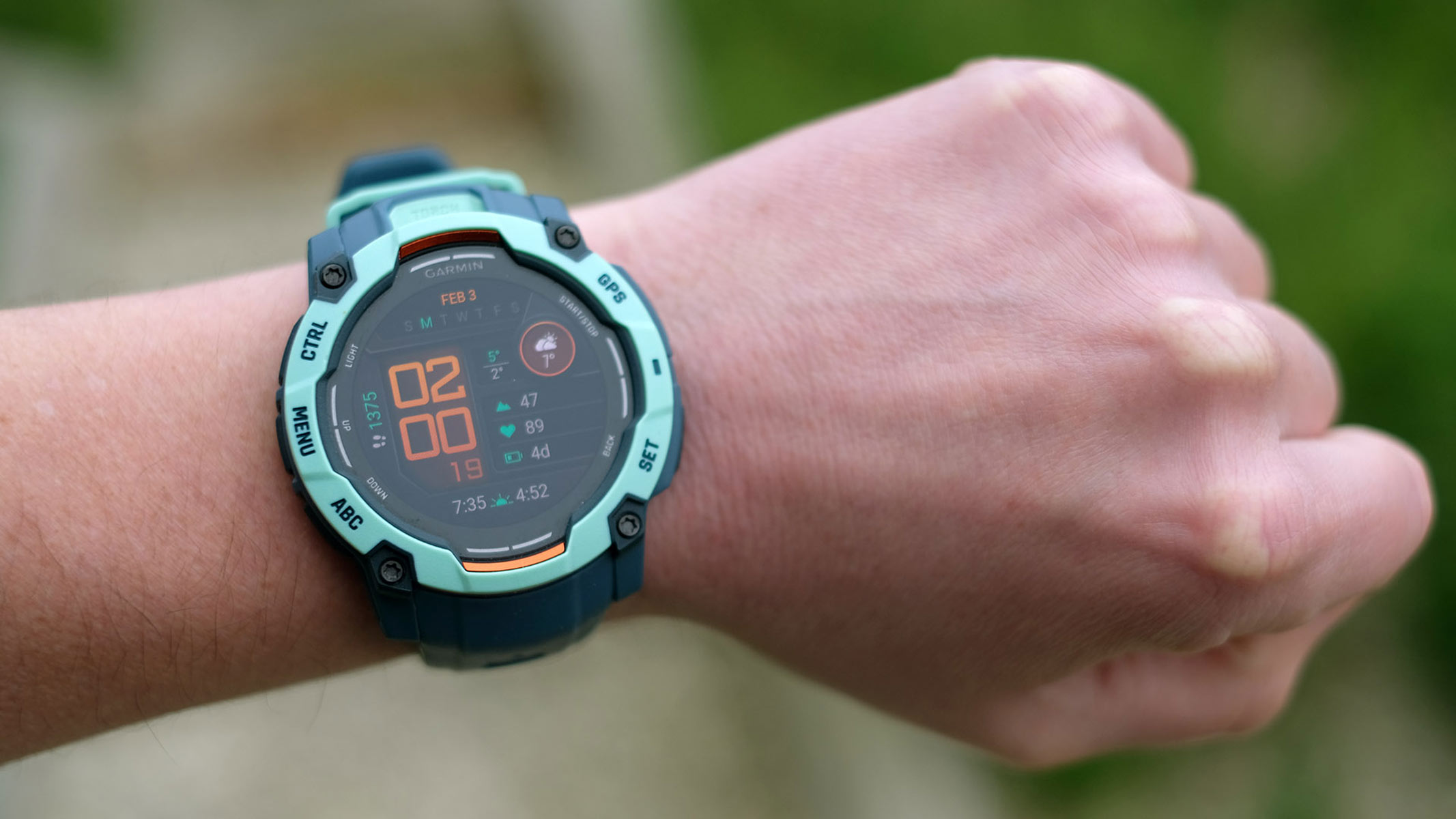
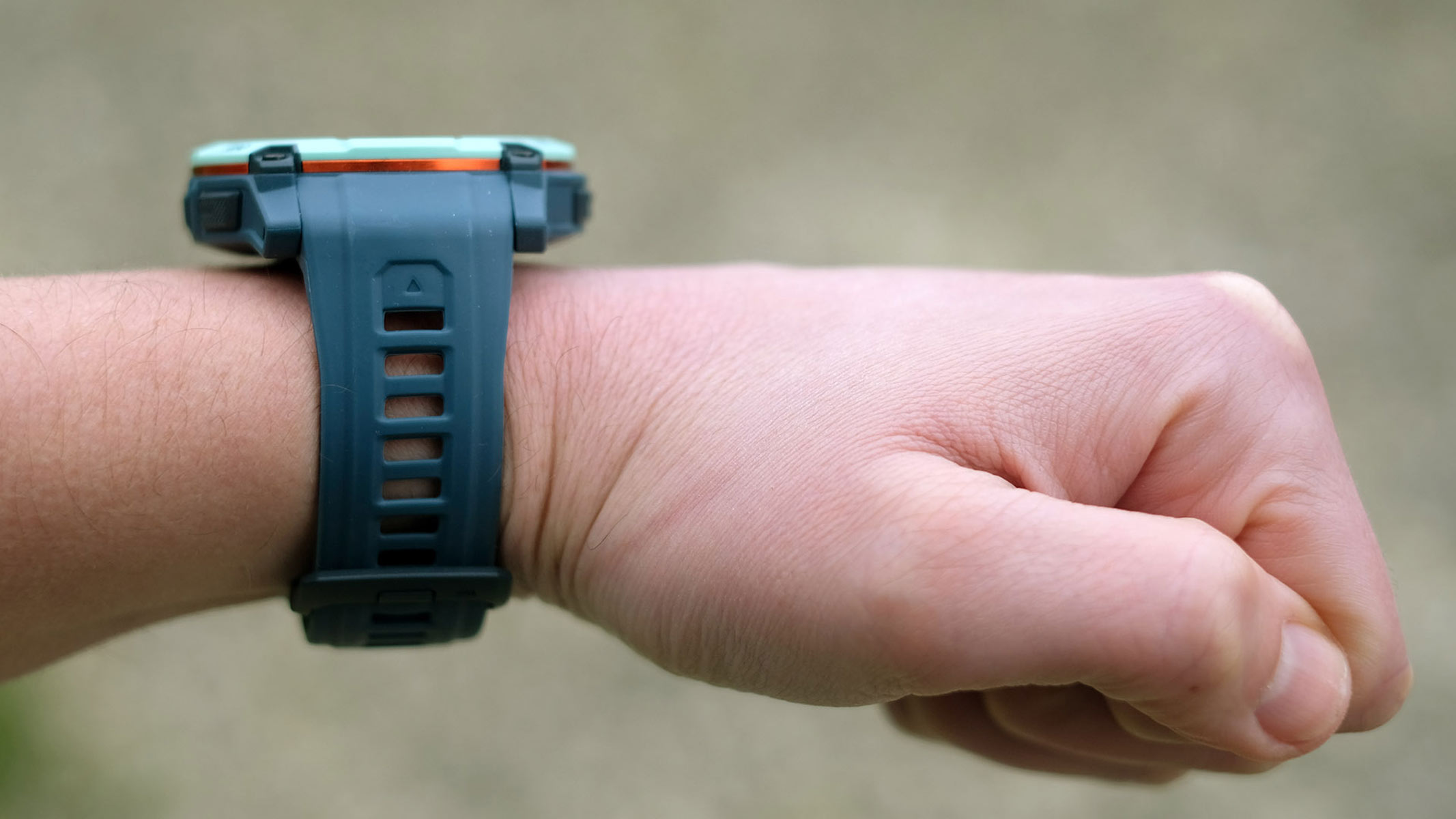
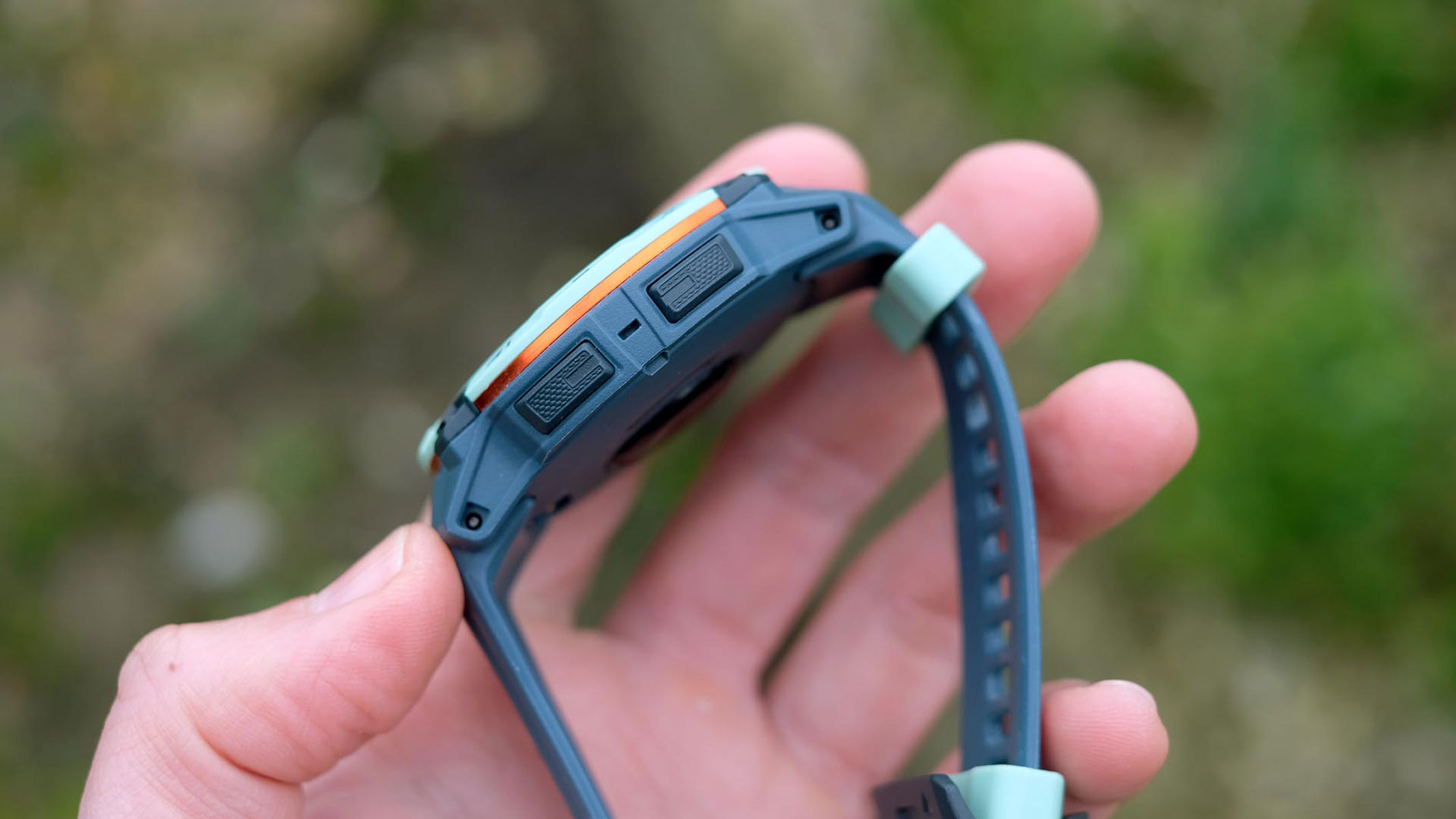
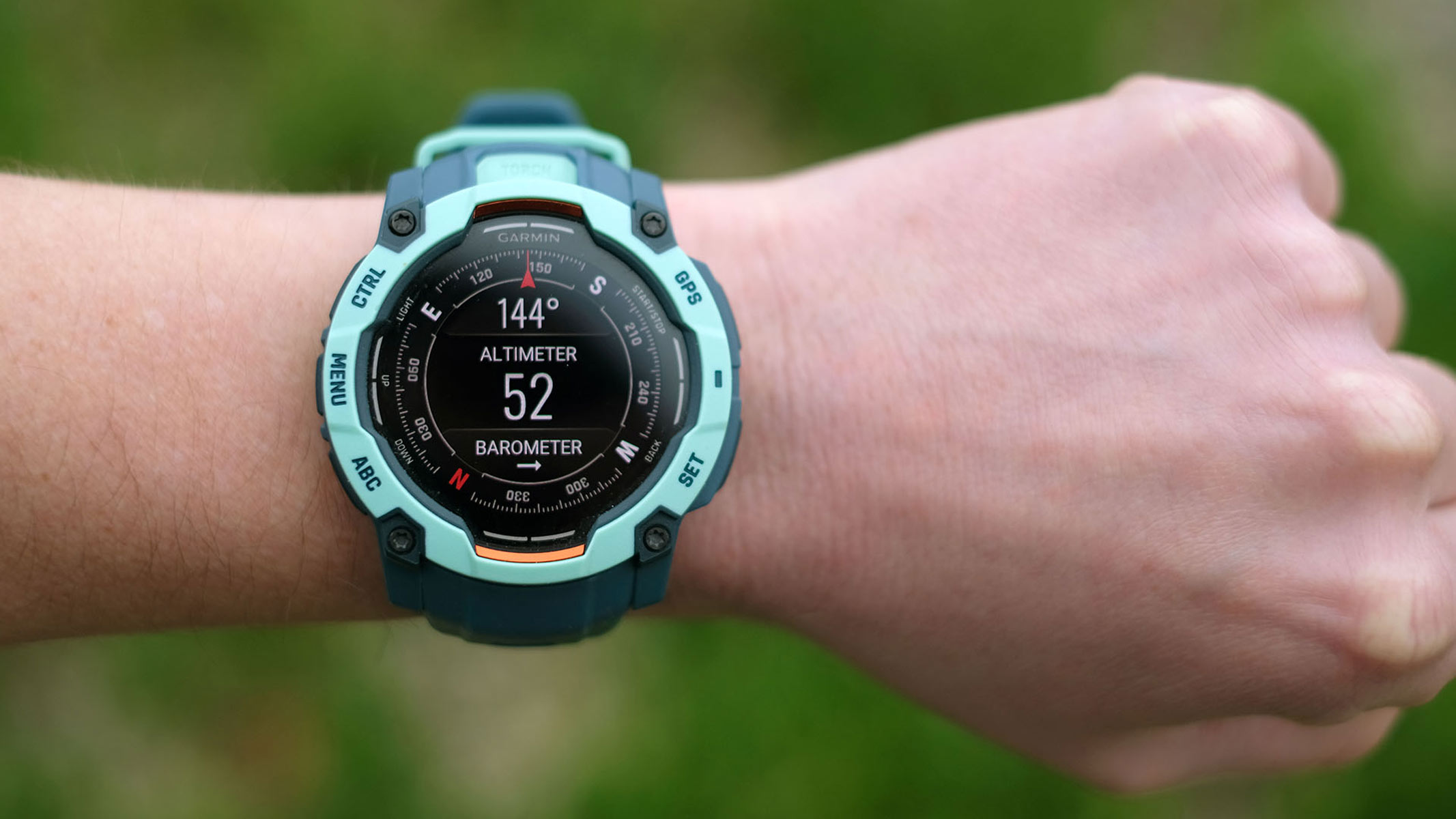
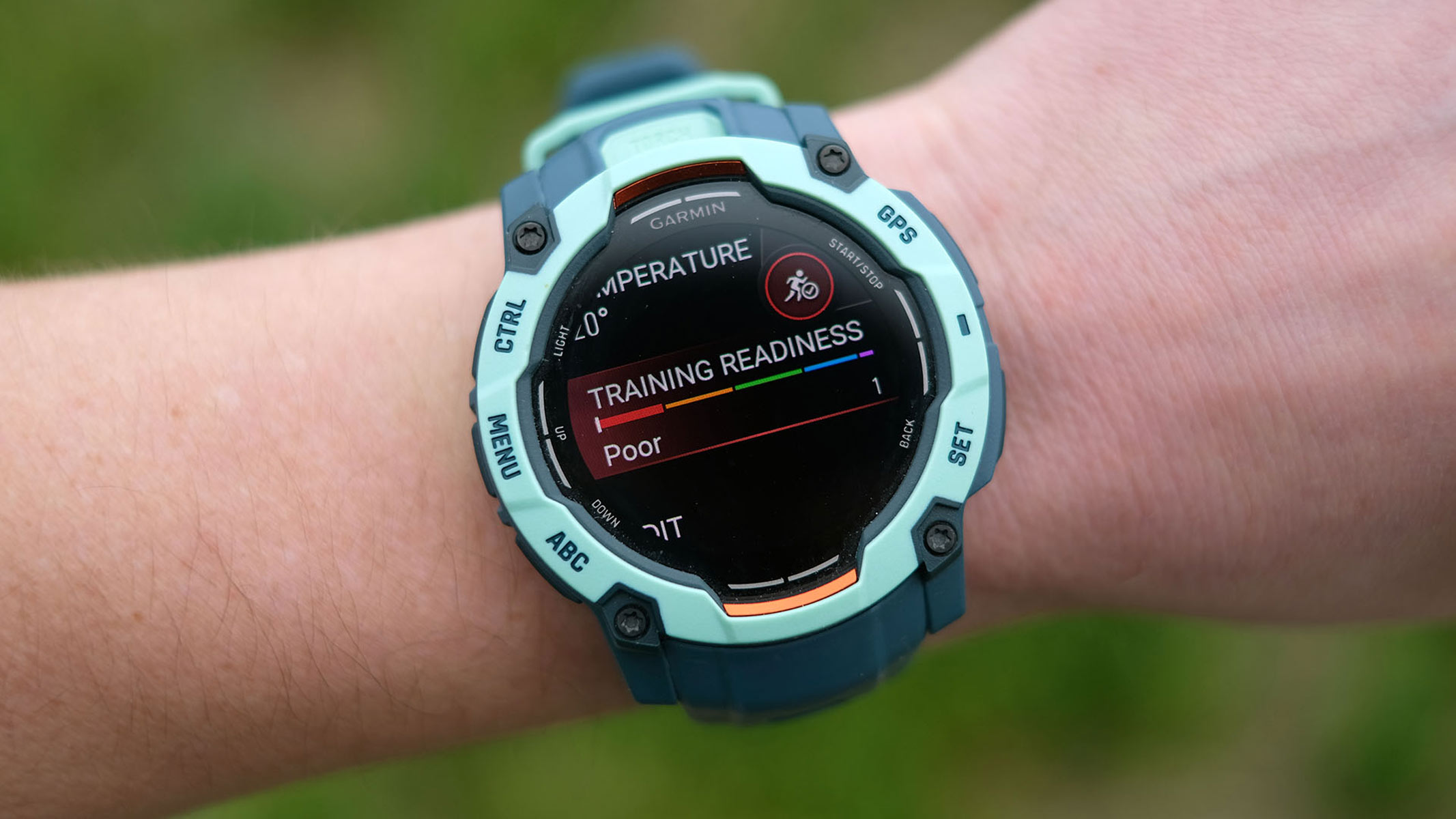
Specifications
Reasons to buy
Reasons to avoid
✅ You want long battery life: It lasts up to 24 days on a single charge.
✅ You are an open water swimmer: This watch offers 10ATM water resistance.
✅ You want good value for money: It costs from $350 to $450.
❌ You want music on the go: It does not support music apps.
❌ You want something inconspicuous: This watch is relatively big and chunky.
❌ You need on-watch maps: You need to plan your routes on the app ahead of the workouts.
🔎 Garmin Instinct 3: This rugged watch was made with professional athletes in mind, but it does not cost the earth. It offers advanced tracking features and long battery life, and it is surprisingly comfortable to wear given its chunky build. ★★★★
You can probably tell the Garmin Instinct 3 angle from a glance. This is a super-rugged, chunky outdoor wearable for those who do not care if their watch looks a bit bulky. In return, the Instinct 3 can last up to 24 days between charges (and much longer if it is the Solar version) and has 10ATM water resistance, double that of most other good wearables at the price — everything triathletes may want from a watch. It is a worthy successor to our favorite Garmin Instinct 2S Solar.
The Instinct 3 is hard to beat for long hiking weekends away from a charging point. However, there are reasons why it only costs half as much as some other flagship Garmin wearables. The screen is beautifully crisp and colorful, but it does not have a touchscreen and that can be a huge downside for some. It is also a beast of a watch. That said, we found it surprisingly light and comfortable to wear during our Garmin Instinct 3 review.
The Garmin Instinct 3 also lacks full map support, which is a major drawback in an adventuring watch like this. You can see a “breadcrumb” trail of where you have been, but not the surrounding terrain and roads because the watch does not store its own mapping data. It can help you avoid getting hopelessly lost, but will not let you map routes on the fly. Still, you can plan your routes in the Garmin Connect app and send to your watch, so not all is lost.
There is no local music playback either, the Instinct 3 can only control music played on your phone.
We found several reasons to pick another model. But the Instinct 3’s tracking accuracy is great and the sheer low-maintenance breeziness of a watch that seems to last forever between charges and is happy to truck on wherever you go should not be underestimated.
If you're not sure the Instinct 3 will suit your adventuring needs, we suggest trying the Enduro 2 instead. The Enduro 2 is also built for use by athletes, offering outstanding battery life that challenges that of the Instinct 3. With both watches offering 10ATM water resistance, they can be used during triathlons without worry. However, the Enduro 2 is pricey in comparison so this is something to be aware of.
- Read our full Garmin Instinct 3 review
Best budget Garmin watch
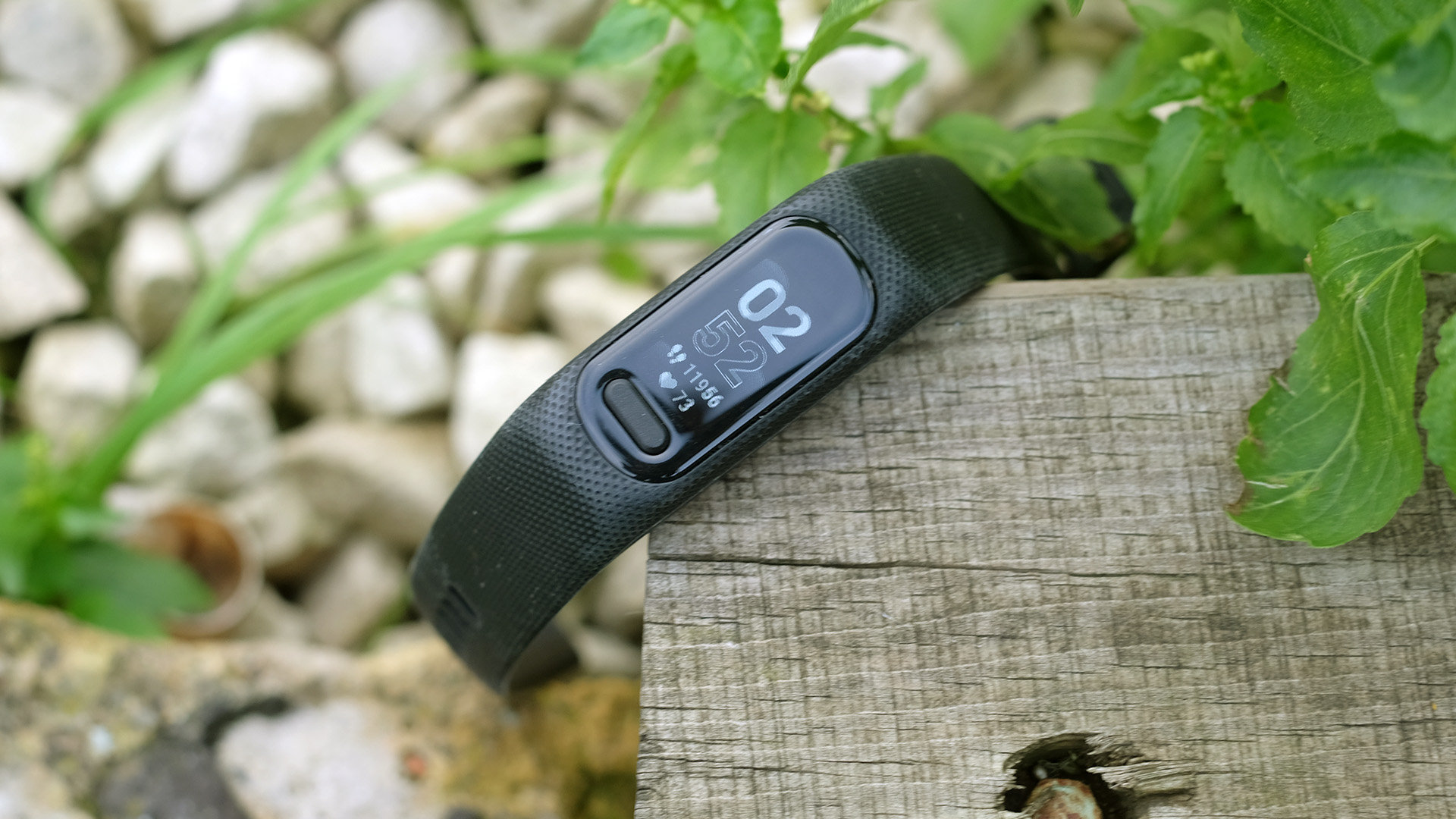

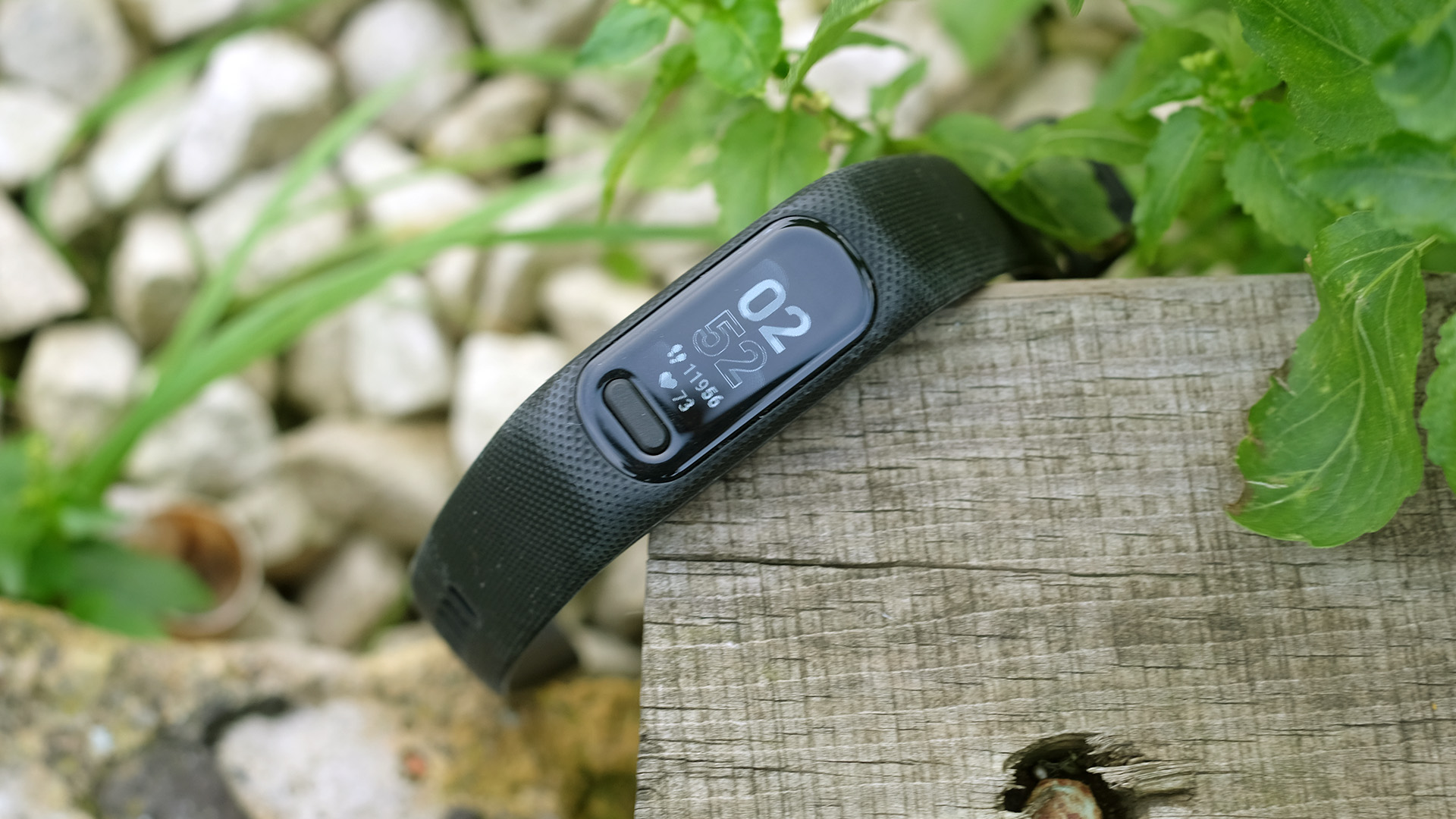
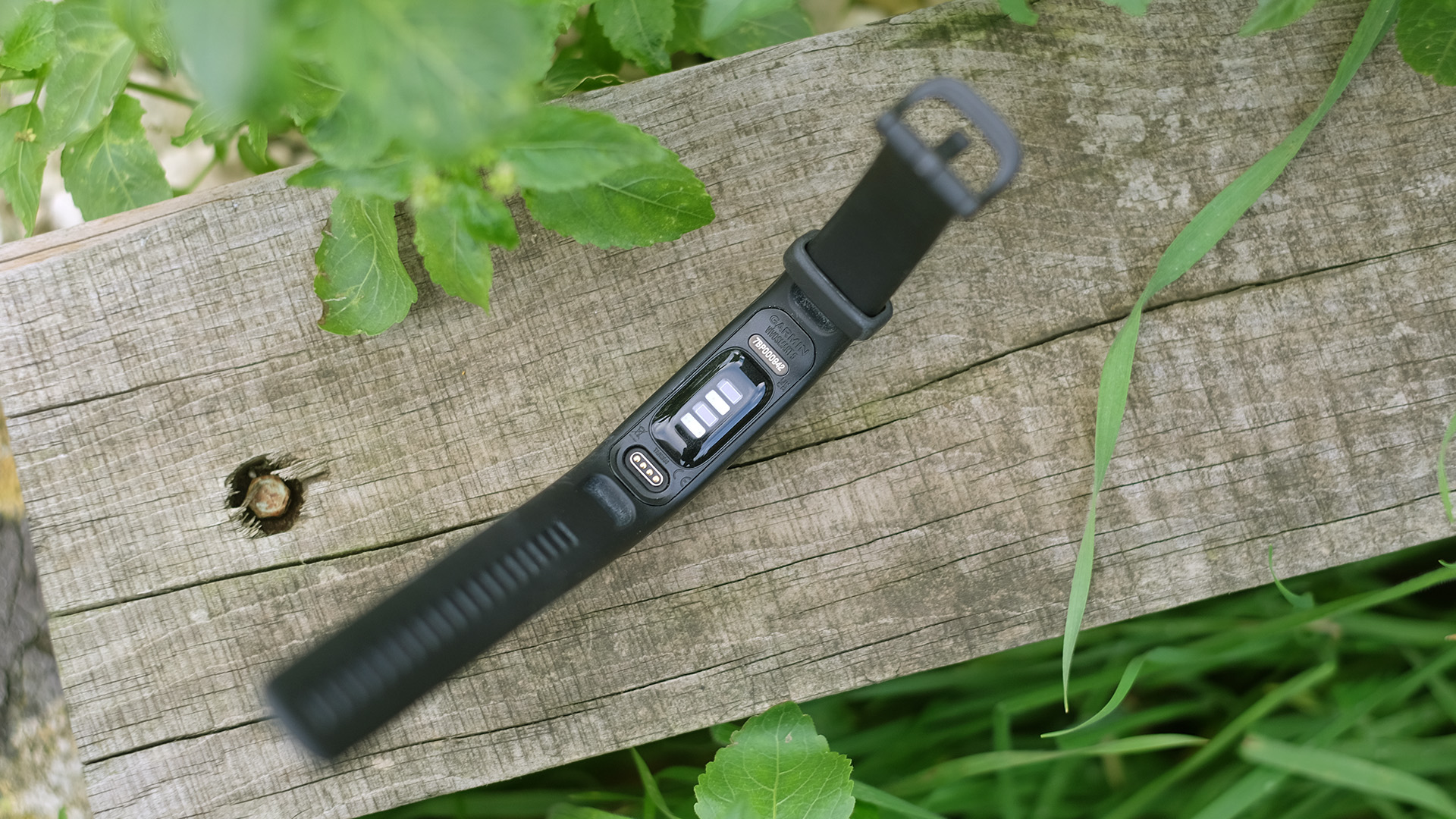
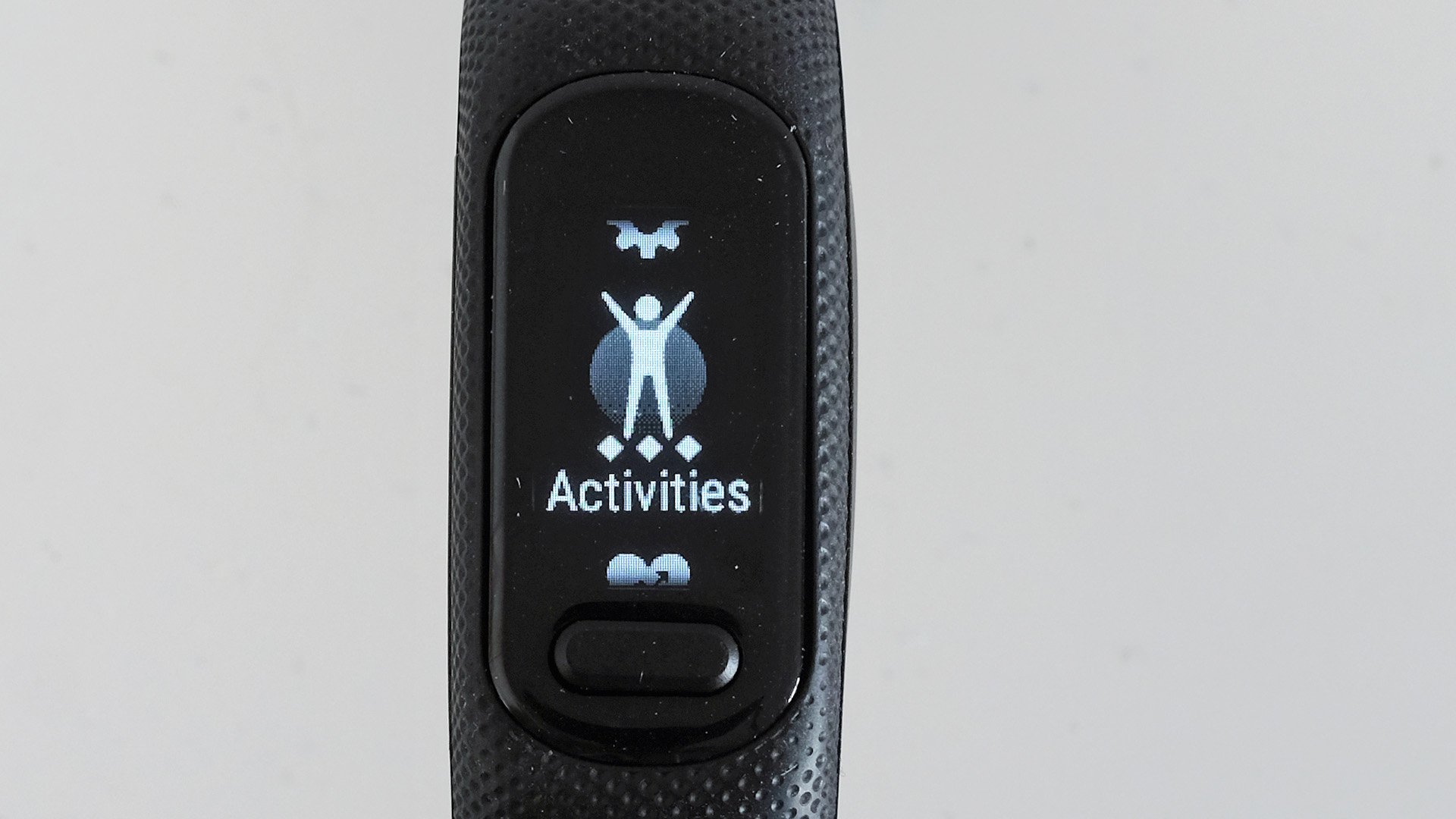
Specifications
Reasons to buy
Reasons to avoid
✅ You do not need the frills: It tracks all the basic health and workout stats — and it does it well.
✅ You want something light and comfortable: No chunky design.
✅ You are on a budget: It costs $150.
❌ You are looking for an outdoor watch: No GPS or on-watch maps.
❌ You want exceptional durability: This watch is made largely out of plastic.
🔎 Garmin Vivosmart 5: One of the most affordable options in the Garmin line-up, the light and compact Vivosmart 5 is a reliable no-frills fitness tracker — but only for exercising indoors. ★★★
If you are set on Garmin as a brand but do not want a big-faced watch, the Vivosmart 5 is a reliable and affordable band, making it suitable for people looking for something small, light and unobtrusive.
For a small watch, it has got a lot of good features. It can record your heart rate and steps, and it estimates your stress and breathing rate. It also monitors your sleep overnight and it can look at your blood oxygenation.
However, it does not have its own GPS so it can’t be used for phone-free runs. The screen’s top layer is plastic too, which is much softer than a good toughened glass and more likely to pick up scuffs and scrapes.
During our Garmin Vivosmart 5 review, our tester undertook a handful of long workouts with the Vivosmart 5 on one arm and the Garmin Enduro 2 on the other. Each time, both watches recorded the exact same maximum heart rate, and each time there was only a slight disparity in the average heart rate across the session, by a margin of 1-2 bpm. The Vivosmart 5’s step counts seemed fine and the stress tracking feature is good — although we found stress graphs are much better viewed in the Connect app on your phone than the band’s own tiny screen.
Overall? The Garmin Vivosmart 5 performs well for a casual fitness tracker and offers better tracking accuracy and more thoughtful software than the vast majority of trackers of this style. But, if you are looking for a budget smartwatch with a traditional watch face, the Vivomove Sport might be more your thing. The Vivomove Sport is a no-frills watch that does a good job at capturing exercise for casual exercisers while also offering an OLED screen display.
If you do not mind spend a bit more, we would also recommend the Garmin Forerunner 165. While not too affordable, it is still one of the best budget wearables for runners (scroll down to read more.)
- Read our full Garmin Vivosmart 5 review
Second-best
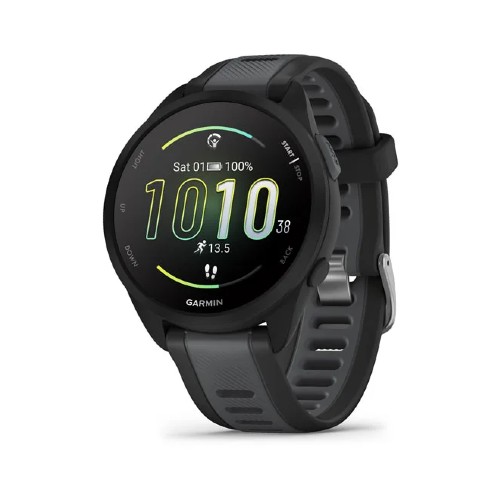
Second-best
The Garmin Forerunner 165 may not be the cheapest wearable in this guide, but it does deserve a special recognition. It is one of the best budget running watches on the market and a particularly good choice for novice runners. With its stylish design, reliable GPS and excellent tracking accuracy, its immense value for money is simply undisputable.
Pros
- Top-notch tracking accuracy
- Comfortable to wear
- Lovely OLED screen
- Excellent value for money
Cons
- Its battery life can drop significantly when used in certain modes
Best Garmin watch for occasional exercisers
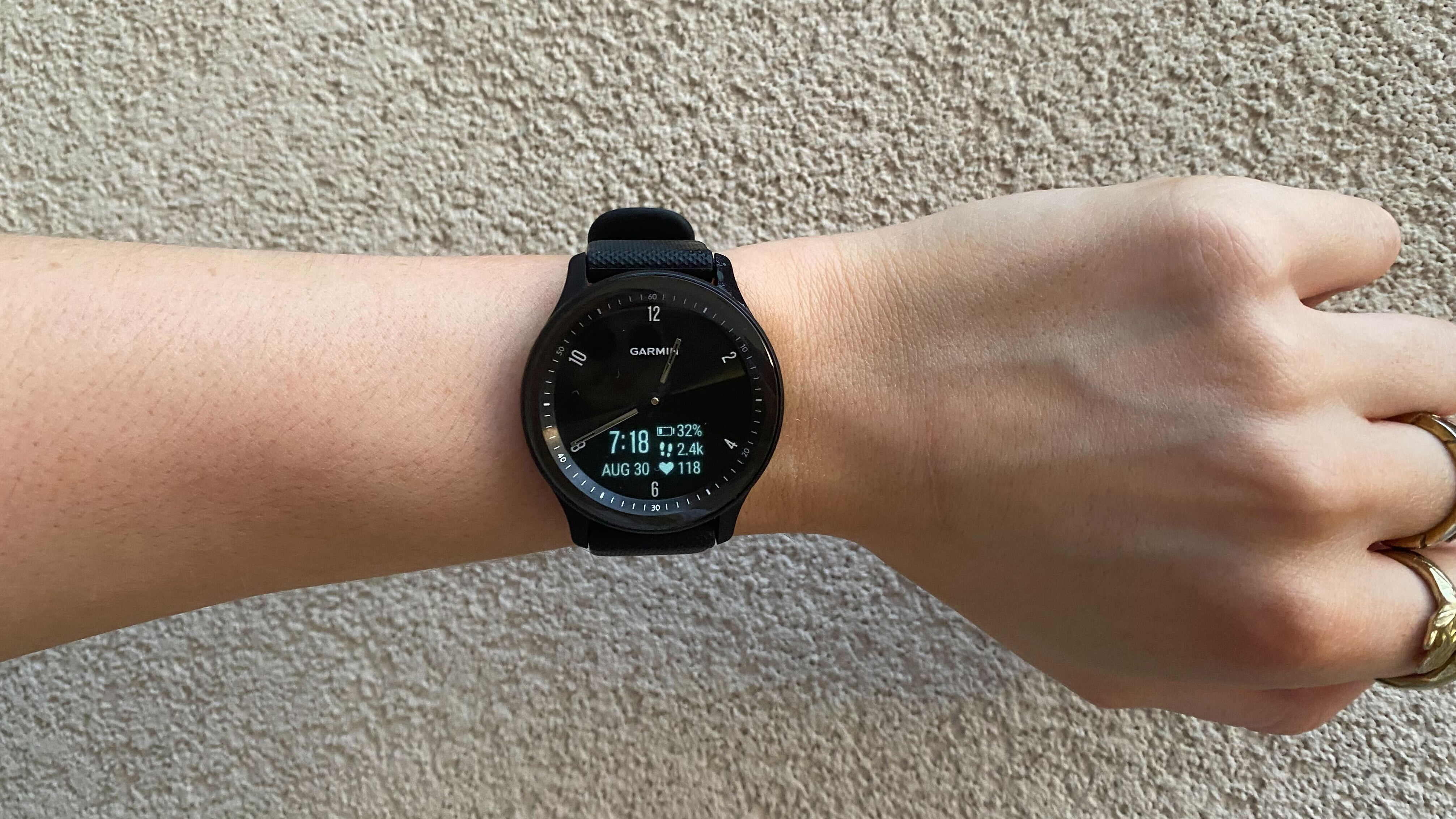


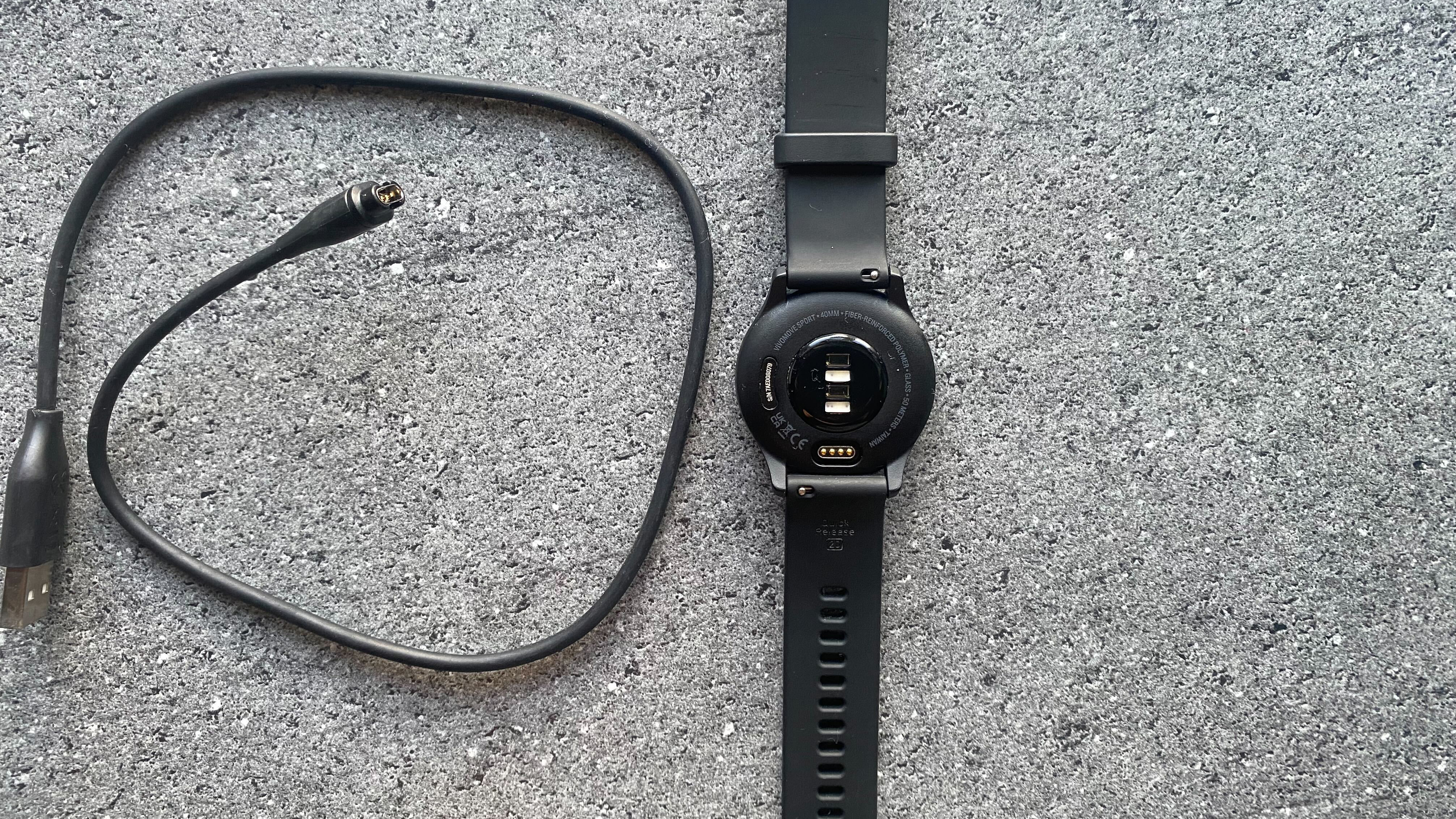
Specifications
Reasons to buy
Reasons to avoid
✅ You are looking for a basic fitness tracker: Great accuracy without in-depth fitness stats.
✅ You want a stylish watch: It is one of the best looking Garmin wearables.
✅ You want something light and comfortable: It does not overload your wrist with heavy machinery.
❌ You want exceptional battery life: It lasts up to five days on a single charge.
❌ You want an outdoor watch: No GPS or on-watch maps.
🔎 Garmin Vivomove Sport: Small, discreet and budget-friendly fitness watch without the bells and whistles of more premium models. Perfect for occasional exercisers, but too basic for those who train with performance in mind. ★★★★
The Garmin Vivomove Sport is a straightforward tracker — perfect for occasional exercisers. A lot of bells and whistles have been stripped out of this model, including in-built GPS. While this does mean that it is less accurate for measuring distances, it also means that it is a lot cheaper than the other watches in this list.
And as long as you have a smartphone to pair with the watch, you will not miss that GPS. The watch can actually calculate distance on its own if you input your average step-to-km count. However, during our Garmin Vivomove Sport review, we did not find that method particularly accurate – so we would recommend hooking it up to your phone on a run.
One of the biggest selling points of this watch is its aesthetics. Unlike most Garmin trackers, it does not look out of place when you are wearing it during working hours. It is also fairly light at just 33.8g, so you can happily wear it throughout the day and evening without it feeling cumbersome.
It tracks a variety of workouts, including pool swimming and yoga. And unlike a lot of the models in this list, you are not likely to feel overwhelmed by its features and functionality. As such, we would recommend this model for anyone who needs a fairly lightweight bit of kit to track general workouts – but it is probably not the best fit for endurance athletes and marathon runners.
A final note on battery life: while Garmin claims that the model can last for five or six days without charge, during our testing period we could only get it to last for four days max. While this is better than some trackers (like the Apple Watch 7) it is disappointing when compared to the likes of the Enduro model, also in this list. However, if you're looking for a budget tracker, and one with slightly better battery life, the Garmin Vivosmart 5 is a good option offering seven days of battery life compared to the five (or four) offered by the Vivomove Sport.
- Read our full Garmin Vivomove Sport review
Best Garmin watch for high-end features
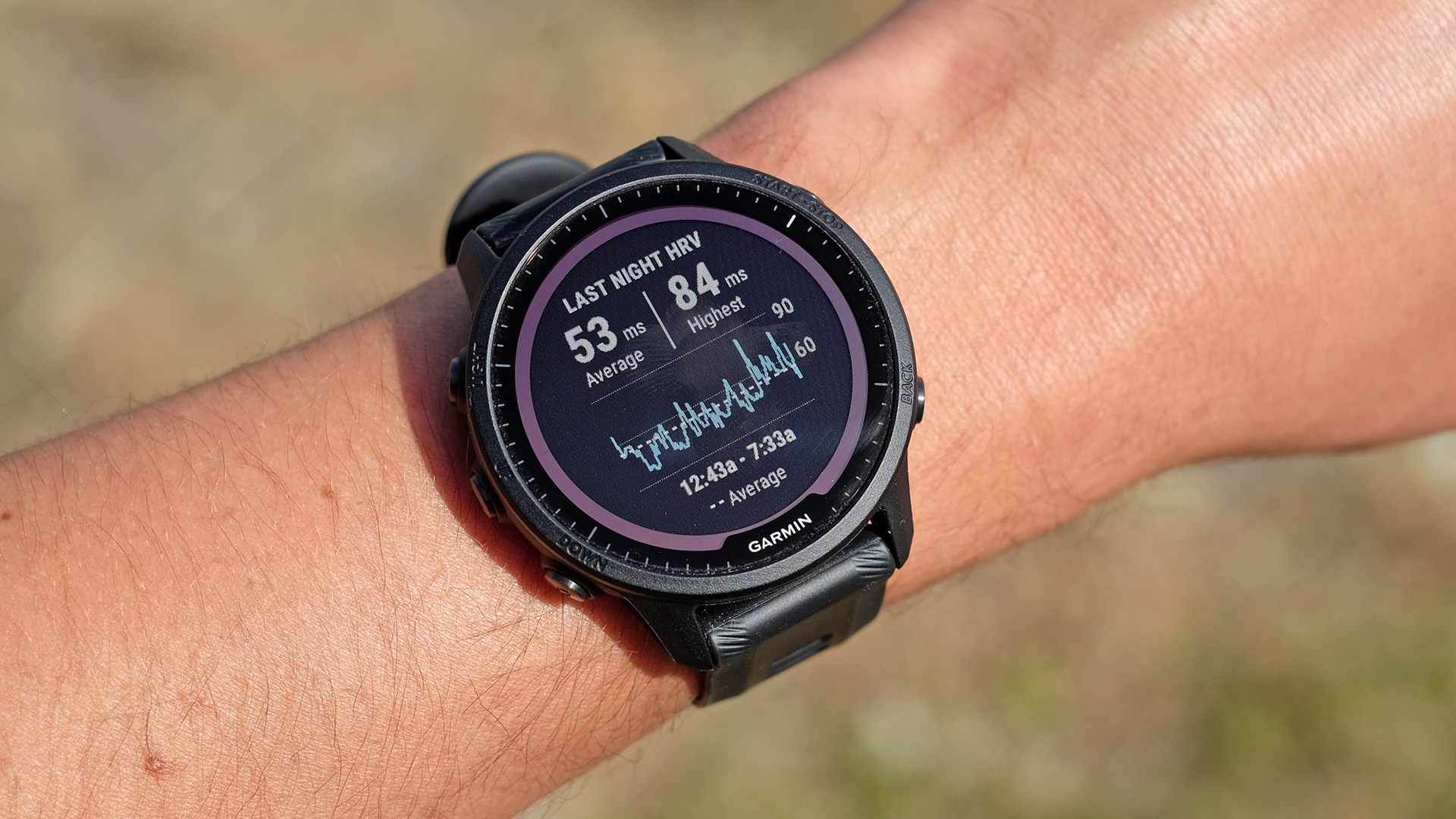
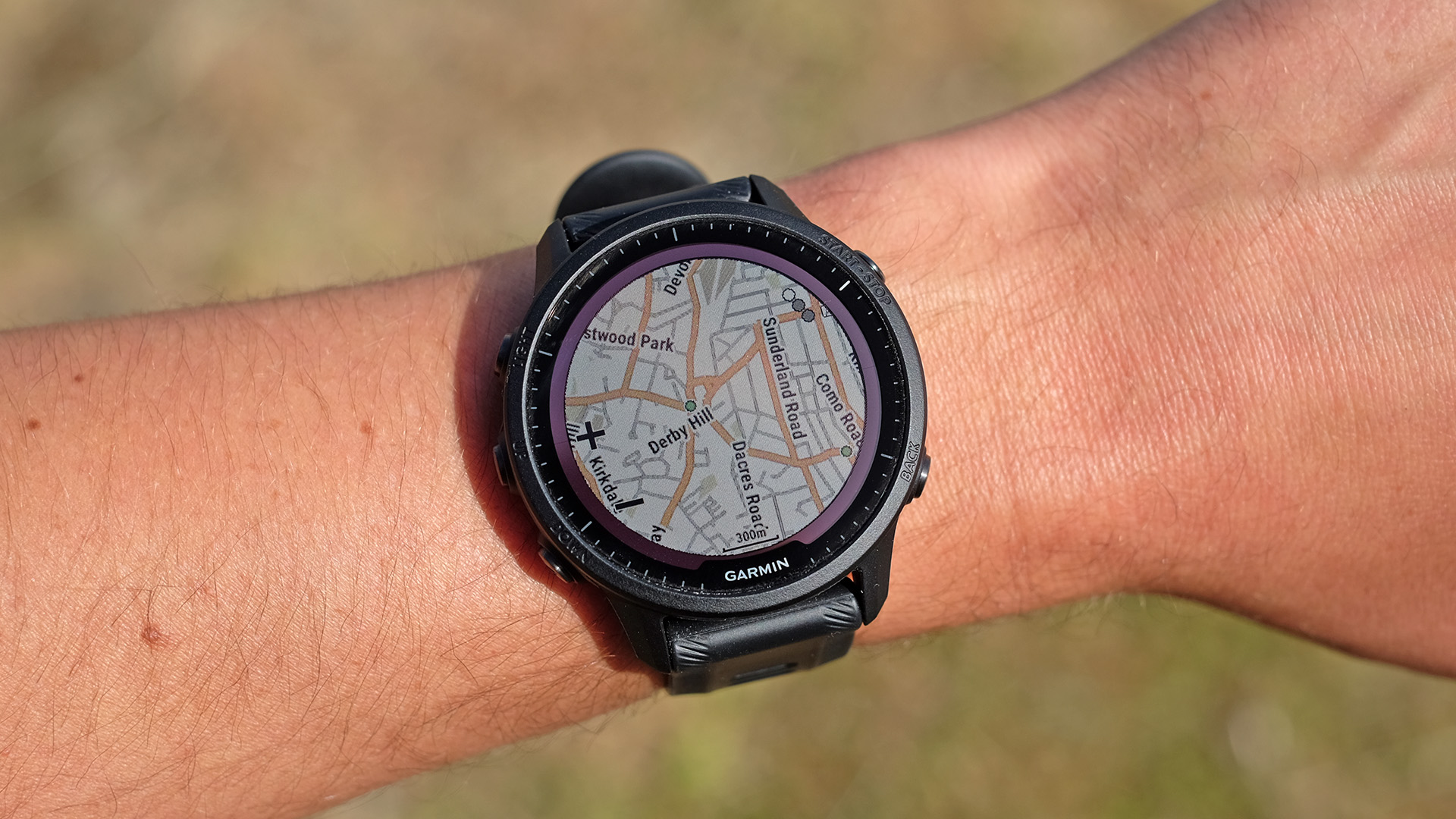
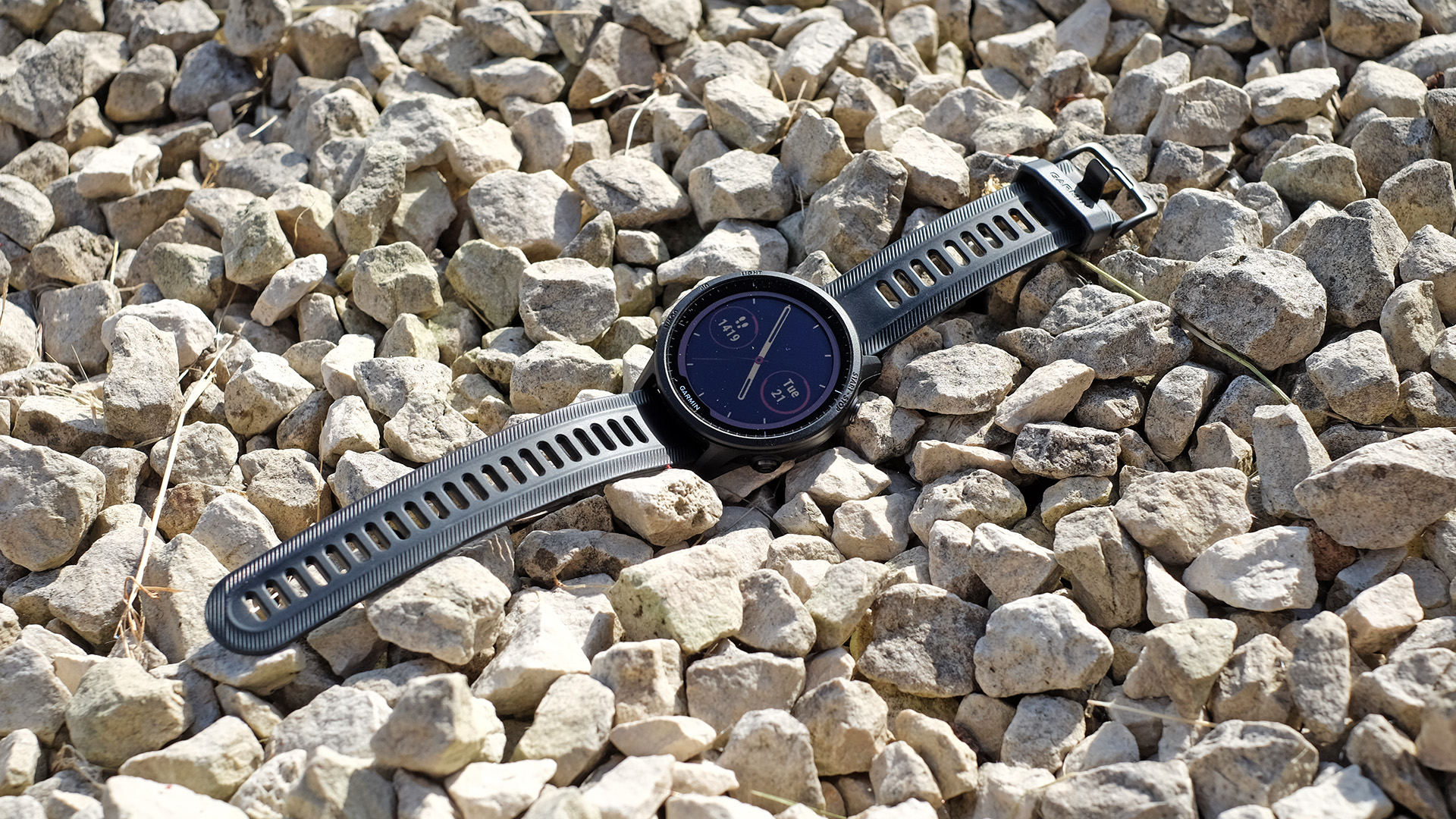
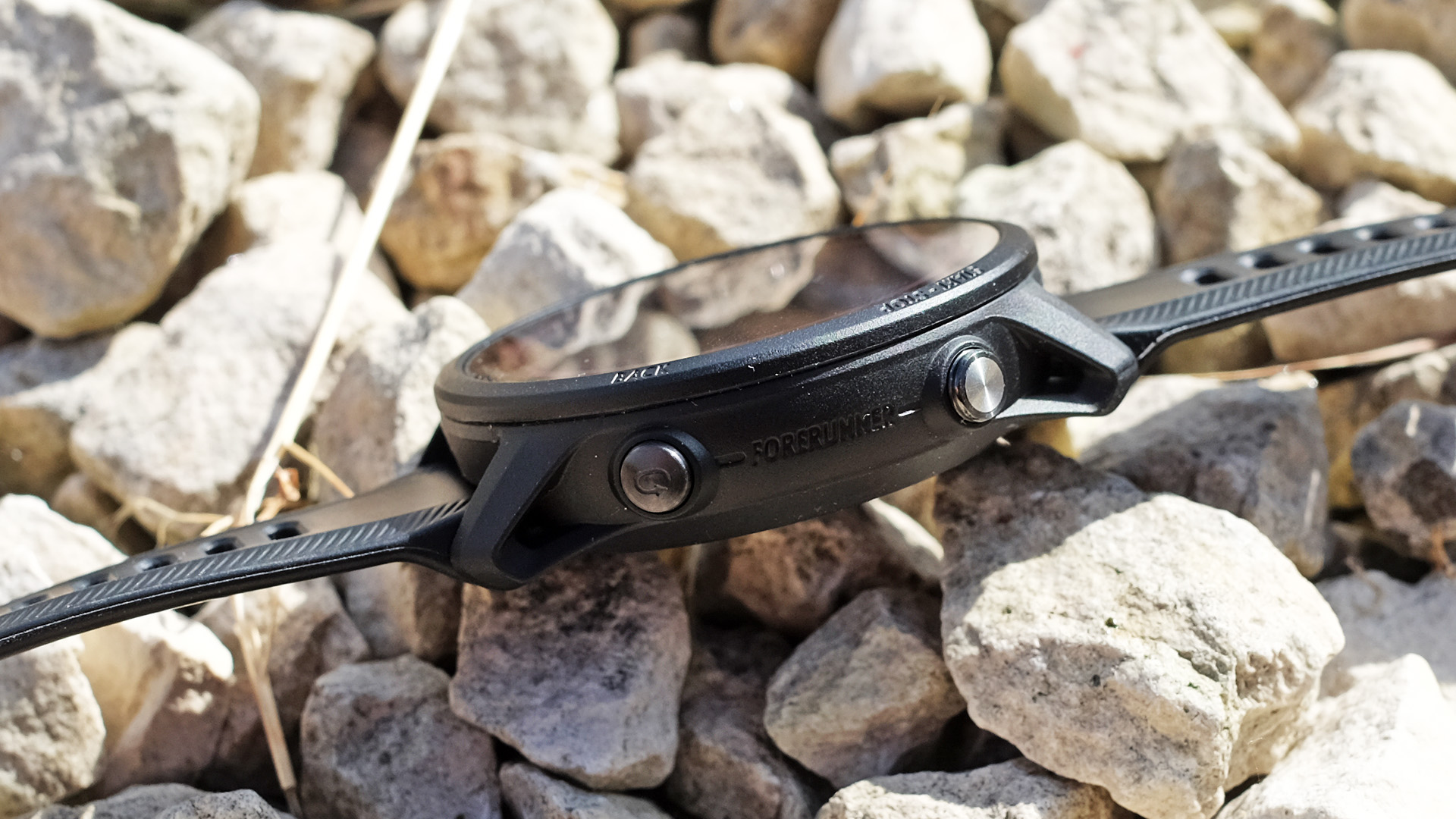
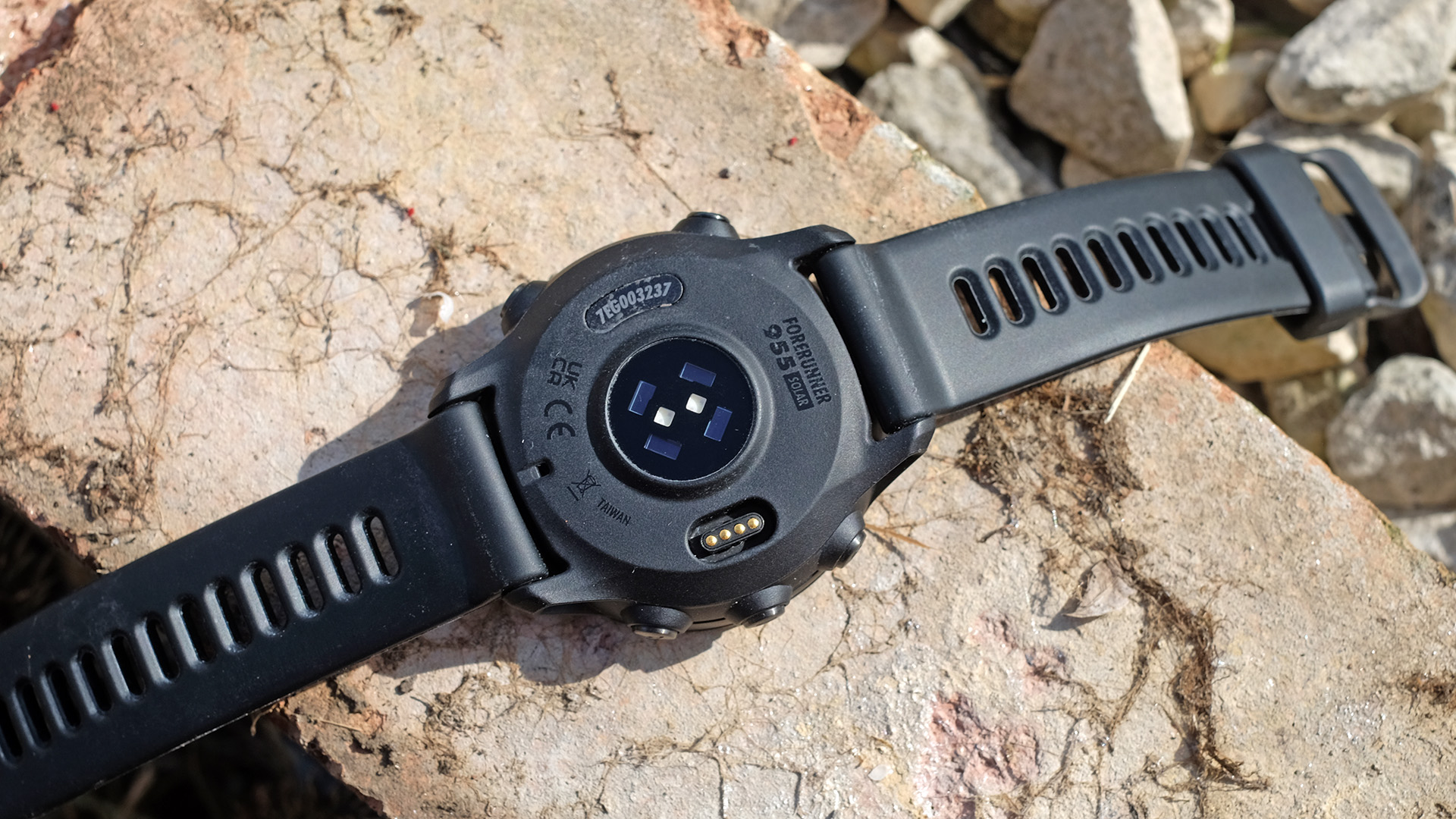
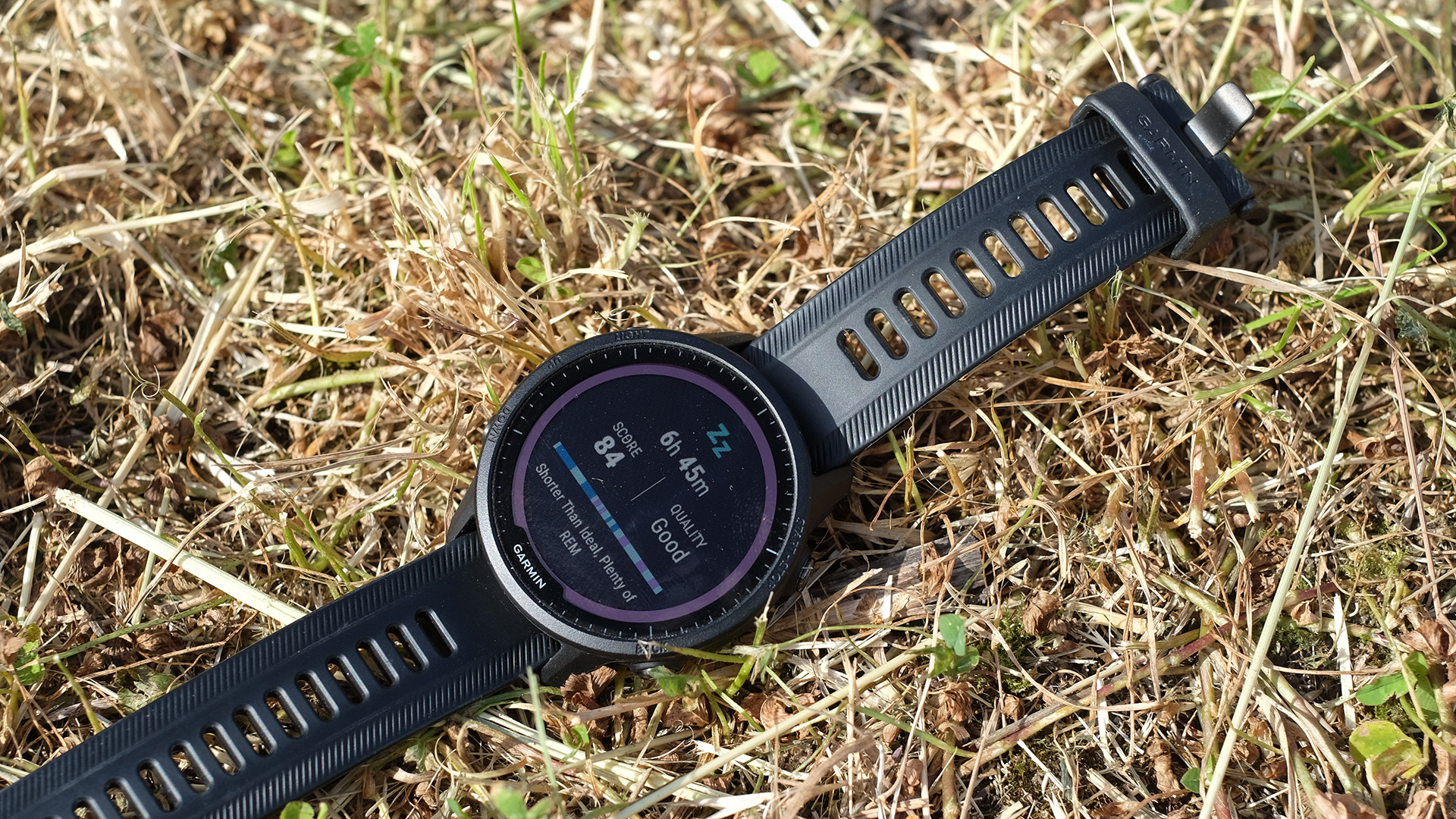
Specifications
Reasons to buy
Reasons to avoid
✅ You want in-depth fitness tracking features: Great for runners and passionate gym goers.
✅ You want an outdoor watch: It features on-watch maps and GPS navigation.
❌ You are on a budget: It costs from $600 to $700.
❌ You want exceptional durability: It is not plastic-made, but it is not sturdy, either.
🔎 Garmin Forerunner 965: This top-end Garmin running watch combines high-end features with a crisp display and user-friendly design, but it compromises on durability. ★★★★½
The Garmin Forerunner 965 strikes a great balance between looks and functionality. It is a great option if you want durability and traditional Garmin features, but you are not keen on the rugged looks.
During our Garmin Forerunner 965 review, we liked its no-nonsense design, but we were not fond of its high price tag given it is a watch with a plastic shell. The Forerunner 965, however, stepped up its design. While the main part of the shell is plastic “resin”, the bezel is titanium, a more expensive metal than steel.
Water resistance is lower too, at 5ATM, compared to the 10ATM of the Fenix 7. You want that higher rating if you plan on swimming any distance below the surface of the water.
However, we think lots of people are going to flat-out prefer the look of of the Forerunner 965. While it is not a small watch, and measures 47mm across, it is not an intimidating-looking one either. Don’t want to come across a try-hard? Get one of these or, even better, a small Forerunner 255S, rather than a Fenix.
A bit of OLED gloss aside, using a Forerunner 965 feels much like using an Epix 2 or Fenix 7. But there is nothing wrong with that, and the sense of really having an idea over how well your routine is working is quite powerful.
The Garmin Forerunner 965 perfectly encapsulates the Garmin's approach to quality and style. It takes the OLED screen tech of the Venu watches, and combines it with the high-end features of the Forerunner 955.
As mentioned, the Forerunner 965 feels like a combination of some of Garmin's best watches. However, if you're looking for better water resistance or diving capabilities, the Fenix 8 might be a better option for you, offering 10ATM and diving down to 40 m.
- Read our full Garmin Forerunner 965 review
Best Garmin watch for long trips
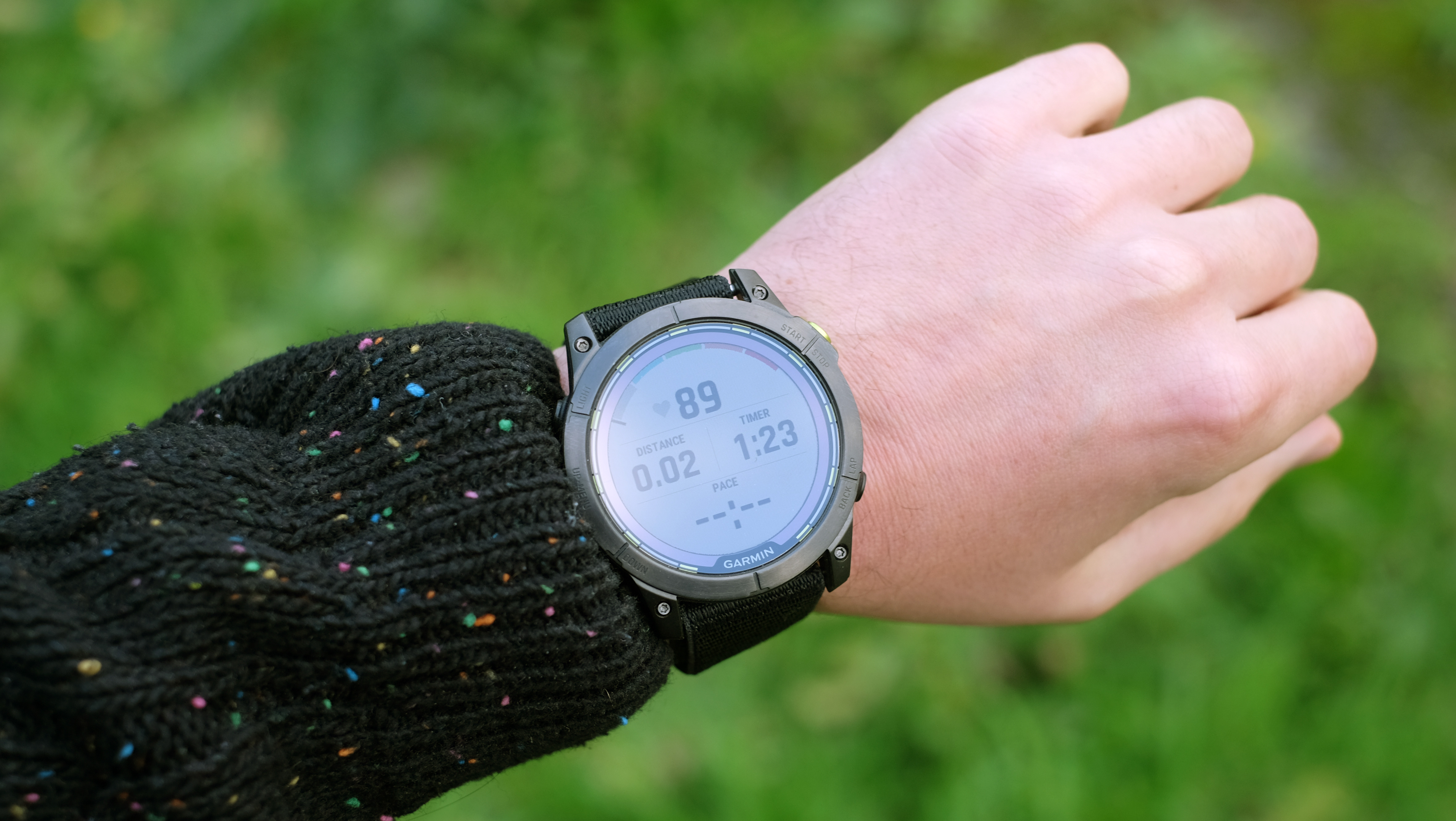
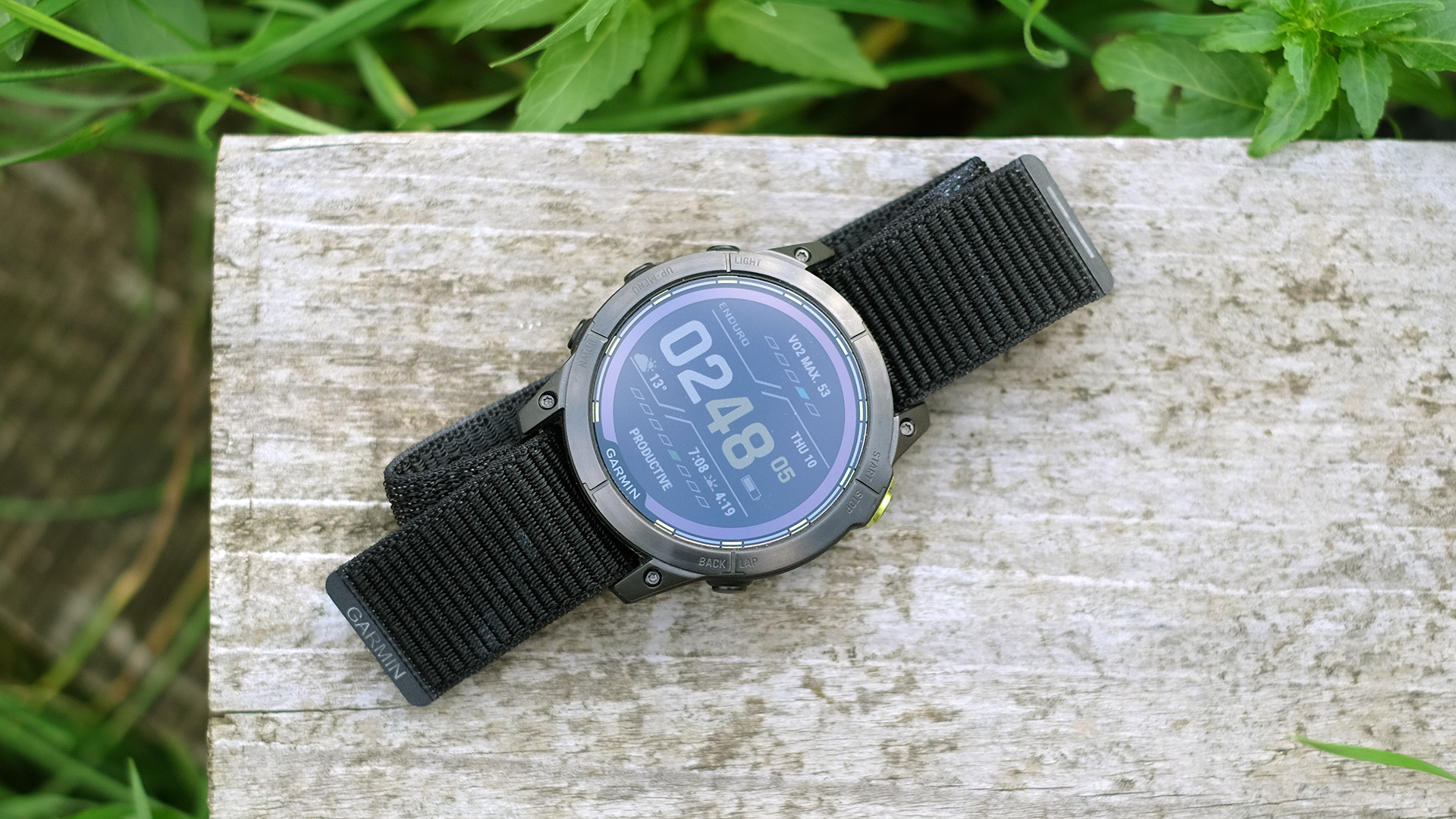
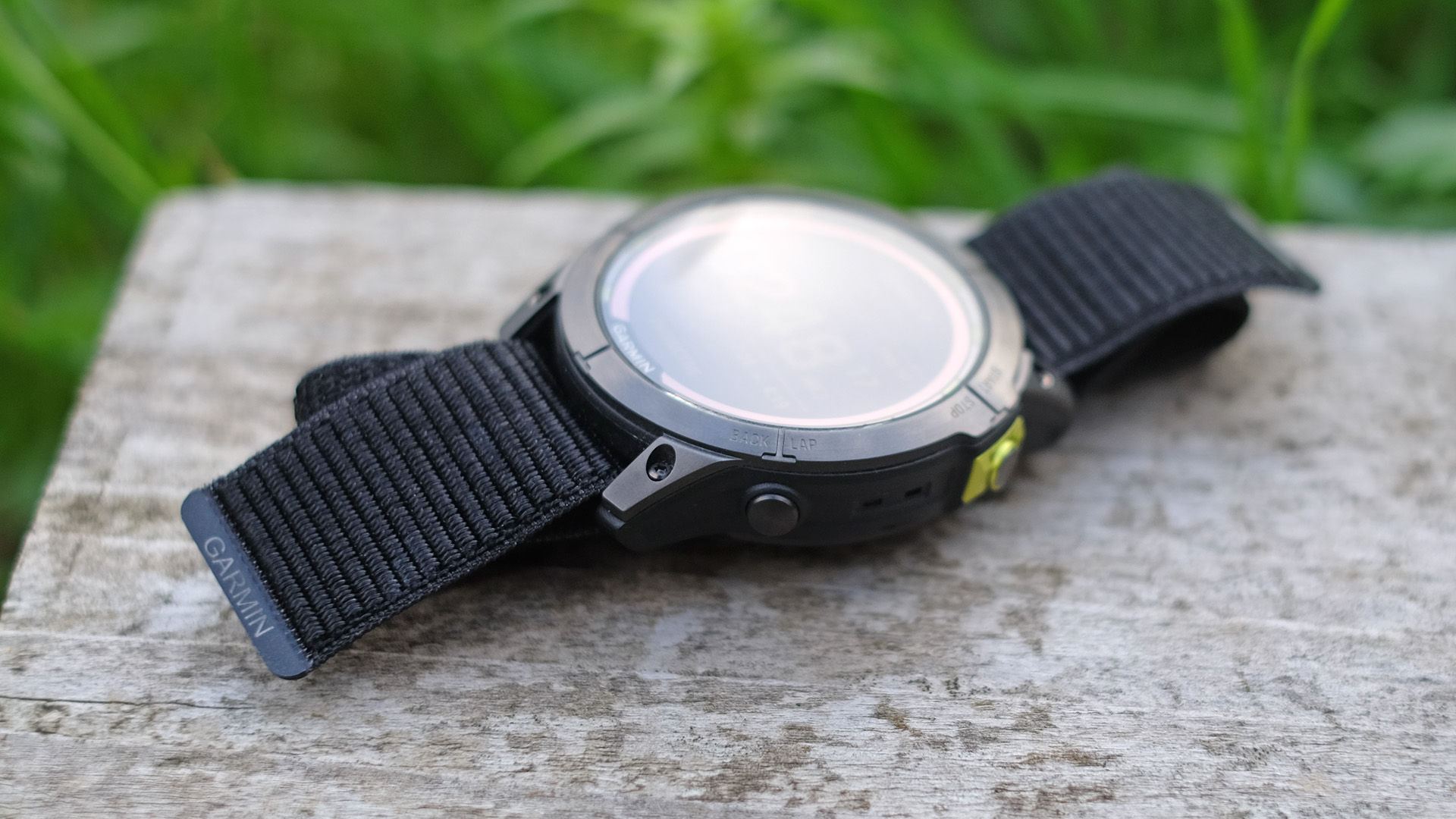

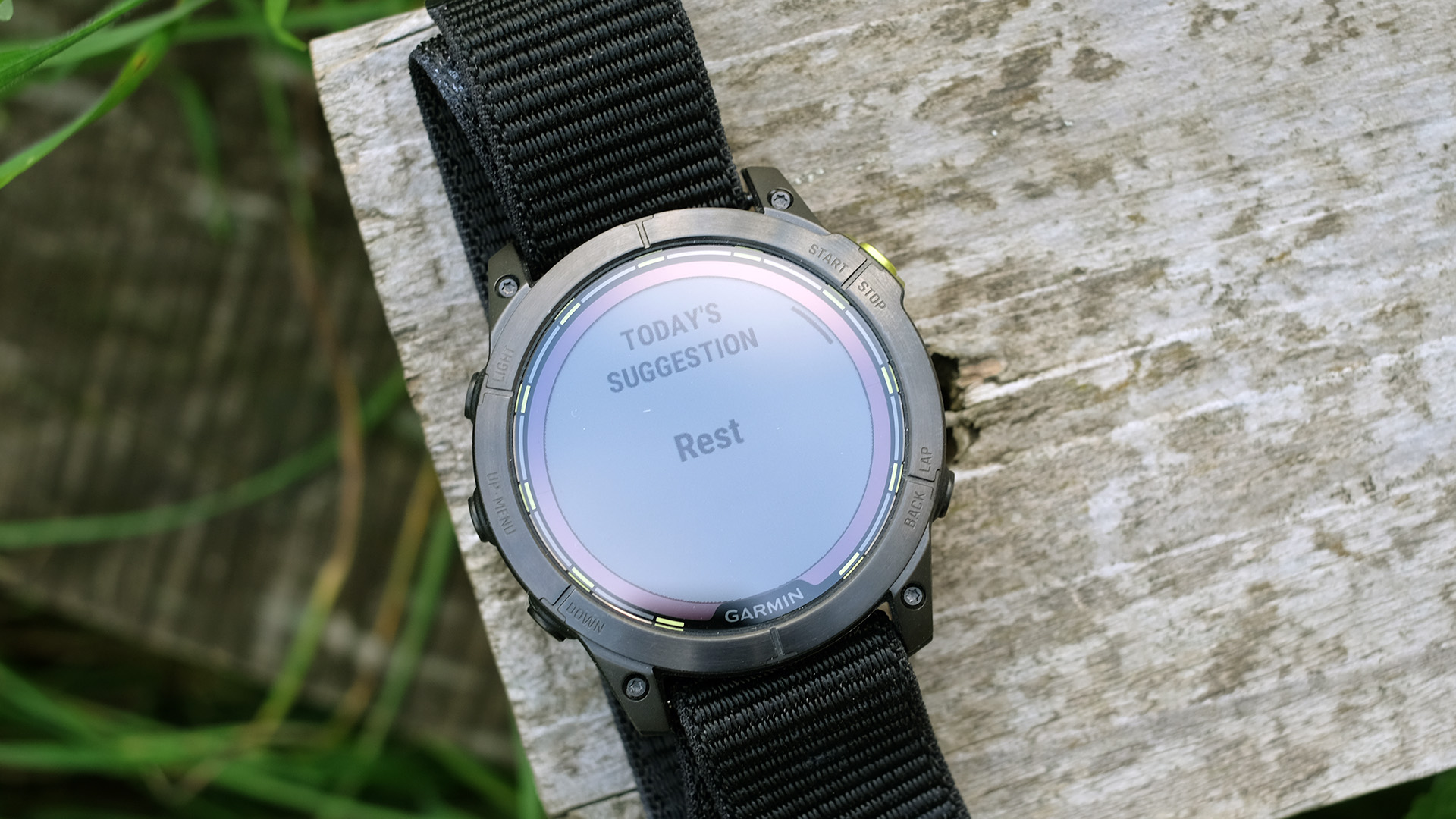
Specifications
Reasons to buy
Reasons to avoid
✅ You want a swimming watch: It features 10ATM water resistance.
✅ You want an outdoor watch: It features a reliable GPS and on-watch maps.
❌ You are on a budget: The Enduro 2 costs from $700 to $999.
❌ You want something light and comfortable: It features a relatively chunky design.
🔎 Garmin Enduro 2: The Rolls-Royce among Garmin watches, the Enduro 2 was made with hardcore fitness enthusiasts in mind, and its chunky design fully reflects that. ★★★★
No prizes for guessing what the Garmin Enduro 2 is all about. It is a watch that lasts an extremely long time between charges, and is aimed at endurance athletes. But we do not know any who would outlast this thing’s battery.
It is rated for 34 days of use in its "smartwatch" mode, or 46 days if you take use of its solar charging capabilities. Garmin says it can last up to a year in the power mode that basically turns it into a normal watch. And if this battery life still isn't good enough for you, you could consider the Instinct 3 that boasts 24 days of battery life and unlimited use with solar charging. However, we did find the Instinct 3 to be lacking in other areas where the Enduro 2 outshines it.
During our Garmin Enduro 2 review, we were also impressed by its features, the tracking accuracy depth and in-depth stats.
This is a high-quality, rugged watch with a stainless steel or titanium bezel and a predictably large 51mm wide watch face. A maxed-out battery requires some space. 10ATM water resistance means you can happily use it in the water too.
You can trust its route-tracking stats, and the TrackBack feature lets you see your previous route — handy for trail running and hikers.
However, the Enduro 2 is not the best fit for everyone. For one, it costs a small fortune, just like the priciest Fenix models and the Garmin Epix 2. We find that hard to justify when the Forerunner 955 and base Fenix 7 can do the same things, and cost a lot less.
- Read our full Garmin Enduro 2 review.
Best Garmin watch for hikers
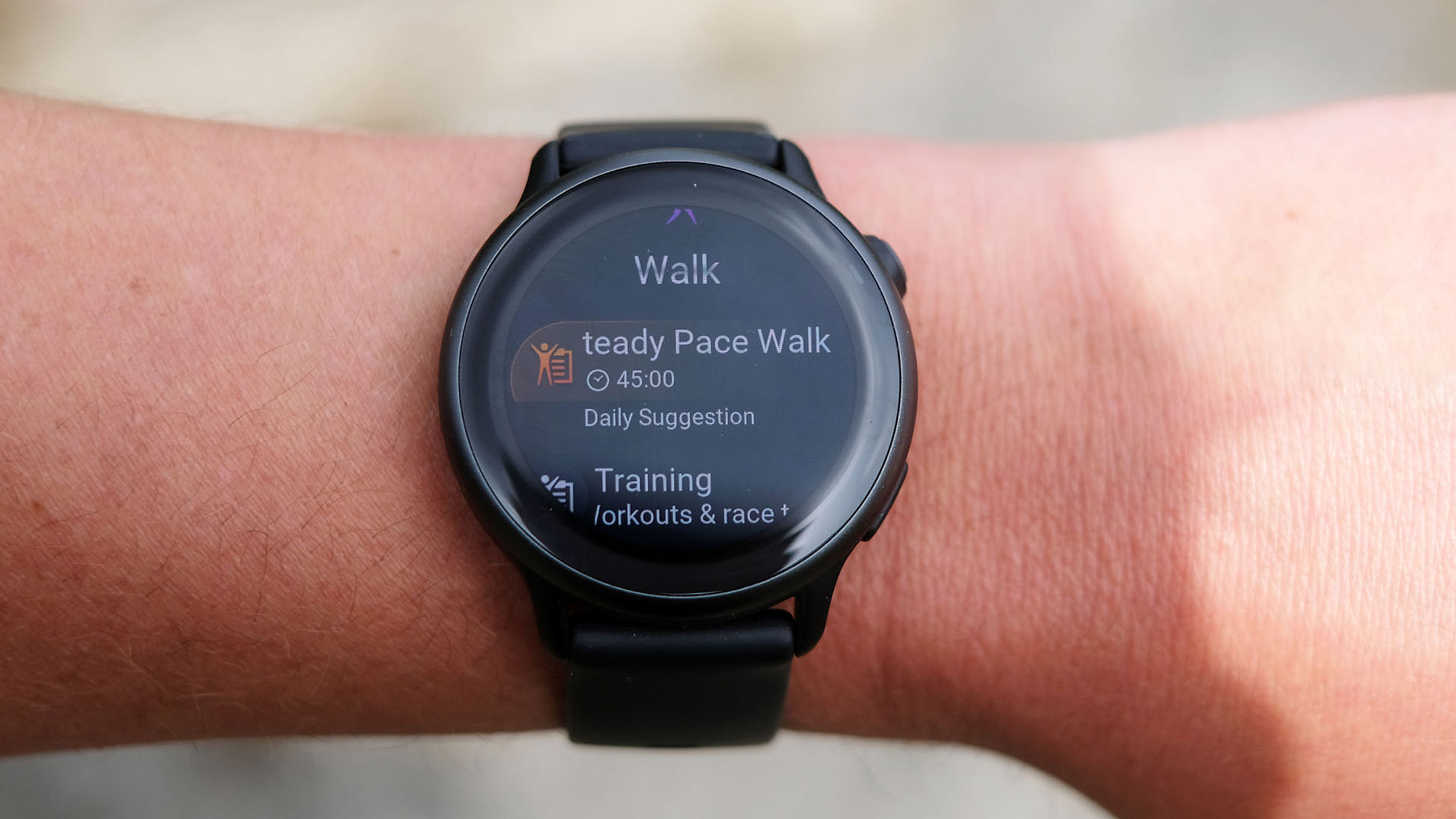
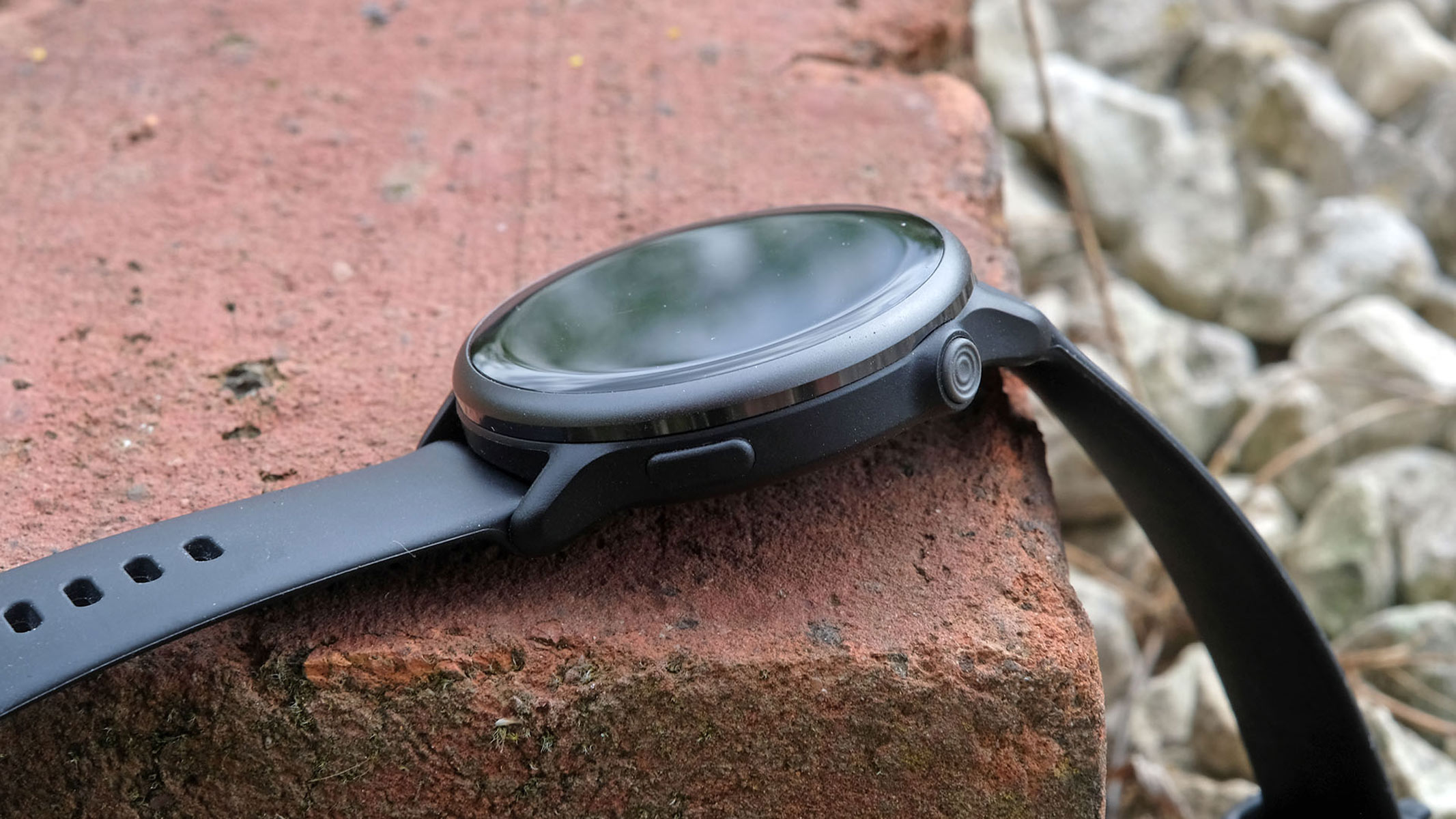
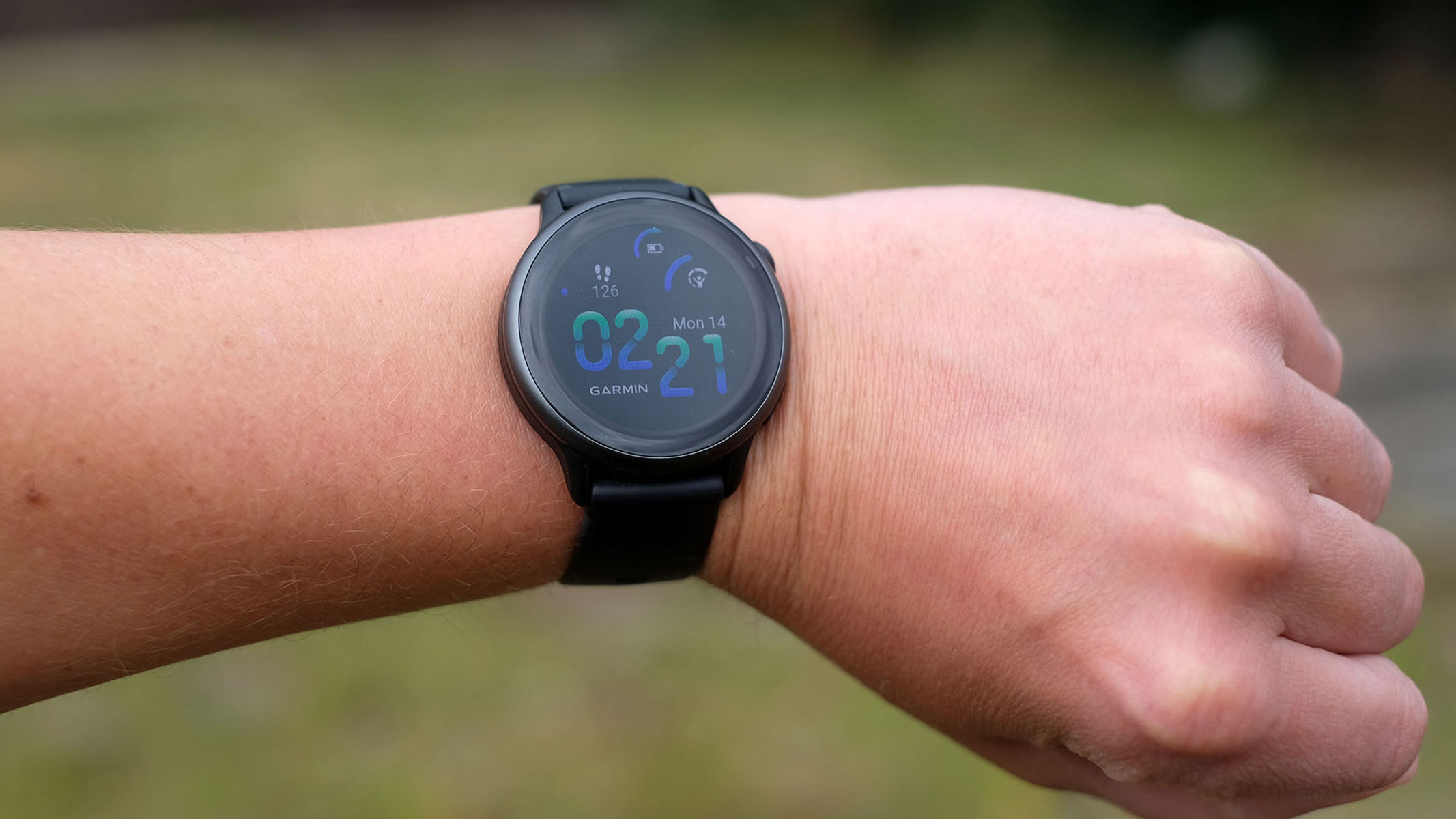
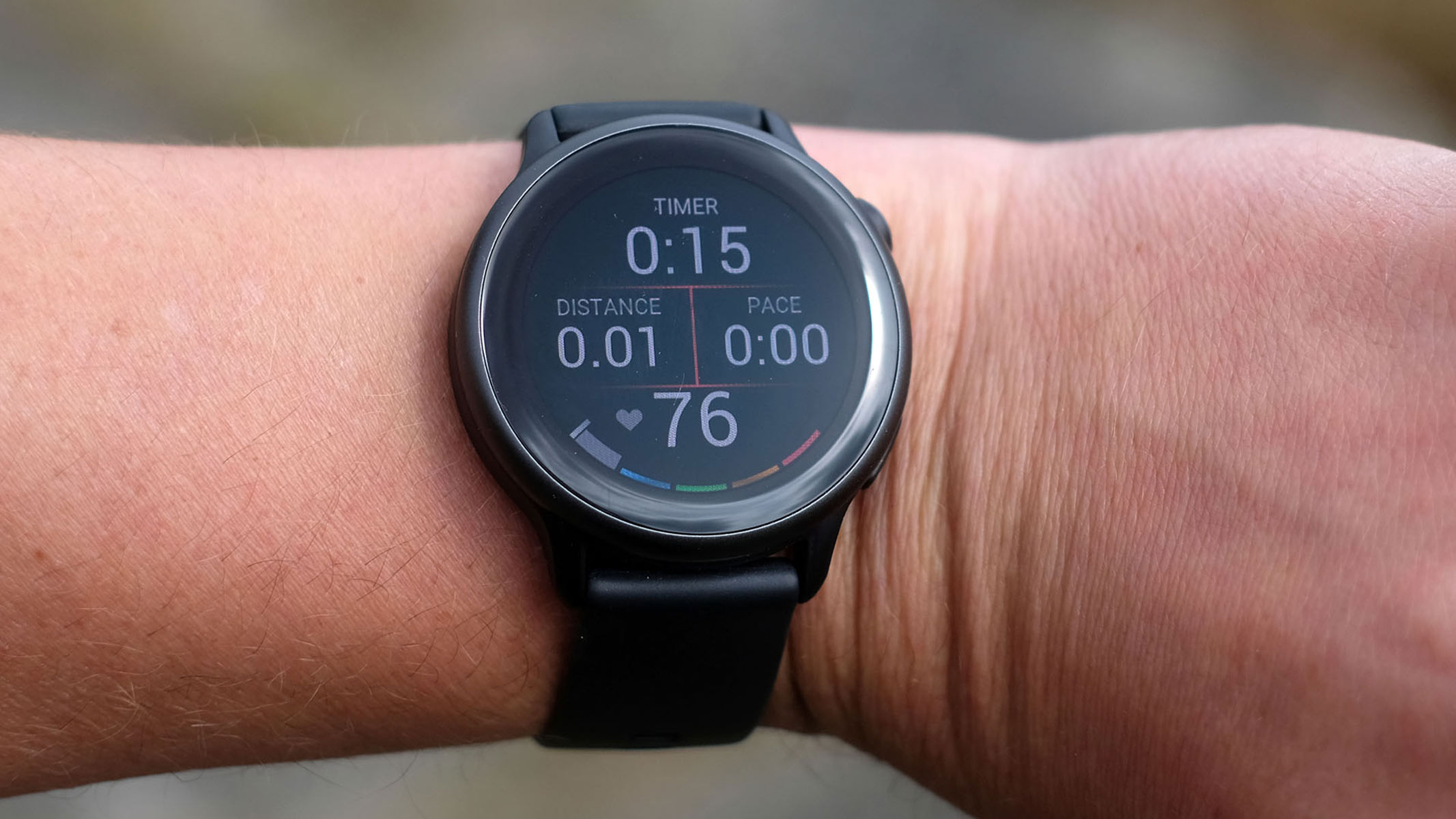
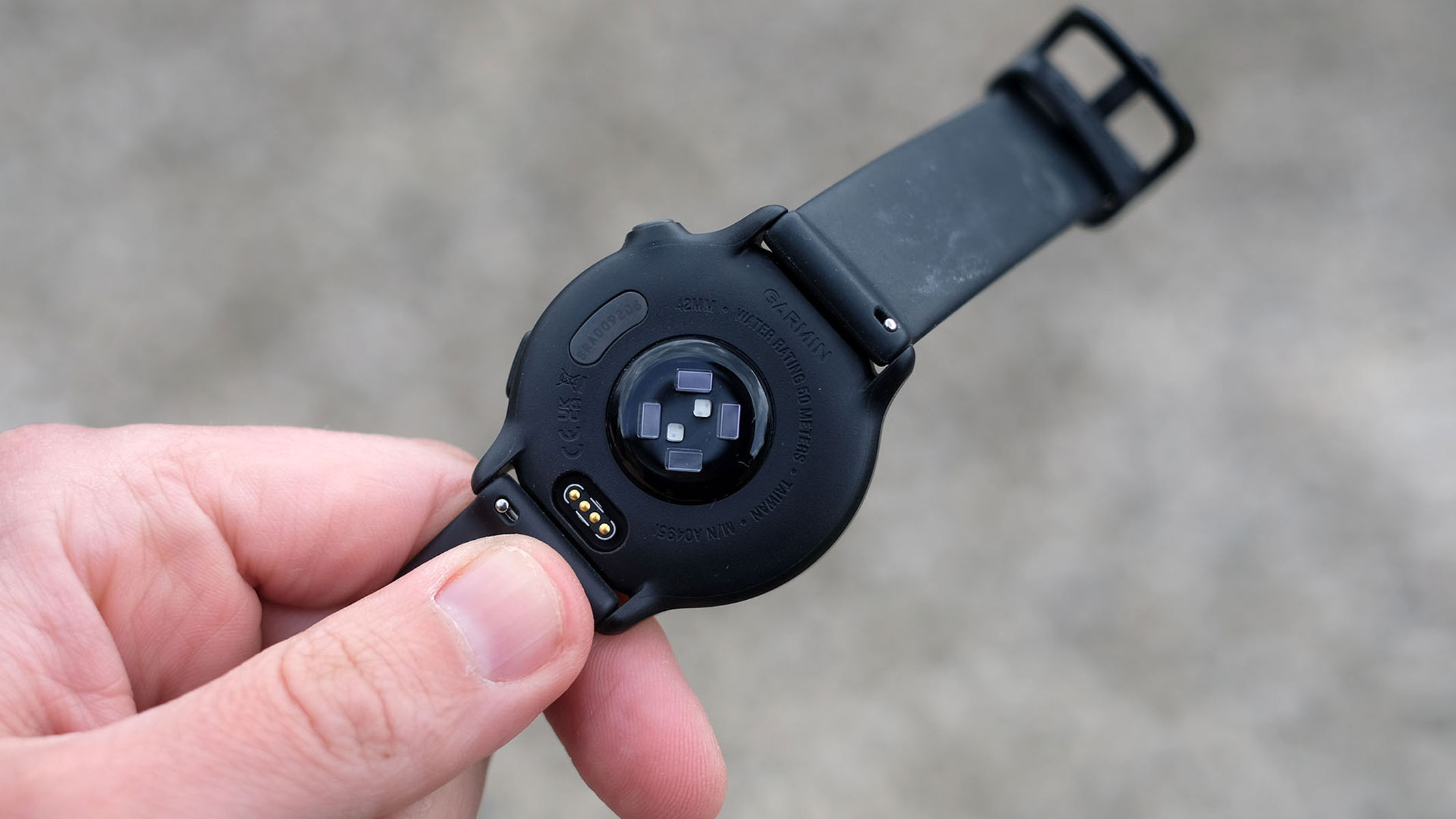
Specifications
Reasons to buy
Reasons to avoid
✅ You are new to hiking: The Garmin Vivoactive 6 offers suggested walking workouts making it ideal for those new to hiking or exercise.
✅ You are new to fitness trackers: This watch is intuitive to use and displays stats beautifully — ideal for newbies to fitness tracking.
❌ You hike tall mountains: There is no altimeter so you won't be able to measure your altitude or air pressure.
❌ You scramble or are accident prone: We found the screen chipped easily so care needs to be taken when wearing this watch.
🔎 Garmin Vivoactive 6: A lightweight Garmin that offers accurate GPS tracking, suggested walking workouts and boasts a bright screen that can handle direct sunlight — an ideal addition to any hikers attire ★★★★
The Garmin Vivoactive 6 is a lightweight fitness tracker that only weighs 36 g meaning it's likely you'll forget you're even wearing it when out hiking. The interface includes suggested walking workouts that are calculated based on how rested the watch thinks you are and other exercise you've undertaken recently. These are ideal for those starting out with exercise or recovering from an injury but a seasoned hiker may find these a little dull.
Overall, in our review of the Garmin Vivoactive 6, we found the interface to be intuitive with the stats displayed beautifully. Plus, an added bonus for a hiker is that the screen performs well in bright sunlight — a must have if you're walking in the summer months. We also found the GPS location tracking to be accurate, although under dense tree cover it became patchy. This is due to the lack of dual-band GPS in the Garmin Vivoactive 6.
Even though we loved the Garmin Vivoactive 6, there are a few things we'd like to see improved to make this absolutely perfect for hikers. These aren't deal breakers but small things that could make a big difference. For instance, a button control would be beneficial to switch between information screens during a walk. It is touchscreen only for this command which could be cumbersome if you're wearing gloves during the winter months.
Furthermore, the Garmin Vivoactive 6 lacks an altimeter and, although not absolutely essential, this could benefit hikers to capture their altitude among other things such as air pressure. Finally, the screen chipped easily which may be an issue for scramblers.
- Read our full Garmin Vivoactive 6 review.
Best Garmin watches: Comparison
Product | Rating | ✅ Pros | ❌ Cons | Battery life | On-watch maps? |
|---|---|---|---|---|---|
Garmin Fenix 8 | ★★★★½ | Deep dive metrics, superb tracking | Expensive | 16 days | Yes |
Garmin Forerunner 265 | ★★★★½ | Light and comfortable great tracking | Plastic, less premium build | 15 days | No |
Garmin Epix 2 | ★★★★ | Ultra-durable, water resistant, crisp display | One of the most expensive Garmin models | 16 days | Yes |
Garmin Venu 2 Plus | ★★★★½ | Stylish design, reasonably priced | No in-depth health stats | 9 days | No |
Garmin Instinct 2 | ★★★★ | Durable, reasonably priced | Chunky design, no map support, no music apps | 28 days | No |
Garmin Vivosmart 5 | ★★★ | Budget-friendly, great entry-level watch | Plastic build, no GPS, tiny display | 7 days | No |
Garmin Vivomove Sport | ★★★★ | Stylish design, light and comfortable | Relatively short battery life, no GPS or maps | 5 days | No |
Garmin Forerunner 965 | ★★★★½ | Good battery life, sleek design, comfortable | Plastic resin, relatively expensive | 23 days | Yes |
Garmin Enduro 2 | ★★★★ | Ultra-durable, excellent battery life, 10ATM water resistance | One of the most expensive Garmins | 46 days | Yes |
Garmin Vivoactive 6 | ★★★★ | Bright screen, accurate tracking | Basic for seasoned hikers | 11 days | No |
Our expert consultants

Sergii Putsov is a professional weightlifter, researcher and the Head of Sport Science at Torokhtiy Weightlifting, a coaching service founded by the Olympic weightlifter Oleksiy Torokhtiy. Sergii holds a master’s degree in Olympic & Professional Sports Training from the National University of Physical Education and Sport of Ukraine, as well as a PhD in Sports Science from the International Olympic Academy in Greece. He discussed the benefits and accuracy of Garmin watches and told us about his favorite models.

James Rodgers is an elite marathon runner and running coach certified by the United Endurance Sports Coaching Academy. He has over 20 years of running and racing experience, and his current 10K PB stands at 31.13 minutes. James told Live Science about the benefits of using Garmin watches for runners.
Best Garmin watches: Frequently Asked Questions
What is the best Garmin watch?
The Garmin Fenix 7 is one of the best Garmin watches money can buy. This rugged watch combines advanced fitness tracking abilities with durable design and up to to 57 hours of uninterrupted service in GPS mode, Putsov said. It also has 10ATM water resistance, downloadable maps and reliable GPS.
What is the best Garmin watch for runners?
The Garmin Forerunner watches are some of the best options for runners. For Rodgers, the Garmin Forerunner 965 is the best of them all. "It looks great; the display is bright and vibrant, and it has all the essential features that you need in a running watch and much more, including a huge battery life," he said.
What is the best budget Garmin watch?
The Garmin Vivosmart 5 and the Garmin Forerunner 55 are some of the best options on a tight budget. For example, the affordable Forerunner 55 offers multi-satellite GPS tracking, plenty of tracking features, user-friendly interface and a long-lasting battery life, Putsov said. Moreover, both Vivosmart 5 and Forerunner 55 are light and comfortable to wear all day.
Are Garmin watches waterproof?
Most Garmin wearables, including the Forerunner 255 and Venu 2 Plus, come with 5ATM water resistance. This means that they are water resistant to up to 50 meters in depth for 10 minutes, and suitable for shallow-water activities like swimming, snorkelling or diving into water. More advanced models like the Instinct 2 and Fenix 7 have 10ATM water resistance. This means they can survive up to depths of 100 meters, and are good for high-speed water sports.
When is Amazon Prime Day in October?
Amazon's October Prime Day, called Prime Big Deal Days, is scheduled to take place on Tuesday, October 7 and Wednesday, October 8, 2025. We will be on a constant lookout for the best Garmin watch deals (you will find our top picks in our Prime Day smartwatch deal hub). If you are looking for something else, however, there will be plenty more excellent deals in our Prime Day science deals hub.
Everything you need to know about Garmin watches
Which Garmin watch is best for you?
Short answer: it depends. We think that Garmin Fenix 7 should take the crown of the best overall — and so does Sergii Putsov. This rugged watch impressed us with its fitness tracking abilities and reliable design. "The Garmin Fenix 7 offers advanced tracking for a wide range of activities, as well as detailed metrics and insights tailored to each activity," Putsov said. "It is designed to withstand harsh environments and extreme conditions, and it also boasts an impressive battery life of up to 57 hours of uninterrupted service in GPS mode," he said.
The marathon runner James Rodgers, however, prefers the Garmin Forerunner 965. "It looks great; the display is bright and vibrant, and it has all the essential features that you need in a running watch and much more, including a huge battery life," he said.
However, Garmin wearables do not have to be expensive. With its comfortable design and high tracking accuracy, the Garmin Vivosmart 5 is our favorite budget Garmin watch. Putsov, on the other hand, prefers the Forerunner 55. "The Forerunner 55 offers a wide range of exciting features at an affordable price. Despite its relatively lower price, the watch has multi-satellite GPS tracking, multiple health and fitness tracking features, user-friendly interface and a long-lasting battery life," Putsov said. He also liked that the Garmin Forerunner 55 was lightweight and comfortable to wear all day.
How accurate are Garmin watches?
Studies suggest that the accuracy of Garmin watches may vary between metrics. For example, step count tends to be the most reliable measurement, while distance and calories burned may often prove to be inaccurate, according to a 2020 review published in the Journal for the Measurement of Physical Behaviour. However, this is preliminary evidence and more studies are needed to determine the accuracy of Garmin watches, authors said.
Garmin watches are generally accurate for GPS tracking, because they connect to multiple satellite systems so they can better assess distance, time, pace, and split data, Putsov said.
"However, the accuracy of heart rate monitoring can be influenced by factors such as skin tone and wrist placement," Putsov said. Just like most fitness trackers, Garmin watches measure heart rate with photoplethysmography — a technology that uses optical sensors to detect changes in blood volume. Wearing the watch over a tattoo, loosely against the wrist or while performing rapid movements can make it more difficult for photoplethysmography to work properly, the 2020 review noted.
“Other fitness metrics such as VO2 max, recovery time and training load are estimates and not accurate measurements," Putsov said.
What are the benefits of using a Garmin watch?
Garmin watches typically offer more robust navigation, performance metrics and sports modes than Apple Watches or the best Fitbits. They are also built to withstand more extreme conditions and offer longer battery life, especially in GPS mode, Putsov said. This makes them some of the best outdoor watches on the market. "The long battery life makes them suitable for long-distance events or multi-day adventures, while the robust app integration and Bluetooth compatibility allow them to connect with a wide range of external sensors, such as smart trainers and heart rate monitors," Putsov said.
Garmin wearables also make for great running watches. "Garmin watches are often particularly designed for sport and, more specifically, running. Due to this, the key features are set up with running in mind, and performance in this field is the key to determining its success," Rodgers said. He also appreciated the easy-to-use interface of the supplementary app. "It is often running-focused, making things like creating workouts easy and simple. When you are running, having a simple screen with the metric you want to see is also beneficial,” he said.
Moreover, the additional features are often not vital for performance and may end up distracting you. "Running is also a great way to switch off mentally; having the ability to check emails and the like may become a distraction," Rodgers said.
How we tested these Garmin watches
How we test the best Garmin watches
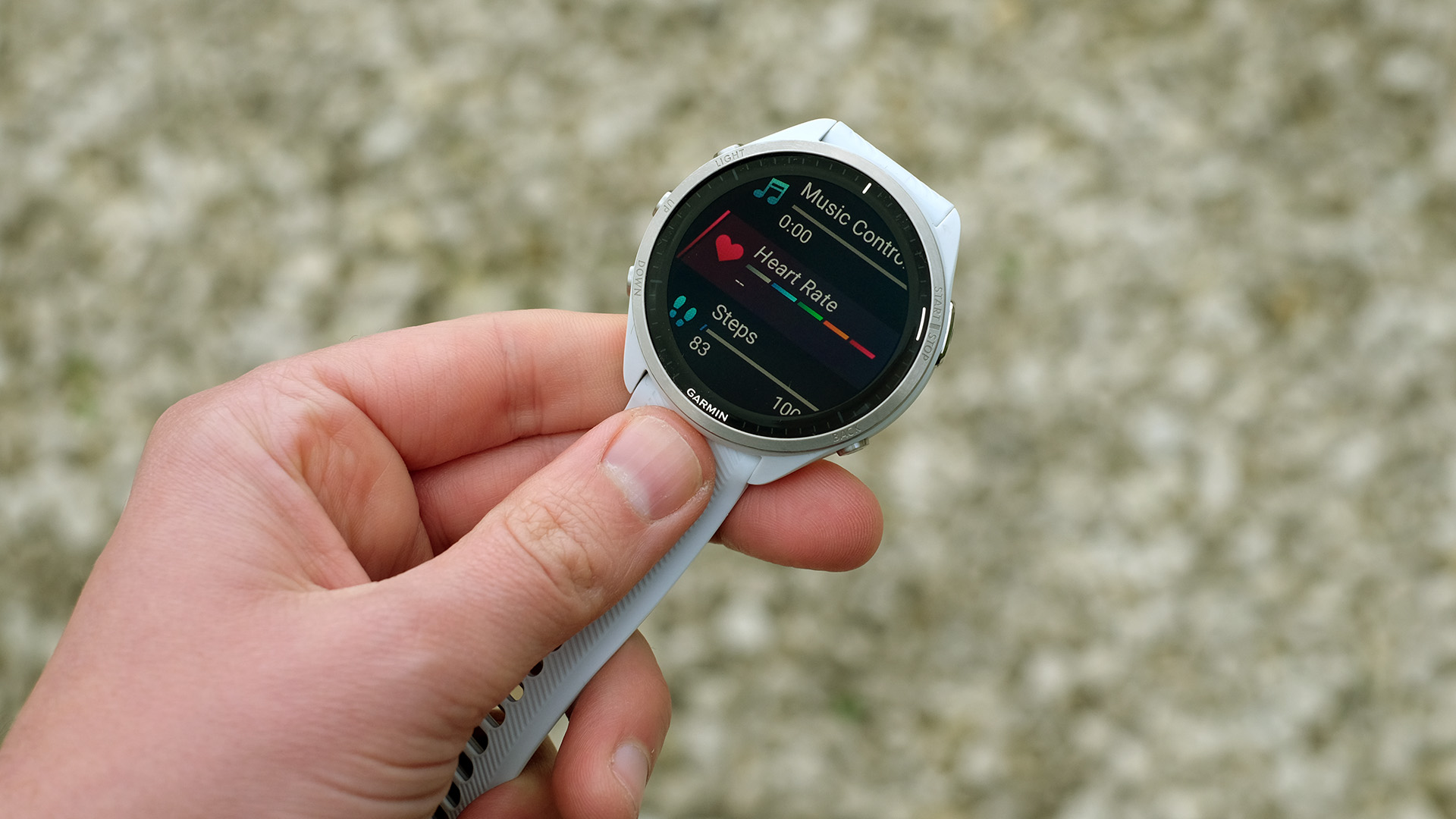
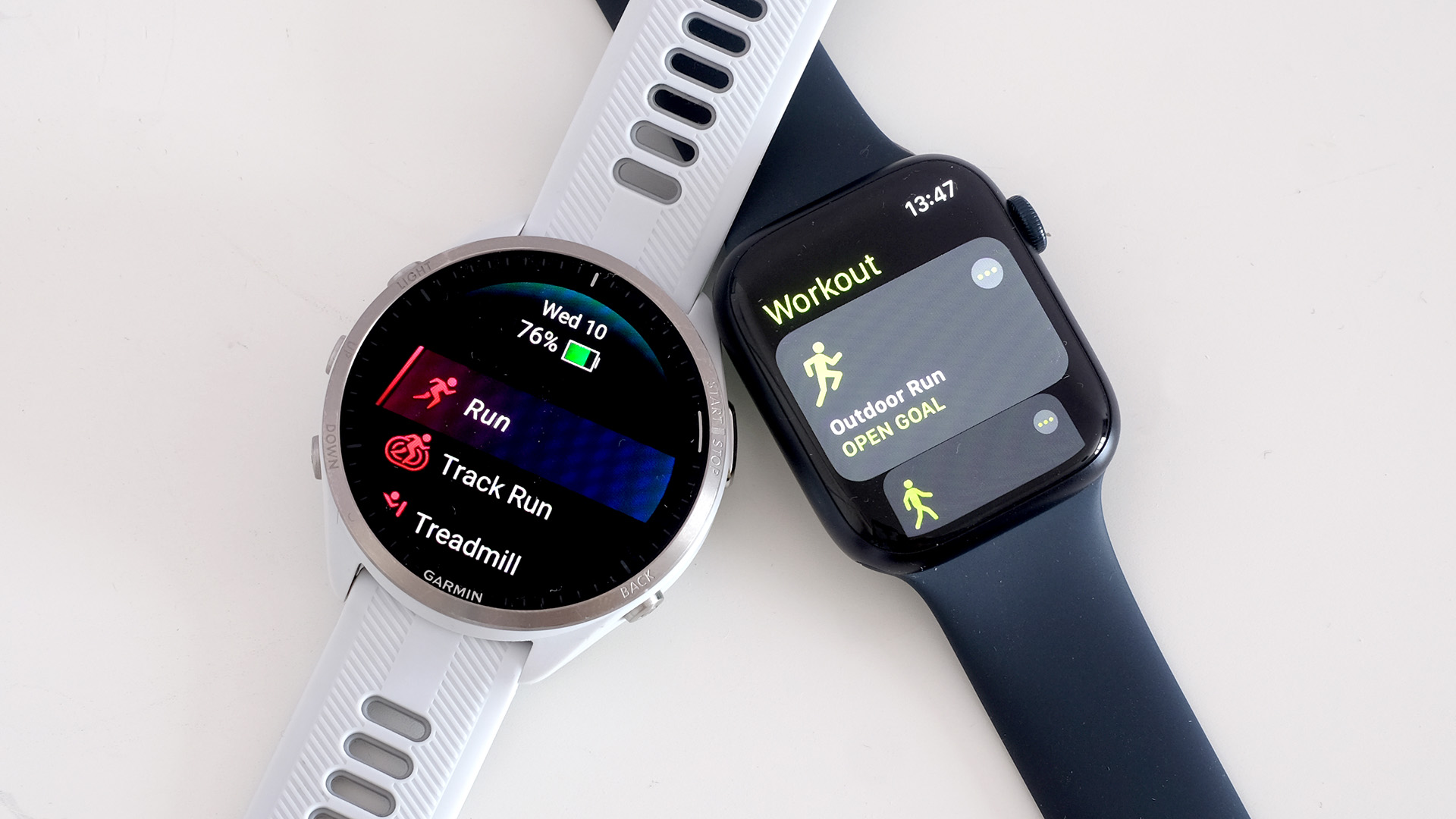

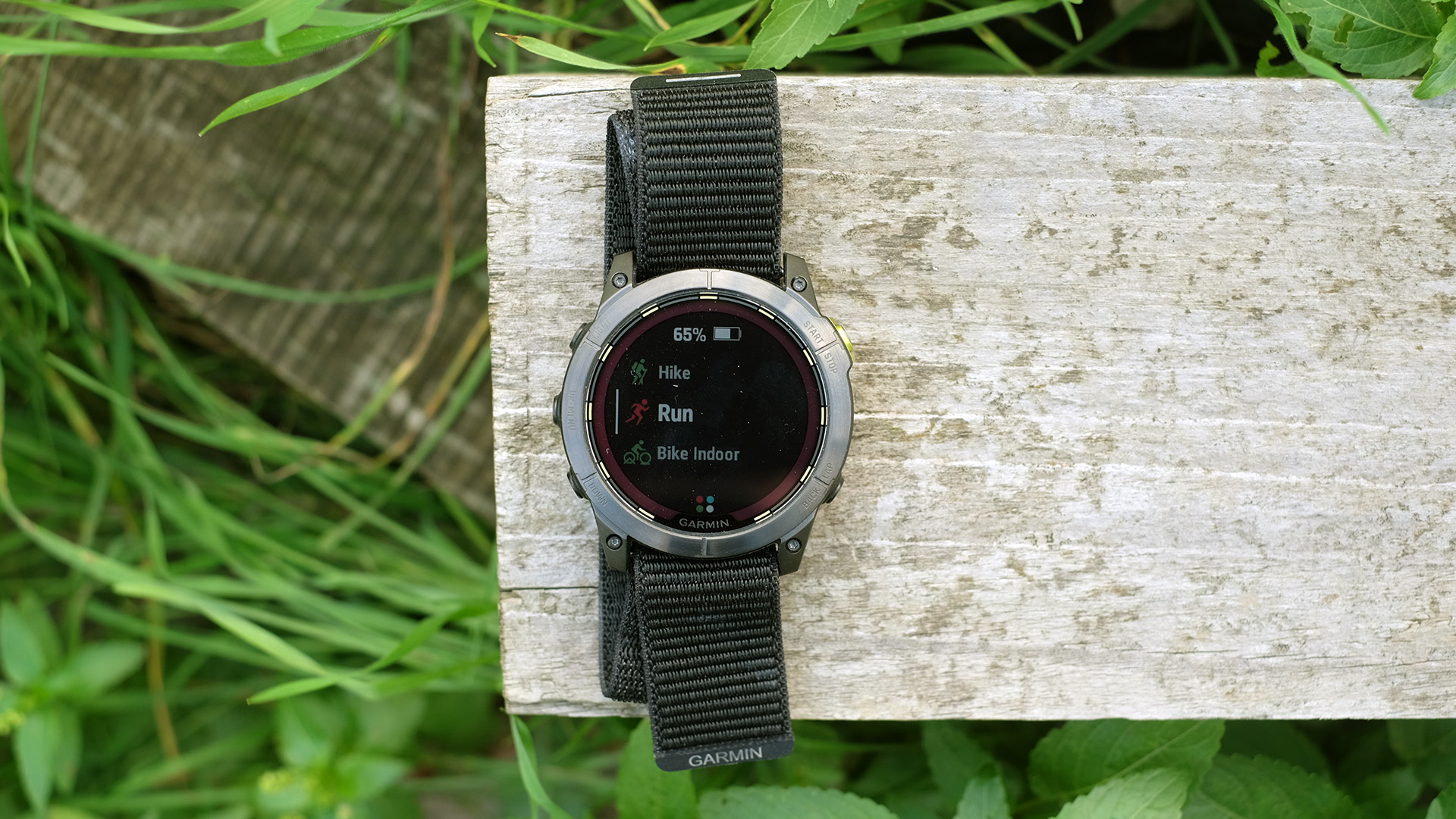

Our reviewers. All of the Garmin watches in this guide have undergone thorough testing by our expert reviewers: a bunch of passionate personal trainers, semi-professional athletes and everyday fitness fanatics who use advanced fitness tech on a daily basis. Over the years, we have tried and tested dozens of models with the iconic Garmin logo, many of which are still on our wrists to this day. We know which of these top-shelf smartwatches are worth investing in and which are better given a miss. You can have confidence in our verdicts.
Since no two people are the same, we strive to look at fitness trackers through an objective lens. This means we test all Garmin watches to the exact same standard, using the same procedures. After wearing each watch for at least a week, we rank it across the following categories:
Design. We look at the durability, appearance and overall functionality of the Garmin watch in question. We assess whether it is intuitive to use, comfortable to wear and sturdy enough to withstand minor scuffs and scratches. We also make note of its dustproof and waterproof ratings, customization options and any design aspects that could enhance or impede the user experience. Put simply, we want to know who this Garmin was made for, and whether it can actually survive the conditions it was designed for.
Display. This is where we focus on arguably the most important part of a Garmin watch — its display. We look at the dimensions, durability and resolution of the screen, and check whether it remains functional and easy to read in challenging circumstances (for example, at night or in direct sunlight). We also assess the touchscreen's responsiveness and deduct points for any lags or performance issues we have experienced during testing.
Features. We want to know the ins and outs of every setting of the tested Garmin watch. For example, how complex are its health and fitness tracking features? How fast and precise are its GPS navigation systems? Can this Garmin watch store music files and on-watch maps or connect to third-party apps? Can it pass for a smartwatch? Also, does it offer personalized health advice, and if so, is this guidance actionable and easy to understand?
Performance. We put all Garmin watches through their paces to get a full picture of their tracking performance, battery life and connectivity. We test them during the day, when sleeping and while performing different workouts, regularly switching between different energy-use settings and activity modes. Finally, we assess the accuracy of Garmin's heart rate sensor using a validated chest-strap heart rate monitor (such as the Polar H9).
Value for money. Finally, we give our verdict on the important question: does this Garmin watch live up to its price tag?
After testing, we use these categories to calculate a final score out of five, and decide whether the Garmin watch in question earned a spot in our roundup of the best Garmin watches on the market.
Latest updates
September 29, 2025: We added the Garmin Forerunner 570 as the second-best mid-range option.
September 2, 2025: We added the Garmin Forerunner 970 as the second-best option.
June 19, 2025: We added the Garmin Forerunner 165 as the second-best budget option.
May 21, 2025: We added the Garmin Vivoactive 6 as the best option for hikers.
Get the world’s most fascinating discoveries delivered straight to your inbox.
Andrew Williams is a freelance journalist based near London. He has written about tech for over a decade, contributing to sites such as WIRED, TechRadar, TrustedReviews, Wareable, Stuff, T3, Pocket-lint and many others. When he's not covering fitness tech, he writes about mobile phones and computing, as well as cameras.
- Chris McMullenContributing writer
- Kat BaylyContributing expert



